Quick filters:
Prisoners punishment Stock Photos and Images
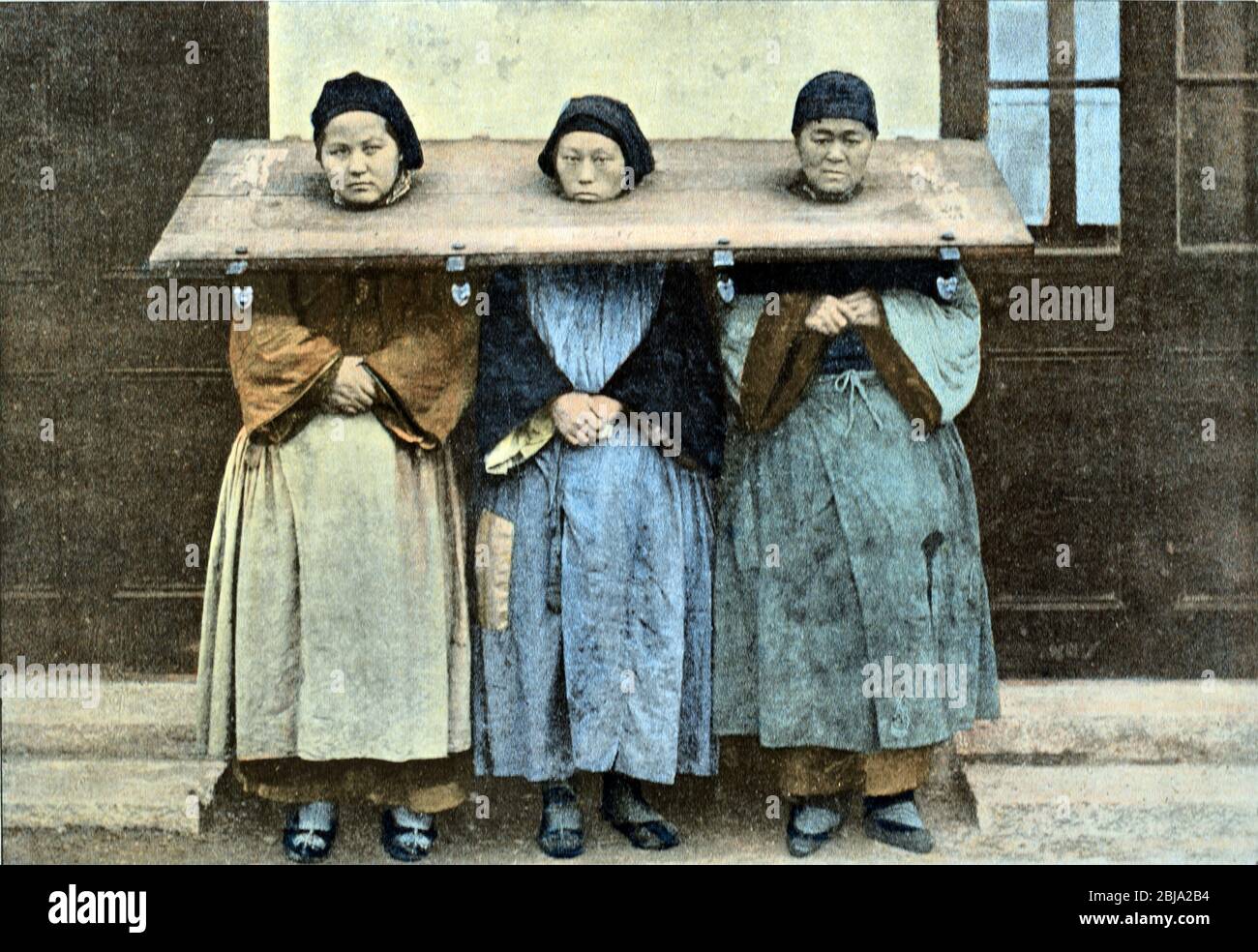 Three Women or Female Vietnamese Prisoners Wearing a Cangue or Tcha, a Form of Neck Yoke or Pillory Used as Punishment or Torture of Prisoners in Vietnam and Elsewhere in Southeast Asia c1890 Stock Photohttps://www.alamy.com/image-license-details/?v=1https://www.alamy.com/three-women-or-female-vietnamese-prisoners-wearing-a-cangue-or-tcha-a-form-of-neck-yoke-or-pillory-used-as-punishment-or-torture-of-prisoners-in-vietnam-and-elsewhere-in-southeast-asia-c1890-image355492568.html
Three Women or Female Vietnamese Prisoners Wearing a Cangue or Tcha, a Form of Neck Yoke or Pillory Used as Punishment or Torture of Prisoners in Vietnam and Elsewhere in Southeast Asia c1890 Stock Photohttps://www.alamy.com/image-license-details/?v=1https://www.alamy.com/three-women-or-female-vietnamese-prisoners-wearing-a-cangue-or-tcha-a-form-of-neck-yoke-or-pillory-used-as-punishment-or-torture-of-prisoners-in-vietnam-and-elsewhere-in-southeast-asia-c1890-image355492568.htmlRF2BJA2B4–Three Women or Female Vietnamese Prisoners Wearing a Cangue or Tcha, a Form of Neck Yoke or Pillory Used as Punishment or Torture of Prisoners in Vietnam and Elsewhere in Southeast Asia c1890
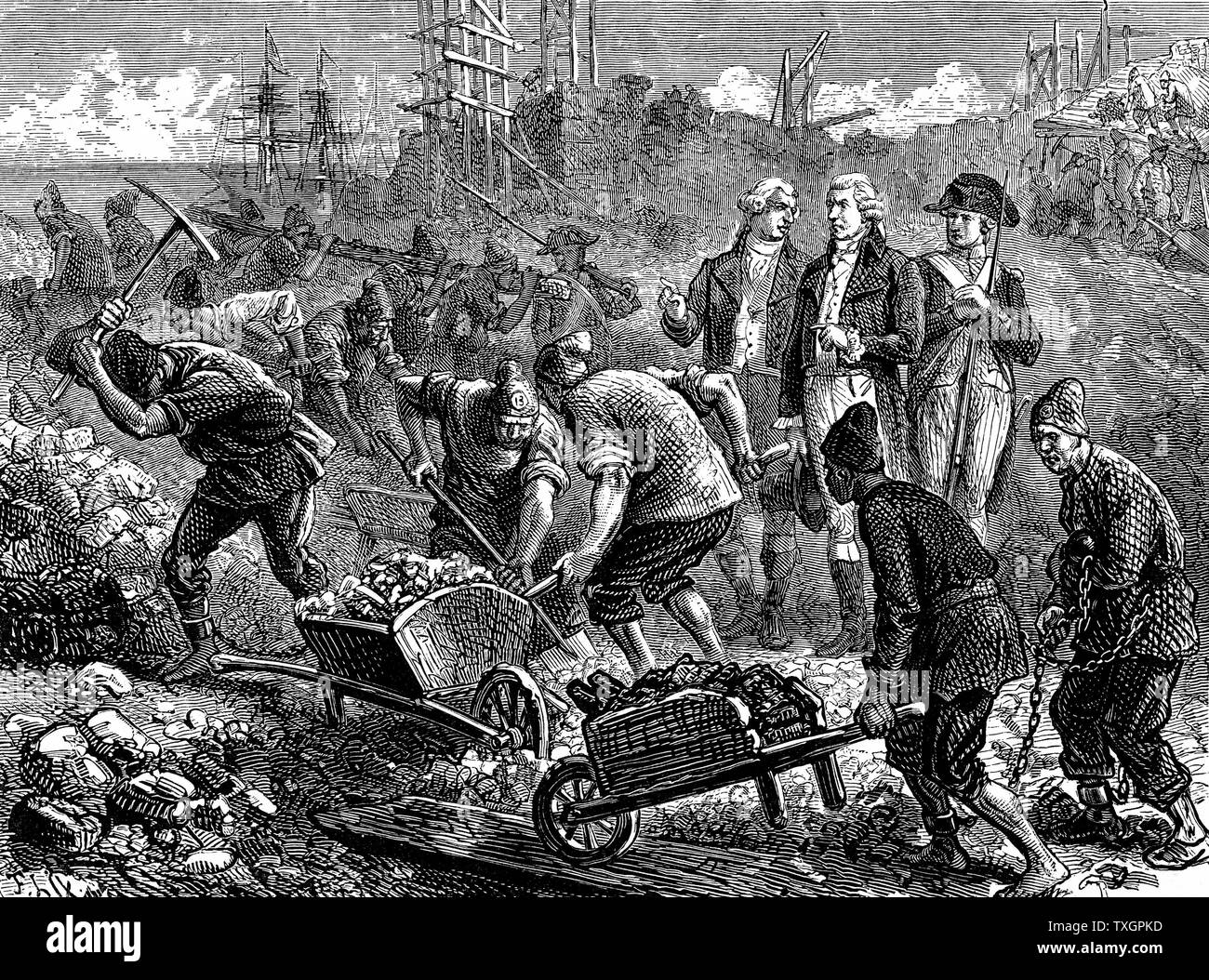 John Howard (1726-1790) English prison reformer, inspecting French galley prisoners at work. Howard League for Prison Reform named after him c1880 Wood engraving Stock Photohttps://www.alamy.com/image-license-details/?v=1https://www.alamy.com/john-howard-1726-1790-english-prison-reformer-inspecting-french-galley-prisoners-at-work-howard-league-for-prison-reform-named-after-him-c1880-wood-engraving-image257295233.html
John Howard (1726-1790) English prison reformer, inspecting French galley prisoners at work. Howard League for Prison Reform named after him c1880 Wood engraving Stock Photohttps://www.alamy.com/image-license-details/?v=1https://www.alamy.com/john-howard-1726-1790-english-prison-reformer-inspecting-french-galley-prisoners-at-work-howard-league-for-prison-reform-named-after-him-c1880-wood-engraving-image257295233.htmlRMTXGPKD–John Howard (1726-1790) English prison reformer, inspecting French galley prisoners at work. Howard League for Prison Reform named after him c1880 Wood engraving
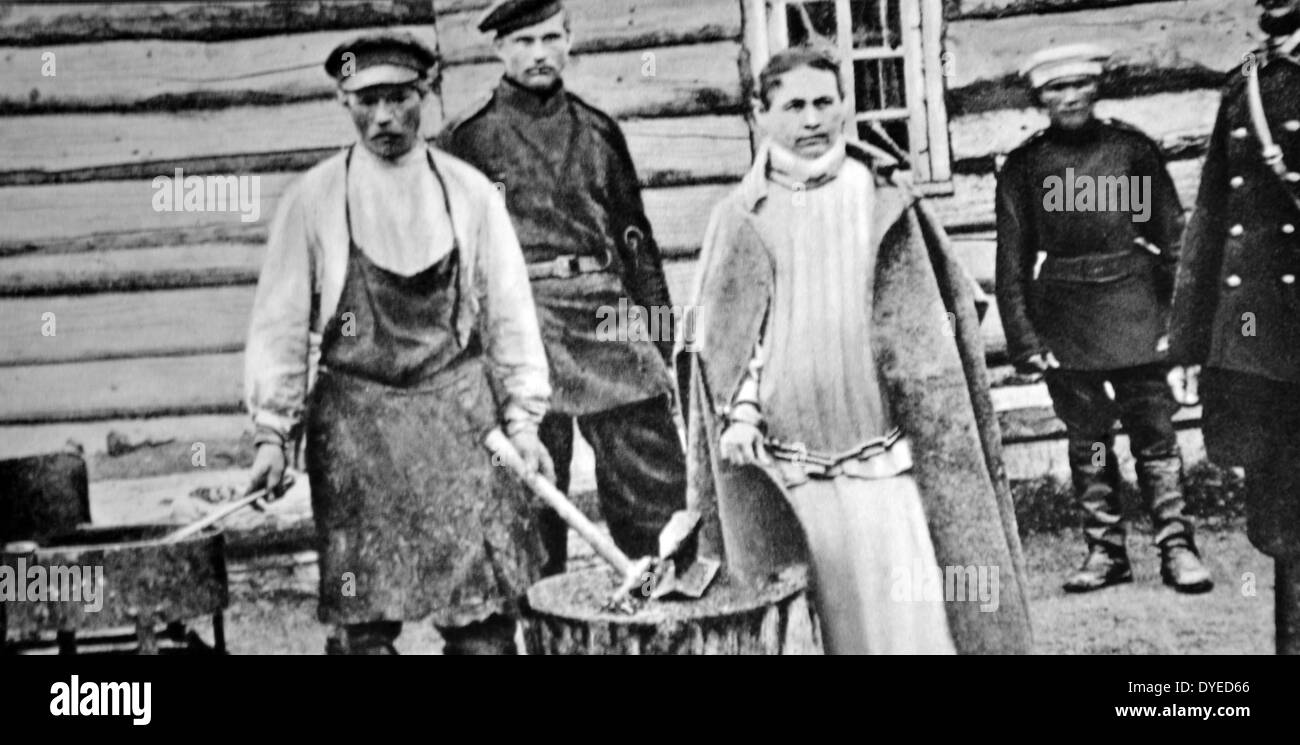 A photograph of a female and male prisoners working outdoors with soldiers monitoring them. Dated 1908. Stock Photohttps://www.alamy.com/image-license-details/?v=1https://www.alamy.com/a-photograph-of-a-female-and-male-prisoners-working-outdoors-with-image68544510.html
A photograph of a female and male prisoners working outdoors with soldiers monitoring them. Dated 1908. Stock Photohttps://www.alamy.com/image-license-details/?v=1https://www.alamy.com/a-photograph-of-a-female-and-male-prisoners-working-outdoors-with-image68544510.htmlRMDYED66–A photograph of a female and male prisoners working outdoors with soldiers monitoring them. Dated 1908.
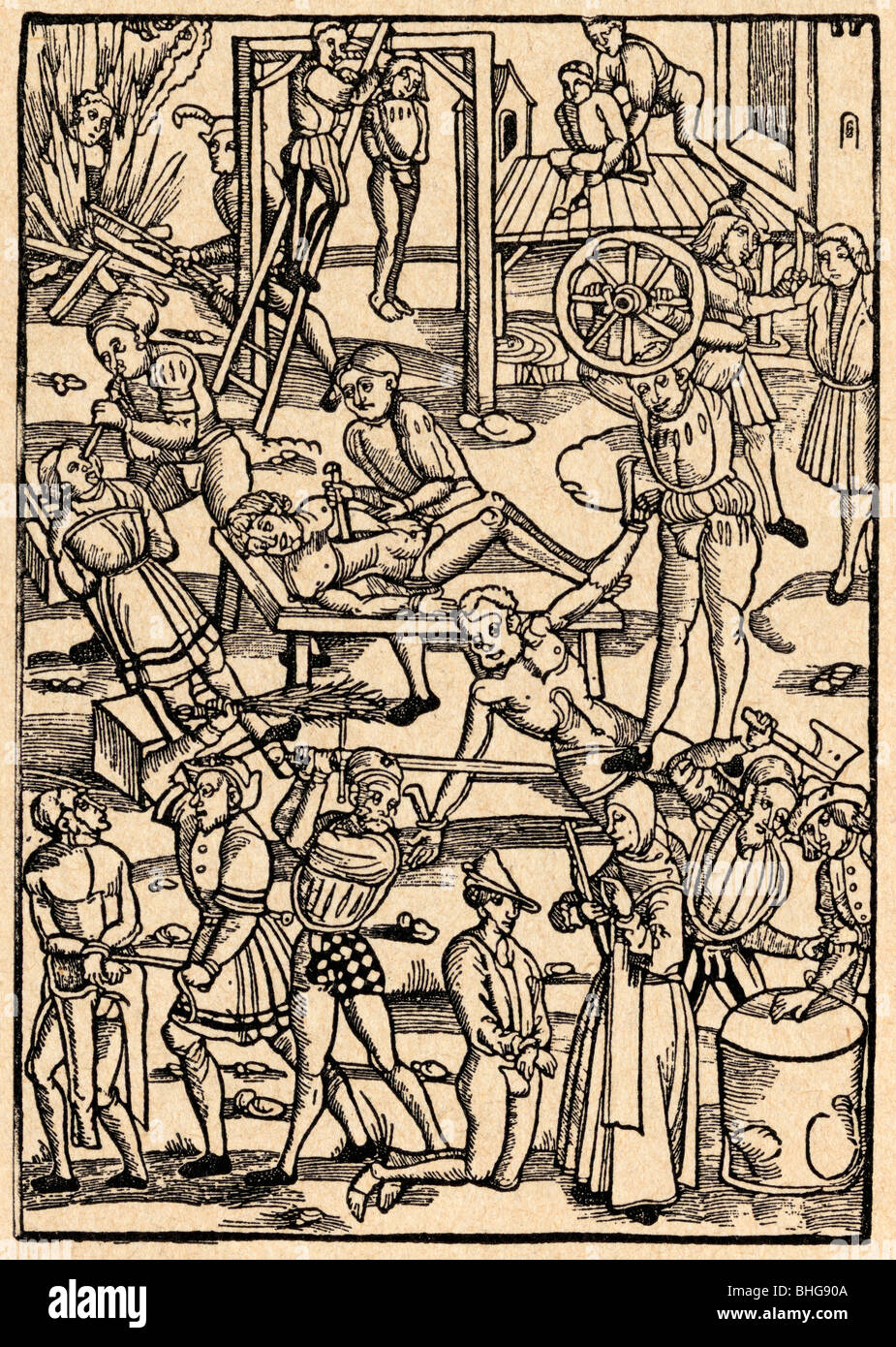 Torture and execution methods in the Middle Ages. Stock Photohttps://www.alamy.com/image-license-details/?v=1https://www.alamy.com/stock-photo-torture-and-execution-methods-in-the-middle-ages-28017818.html
Torture and execution methods in the Middle Ages. Stock Photohttps://www.alamy.com/image-license-details/?v=1https://www.alamy.com/stock-photo-torture-and-execution-methods-in-the-middle-ages-28017818.htmlRMBHG90A–Torture and execution methods in the Middle Ages.
 1960s shot of the hollow baobab tree used as a 'prison tree' in Western Australia, scanned from 35mm transparency Stock Photohttps://www.alamy.com/image-license-details/?v=1https://www.alamy.com/1960s-shot-of-the-hollow-baobab-tree-used-as-a-prison-tree-in-western-australia-scanned-from-35mm-transparency-image627439177.html
1960s shot of the hollow baobab tree used as a 'prison tree' in Western Australia, scanned from 35mm transparency Stock Photohttps://www.alamy.com/image-license-details/?v=1https://www.alamy.com/1960s-shot-of-the-hollow-baobab-tree-used-as-a-prison-tree-in-western-australia-scanned-from-35mm-transparency-image627439177.htmlRM2YCP921–1960s shot of the hollow baobab tree used as a 'prison tree' in Western Australia, scanned from 35mm transparency
 A southern chain gang of African American prisoners outside with their work tools. They were forced to perform hard menial tasks as an added form of punishment. Usually found in southern states of America USA 1900-1906 Stock Photohttps://www.alamy.com/image-license-details/?v=1https://www.alamy.com/a-southern-chain-gang-of-african-american-prisoners-outside-with-their-work-tools-they-were-forced-to-perform-hard-menial-tasks-as-an-added-form-of-punishment-usually-found-in-southern-states-of-america-usa-1900-1906-image417495917.html
A southern chain gang of African American prisoners outside with their work tools. They were forced to perform hard menial tasks as an added form of punishment. Usually found in southern states of America USA 1900-1906 Stock Photohttps://www.alamy.com/image-license-details/?v=1https://www.alamy.com/a-southern-chain-gang-of-african-american-prisoners-outside-with-their-work-tools-they-were-forced-to-perform-hard-menial-tasks-as-an-added-form-of-punishment-usually-found-in-southern-states-of-america-usa-1900-1906-image417495917.htmlRM2F76G8D–A southern chain gang of African American prisoners outside with their work tools. They were forced to perform hard menial tasks as an added form of punishment. Usually found in southern states of America USA 1900-1906
 Late 19th century photograph - Chinese prisoners, punishment, cangue or stocks, China. Stock Photohttps://www.alamy.com/image-license-details/?v=1https://www.alamy.com/late-19th-century-photograph-chinese-prisoners-punishment-cangue-or-stocks-china-image401439497.html
Late 19th century photograph - Chinese prisoners, punishment, cangue or stocks, China. Stock Photohttps://www.alamy.com/image-license-details/?v=1https://www.alamy.com/late-19th-century-photograph-chinese-prisoners-punishment-cangue-or-stocks-china-image401439497.htmlRM2E9344W–Late 19th century photograph - Chinese prisoners, punishment, cangue or stocks, China.
 PUNISHMENTS & INSTRUMENTS OF TORTURE FROM THE PAST - A man in a pillory. This form of humiliation was reserved for prisoners who would generally not be liable to execution (e.g. debtors) and would see them exposed to public view in a market or other public place and could be used for punishment by birch, cane or whip or for the cutting off of hair or a body part (e.g. ear|) Stock Photohttps://www.alamy.com/image-license-details/?v=1https://www.alamy.com/punishments-instruments-of-torture-from-the-past-a-man-in-a-pillory-this-form-of-humiliation-was-reserved-for-prisoners-who-would-generally-not-be-liable-to-execution-eg-debtors-and-would-see-them-exposed-to-public-view-in-a-market-or-other-public-place-and-could-be-used-for-punishment-by-birch-cane-or-whip-or-for-the-cutting-off-of-hair-or-a-body-part-eg-ear-image273758284.html
PUNISHMENTS & INSTRUMENTS OF TORTURE FROM THE PAST - A man in a pillory. This form of humiliation was reserved for prisoners who would generally not be liable to execution (e.g. debtors) and would see them exposed to public view in a market or other public place and could be used for punishment by birch, cane or whip or for the cutting off of hair or a body part (e.g. ear|) Stock Photohttps://www.alamy.com/image-license-details/?v=1https://www.alamy.com/punishments-instruments-of-torture-from-the-past-a-man-in-a-pillory-this-form-of-humiliation-was-reserved-for-prisoners-who-would-generally-not-be-liable-to-execution-eg-debtors-and-would-see-them-exposed-to-public-view-in-a-market-or-other-public-place-and-could-be-used-for-punishment-by-birch-cane-or-whip-or-for-the-cutting-off-of-hair-or-a-body-part-eg-ear-image273758284.htmlRMWWANDG–PUNISHMENTS & INSTRUMENTS OF TORTURE FROM THE PAST - A man in a pillory. This form of humiliation was reserved for prisoners who would generally not be liable to execution (e.g. debtors) and would see them exposed to public view in a market or other public place and could be used for punishment by birch, cane or whip or for the cutting off of hair or a body part (e.g. ear|)
 1879: A line of convicts in Richmond Penitentiary, Virginia, United States of America Stock Photohttps://www.alamy.com/image-license-details/?v=1https://www.alamy.com/stock-photo-1879-a-line-of-convicts-in-richmond-penitentiary-virginia-united-states-146744580.html
1879: A line of convicts in Richmond Penitentiary, Virginia, United States of America Stock Photohttps://www.alamy.com/image-license-details/?v=1https://www.alamy.com/stock-photo-1879-a-line-of-convicts-in-richmond-penitentiary-virginia-united-states-146744580.htmlRMJEMP5T–1879: A line of convicts in Richmond Penitentiary, Virginia, United States of America
 Elderly prisoners at work, Onomichi prison, Japan. Stock Photohttps://www.alamy.com/image-license-details/?v=1https://www.alamy.com/stock-photo-elderly-prisoners-at-work-onomichi-prison-japan-17694704.html
Elderly prisoners at work, Onomichi prison, Japan. Stock Photohttps://www.alamy.com/image-license-details/?v=1https://www.alamy.com/stock-photo-elderly-prisoners-at-work-onomichi-prison-japan-17694704.htmlRMB0P1NM–Elderly prisoners at work, Onomichi prison, Japan.
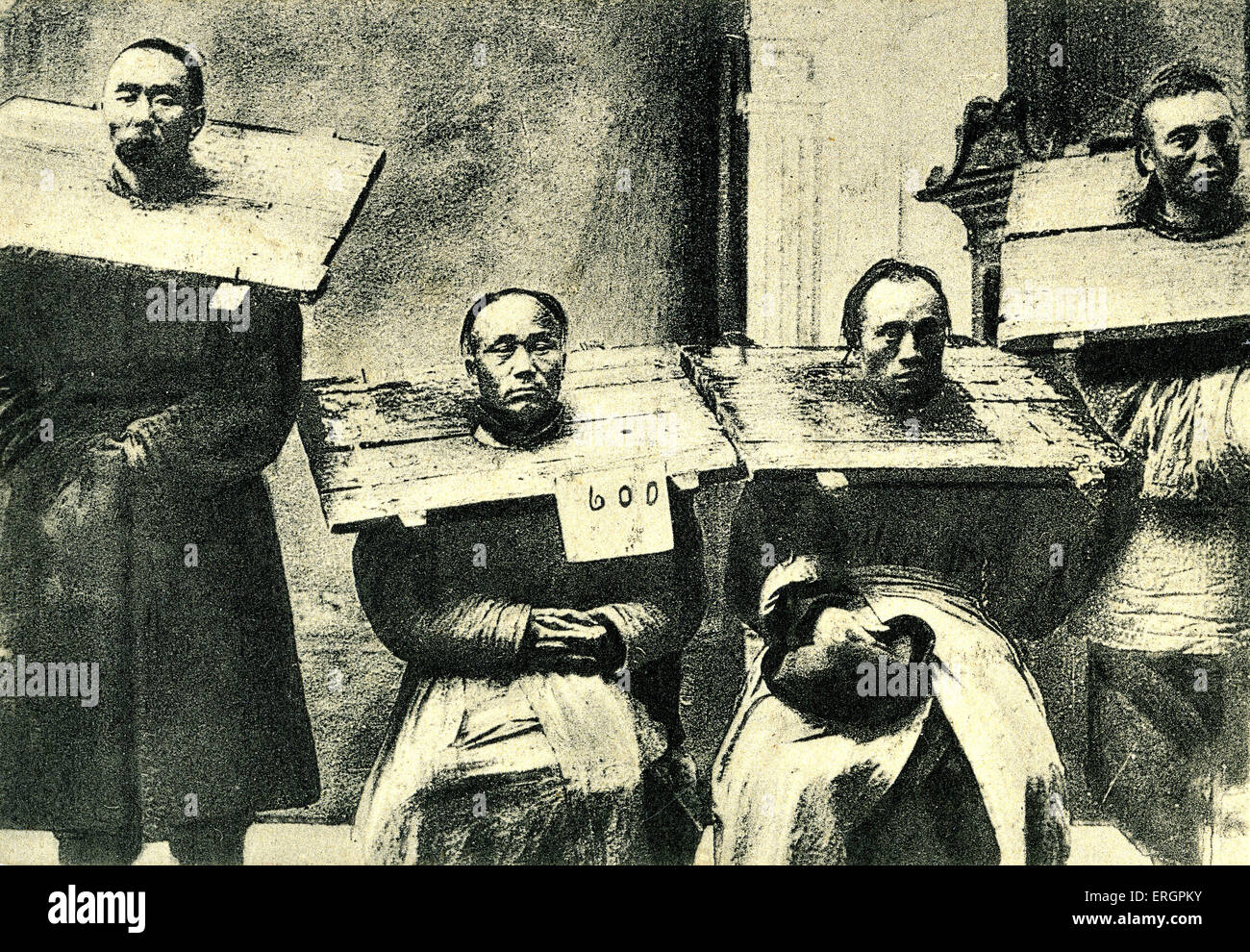 Prisoners wearing the cangue, a device used for corporal punishment and humiliation. The size and weight varied as a measure of Stock Photohttps://www.alamy.com/image-license-details/?v=1https://www.alamy.com/stock-photo-prisoners-wearing-the-cangue-a-device-used-for-corporal-punishment-83347599.html
Prisoners wearing the cangue, a device used for corporal punishment and humiliation. The size and weight varied as a measure of Stock Photohttps://www.alamy.com/image-license-details/?v=1https://www.alamy.com/stock-photo-prisoners-wearing-the-cangue-a-device-used-for-corporal-punishment-83347599.htmlRMERGPKY–Prisoners wearing the cangue, a device used for corporal punishment and humiliation. The size and weight varied as a measure of
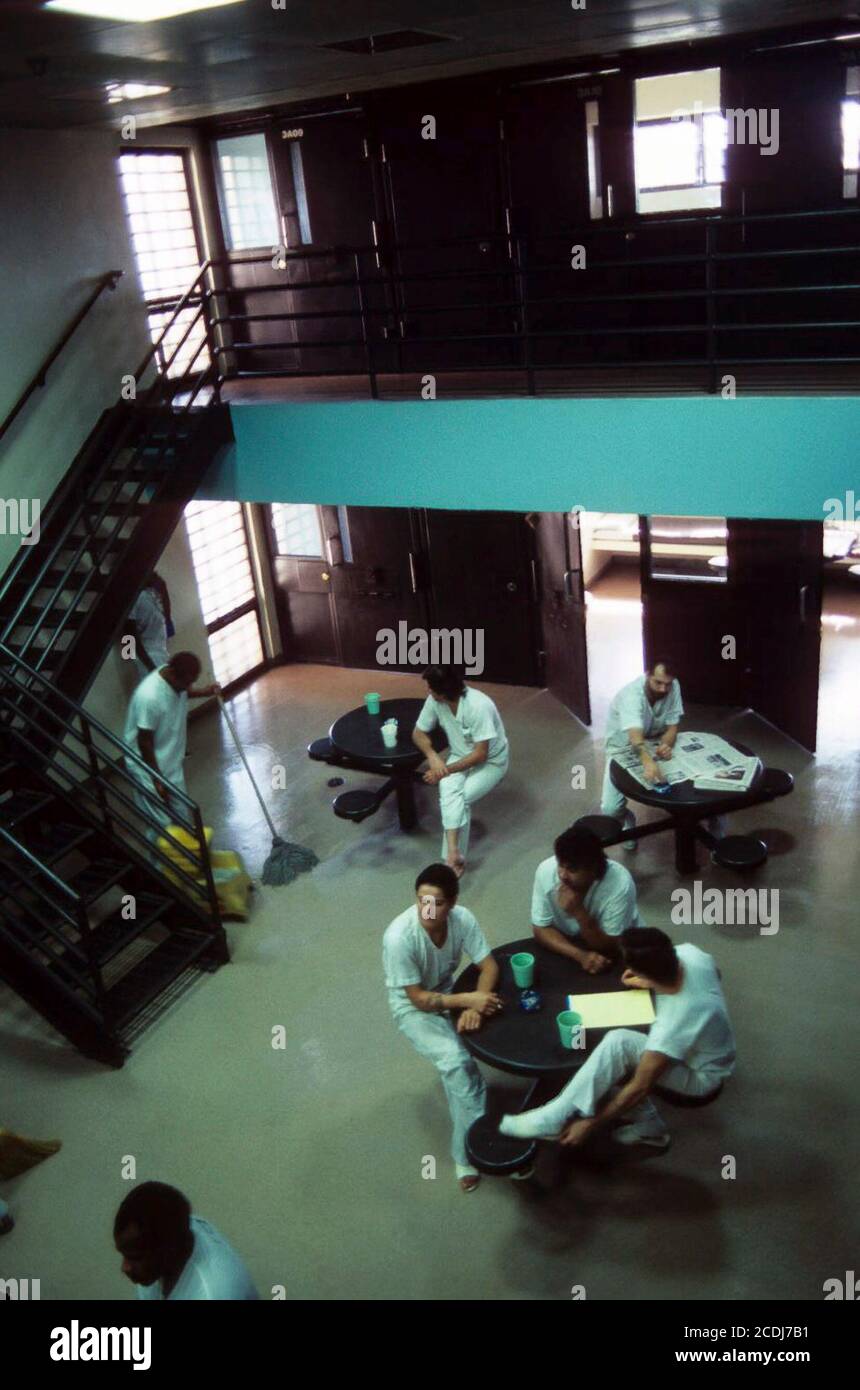 Inmates in Travis County jail in Austin, Texas. No releases ©Bob Daemmrich Stock Photohttps://www.alamy.com/image-license-details/?v=1https://www.alamy.com/inmates-in-travis-county-jail-in-austin-texas-no-releases-bob-daemmrich-image369809189.html
Inmates in Travis County jail in Austin, Texas. No releases ©Bob Daemmrich Stock Photohttps://www.alamy.com/image-license-details/?v=1https://www.alamy.com/inmates-in-travis-county-jail-in-austin-texas-no-releases-bob-daemmrich-image369809189.htmlRM2CDJ7B1–Inmates in Travis County jail in Austin, Texas. No releases ©Bob Daemmrich
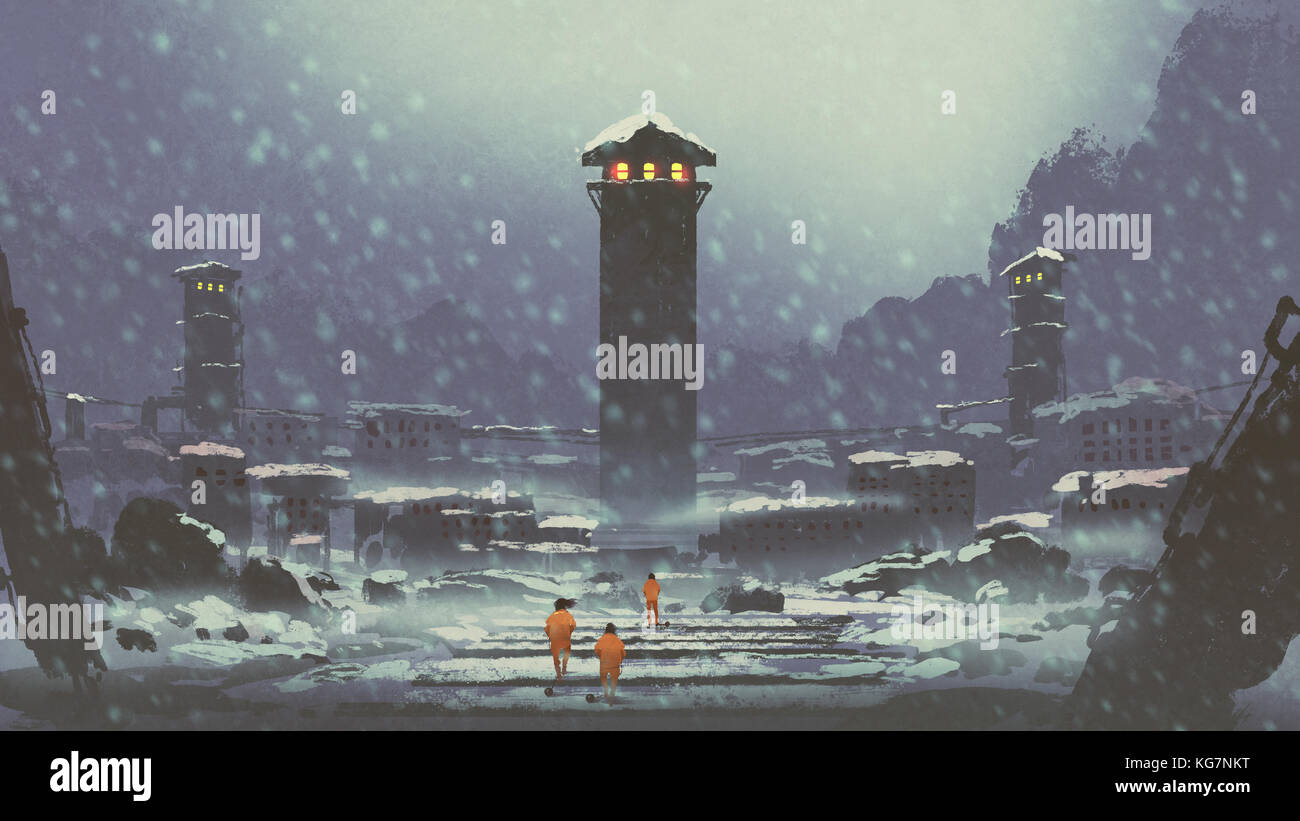 three prisoners walking in the abandoned prison in winter, digital art style, illustration painting Stock Photohttps://www.alamy.com/image-license-details/?v=1https://www.alamy.com/stock-image-three-prisoners-walking-in-the-abandoned-prison-in-winter-digital-164898492.html
three prisoners walking in the abandoned prison in winter, digital art style, illustration painting Stock Photohttps://www.alamy.com/image-license-details/?v=1https://www.alamy.com/stock-image-three-prisoners-walking-in-the-abandoned-prison-in-winter-digital-164898492.htmlRFKG7NKT–three prisoners walking in the abandoned prison in winter, digital art style, illustration painting
 Prisoners inside their cells at Dartmoor Prison making soft toys for local childrens charities. December 1969 Z11562 Stock Photohttps://www.alamy.com/image-license-details/?v=1https://www.alamy.com/stock-photo-prisoners-inside-their-cells-at-dartmoor-prison-making-soft-toys-for-20387710.html
Prisoners inside their cells at Dartmoor Prison making soft toys for local childrens charities. December 1969 Z11562 Stock Photohttps://www.alamy.com/image-license-details/?v=1https://www.alamy.com/stock-photo-prisoners-inside-their-cells-at-dartmoor-prison-making-soft-toys-for-20387710.htmlRMB54MME–Prisoners inside their cells at Dartmoor Prison making soft toys for local childrens charities. December 1969 Z11562
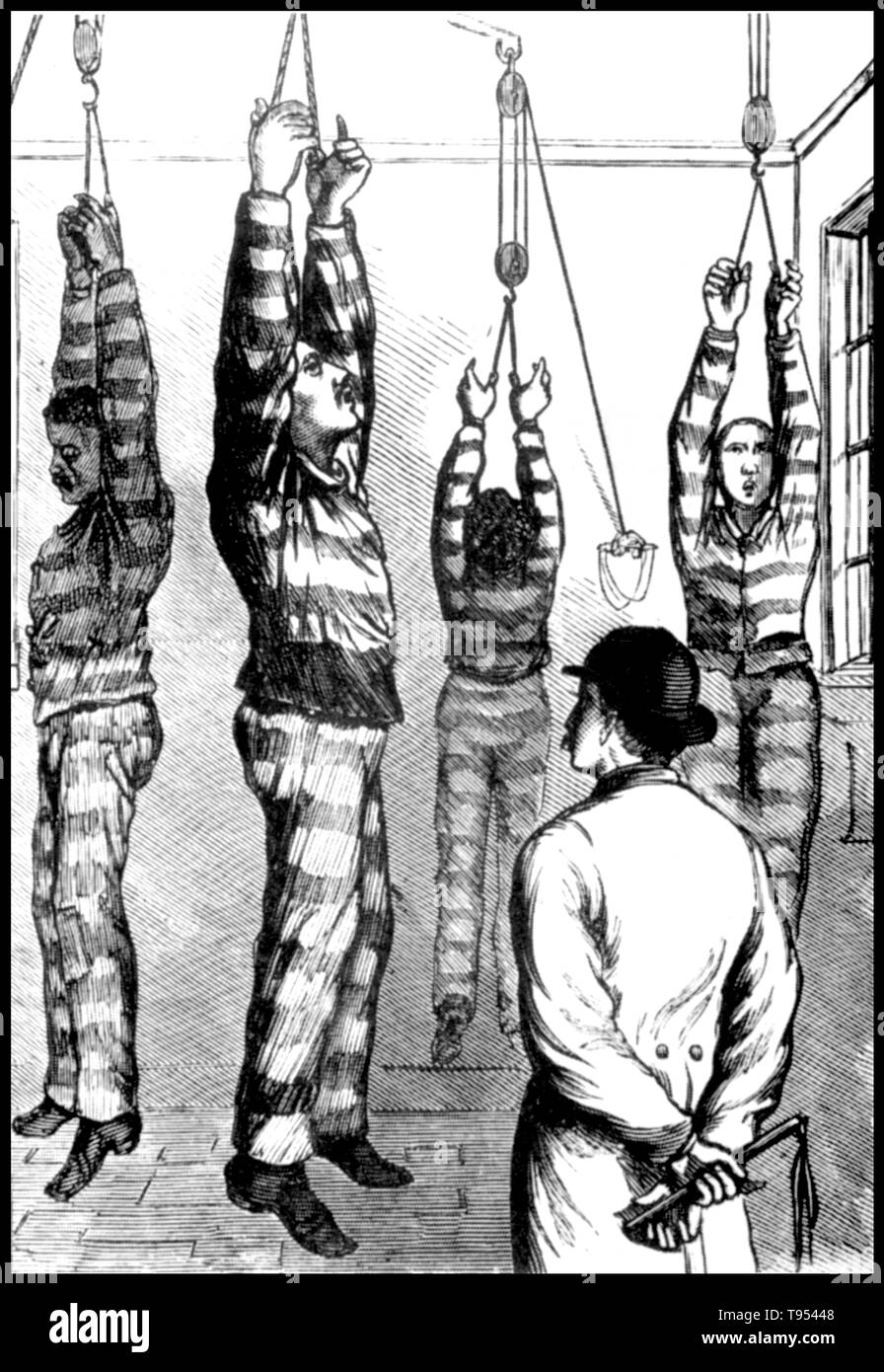 Hanging by thumbs, 'the trapeze', means, quite simply, being suspended from just your thumbs. It was used to deal with difficult prisoners, including those who tried to escape. After being suspended like that for a long time, thumbs became deformed and hands disabled. They would then be unable to fulfill their labor duties, making them subject to more punishment. Unknown source, 1871. Stock Photohttps://www.alamy.com/image-license-details/?v=1https://www.alamy.com/hanging-by-thumbs-the-trapeze-means-quite-simply-being-suspended-from-just-your-thumbs-it-was-used-to-deal-with-difficult-prisoners-including-those-who-tried-to-escape-after-being-suspended-like-that-for-a-long-time-thumbs-became-deformed-and-hands-disabled-they-would-then-be-unable-to-fulfill-their-labor-duties-making-them-subject-to-more-punishment-unknown-source-1871-image246590072.html
Hanging by thumbs, 'the trapeze', means, quite simply, being suspended from just your thumbs. It was used to deal with difficult prisoners, including those who tried to escape. After being suspended like that for a long time, thumbs became deformed and hands disabled. They would then be unable to fulfill their labor duties, making them subject to more punishment. Unknown source, 1871. Stock Photohttps://www.alamy.com/image-license-details/?v=1https://www.alamy.com/hanging-by-thumbs-the-trapeze-means-quite-simply-being-suspended-from-just-your-thumbs-it-was-used-to-deal-with-difficult-prisoners-including-those-who-tried-to-escape-after-being-suspended-like-that-for-a-long-time-thumbs-became-deformed-and-hands-disabled-they-would-then-be-unable-to-fulfill-their-labor-duties-making-them-subject-to-more-punishment-unknown-source-1871-image246590072.htmlRMT95448–Hanging by thumbs, 'the trapeze', means, quite simply, being suspended from just your thumbs. It was used to deal with difficult prisoners, including those who tried to escape. After being suspended like that for a long time, thumbs became deformed and hands disabled. They would then be unable to fulfill their labor duties, making them subject to more punishment. Unknown source, 1871.
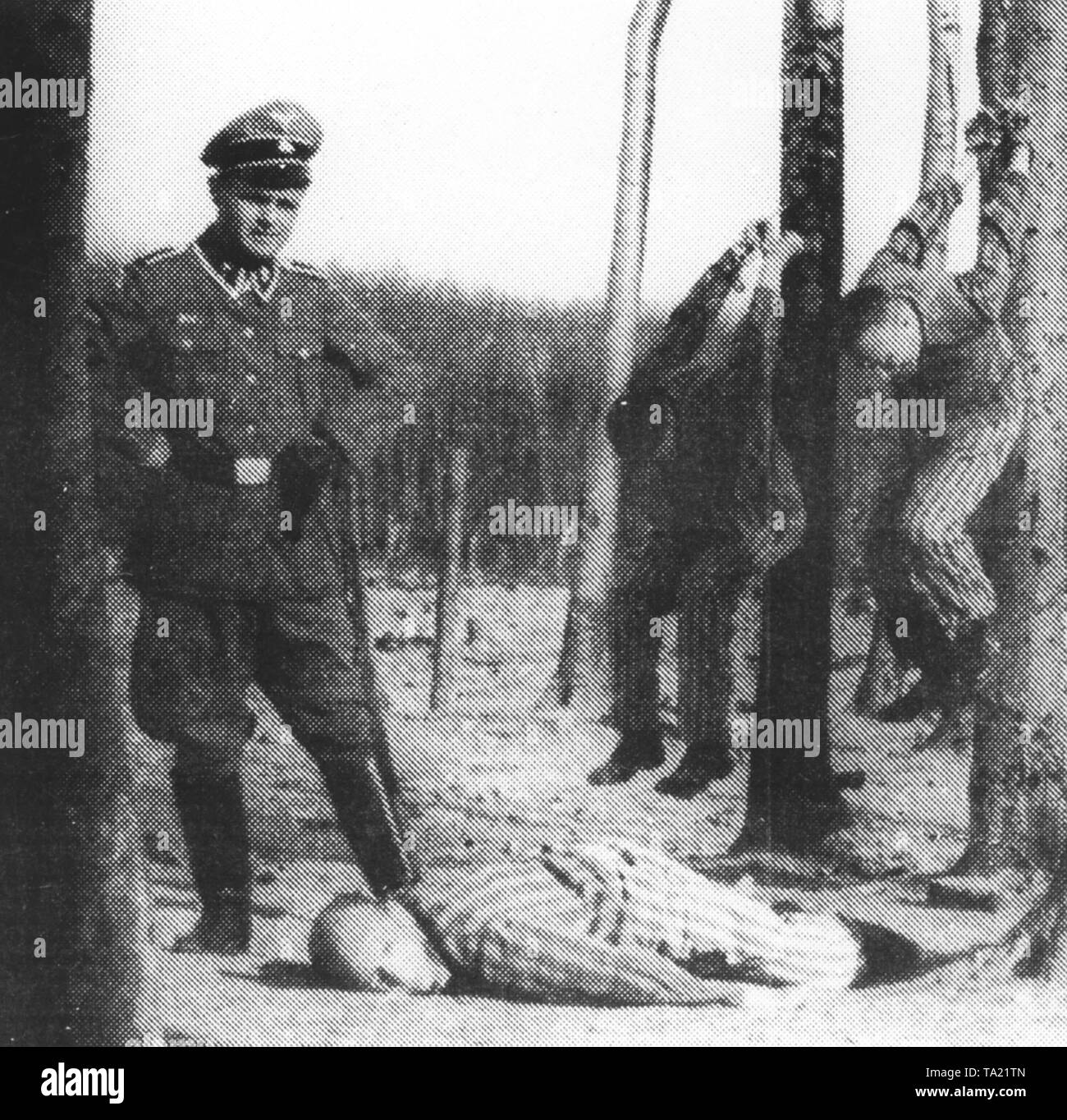 SS soldier poses next to prisoners who are subjected to the punishment of the tree hanging. The image is a mock recording, possibly provided by the DEFA for political reasons in 1958. See: Herbert Obenaus, The photo of tree-hanging - a picture goes around the world in: Memorials-Newsletter 68 (Okt.1995), pp 3-8. The image is inverted. Stock Photohttps://www.alamy.com/image-license-details/?v=1https://www.alamy.com/ss-soldier-poses-next-to-prisoners-who-are-subjected-to-the-punishment-of-the-tree-hanging-the-image-is-a-mock-recording-possibly-provided-by-the-defa-for-political-reasons-in-1958-see-herbert-obenaus-the-photo-of-tree-hanging-a-picture-goes-around-the-world-in-memorials-newsletter-68-okt1995-pp-3-8-the-image-is-inverted-image247137093.html
SS soldier poses next to prisoners who are subjected to the punishment of the tree hanging. The image is a mock recording, possibly provided by the DEFA for political reasons in 1958. See: Herbert Obenaus, The photo of tree-hanging - a picture goes around the world in: Memorials-Newsletter 68 (Okt.1995), pp 3-8. The image is inverted. Stock Photohttps://www.alamy.com/image-license-details/?v=1https://www.alamy.com/ss-soldier-poses-next-to-prisoners-who-are-subjected-to-the-punishment-of-the-tree-hanging-the-image-is-a-mock-recording-possibly-provided-by-the-defa-for-political-reasons-in-1958-see-herbert-obenaus-the-photo-of-tree-hanging-a-picture-goes-around-the-world-in-memorials-newsletter-68-okt1995-pp-3-8-the-image-is-inverted-image247137093.htmlRMTA21TN–SS soldier poses next to prisoners who are subjected to the punishment of the tree hanging. The image is a mock recording, possibly provided by the DEFA for political reasons in 1958. See: Herbert Obenaus, The photo of tree-hanging - a picture goes around the world in: Memorials-Newsletter 68 (Okt.1995), pp 3-8. The image is inverted.
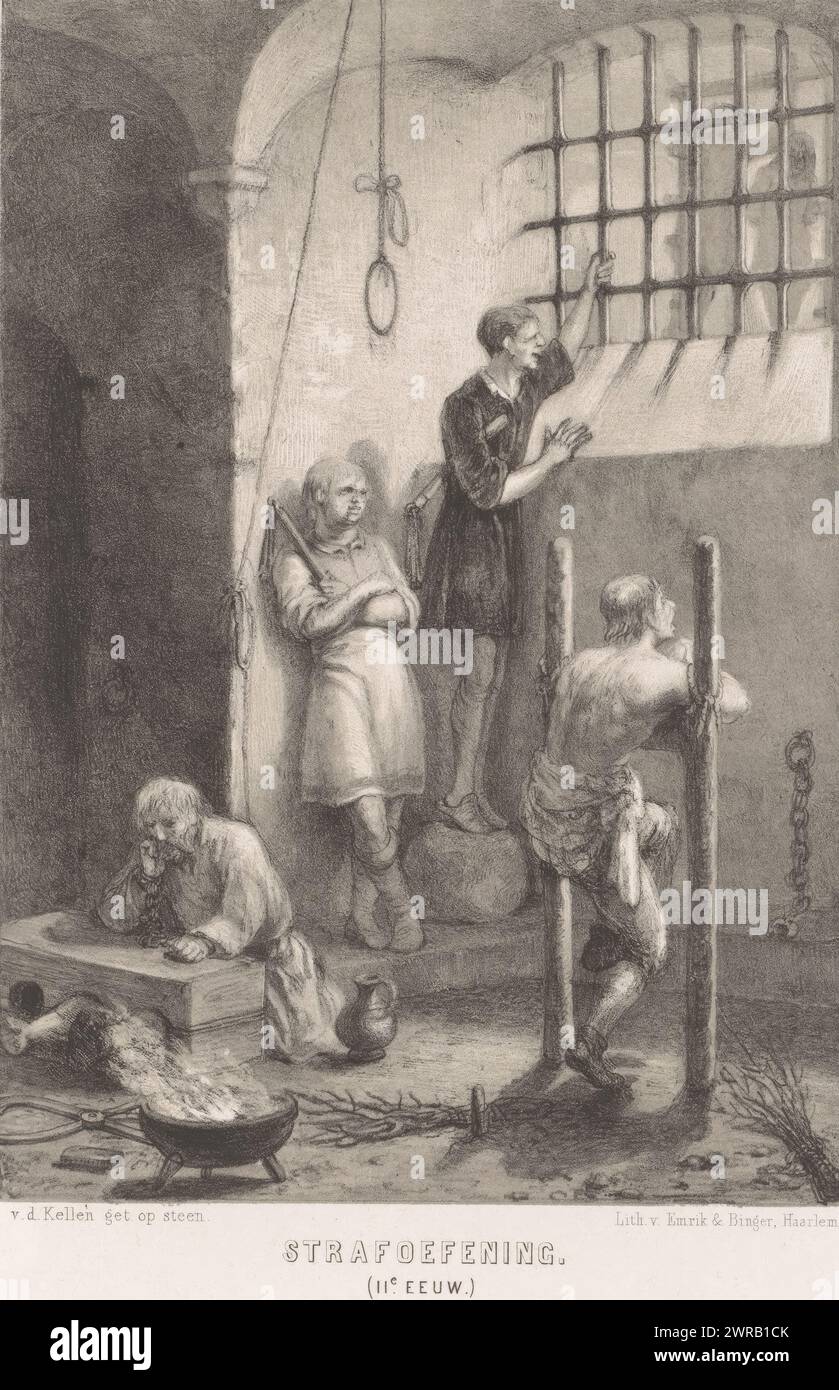 Prison, 11th century, Punishment exercise. (11th century) (title on object), Two chained prisoners and two executioners with torture instruments in a prison in the 11th century. On the right a window to the street., print maker: David van der Kellen (1827-1895), printer: Emrik & Binger, Haarlem, 1857 - 1864, paper, height c. 374 mm × width c. 292 mm, print Stock Photohttps://www.alamy.com/image-license-details/?v=1https://www.alamy.com/prison-11th-century-punishment-exercise-11th-century-title-on-object-two-chained-prisoners-and-two-executioners-with-torture-instruments-in-a-prison-in-the-11th-century-on-the-right-a-window-to-the-street-print-maker-david-van-der-kellen-1827-1895-printer-emrik-binger-haarlem-1857-1864-paper-height-c-374-mm-width-c-292-mm-print-image599532211.html
Prison, 11th century, Punishment exercise. (11th century) (title on object), Two chained prisoners and two executioners with torture instruments in a prison in the 11th century. On the right a window to the street., print maker: David van der Kellen (1827-1895), printer: Emrik & Binger, Haarlem, 1857 - 1864, paper, height c. 374 mm × width c. 292 mm, print Stock Photohttps://www.alamy.com/image-license-details/?v=1https://www.alamy.com/prison-11th-century-punishment-exercise-11th-century-title-on-object-two-chained-prisoners-and-two-executioners-with-torture-instruments-in-a-prison-in-the-11th-century-on-the-right-a-window-to-the-street-print-maker-david-van-der-kellen-1827-1895-printer-emrik-binger-haarlem-1857-1864-paper-height-c-374-mm-width-c-292-mm-print-image599532211.htmlRM2WRB1CK–Prison, 11th century, Punishment exercise. (11th century) (title on object), Two chained prisoners and two executioners with torture instruments in a prison in the 11th century. On the right a window to the street., print maker: David van der Kellen (1827-1895), printer: Emrik & Binger, Haarlem, 1857 - 1864, paper, height c. 374 mm × width c. 292 mm, print
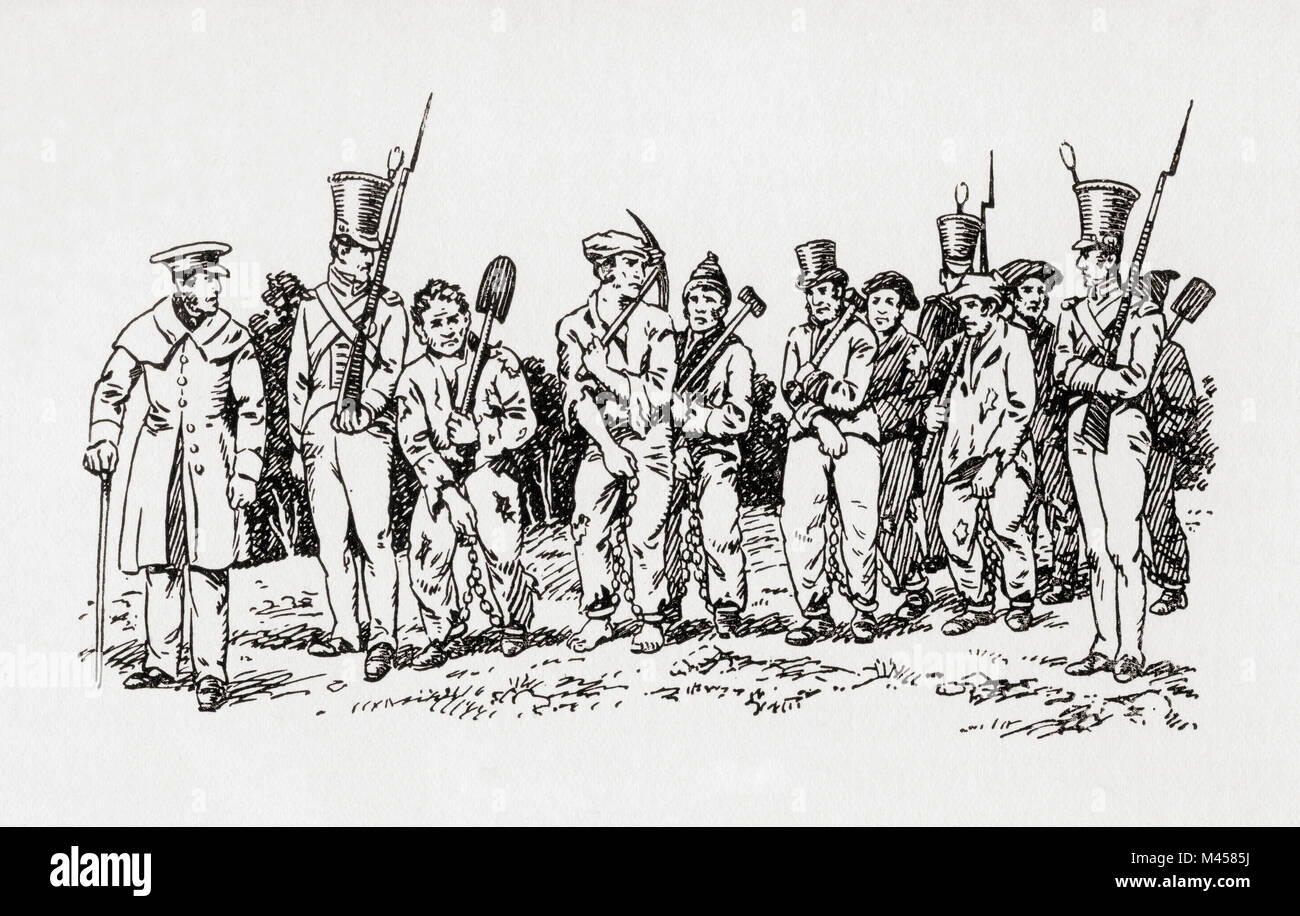 A Hobart chain-gang, a group of prisoners chained together to perform menial or physically challenging work as a form of punishment. From The Martyrs of Tolpuddle, published 1934. Stock Photohttps://www.alamy.com/image-license-details/?v=1https://www.alamy.com/stock-photo-a-hobart-chain-gang-a-group-of-prisoners-chained-together-to-perform-174678494.html
A Hobart chain-gang, a group of prisoners chained together to perform menial or physically challenging work as a form of punishment. From The Martyrs of Tolpuddle, published 1934. Stock Photohttps://www.alamy.com/image-license-details/?v=1https://www.alamy.com/stock-photo-a-hobart-chain-gang-a-group-of-prisoners-chained-together-to-perform-174678494.htmlRMM4585J–A Hobart chain-gang, a group of prisoners chained together to perform menial or physically challenging work as a form of punishment. From The Martyrs of Tolpuddle, published 1934.
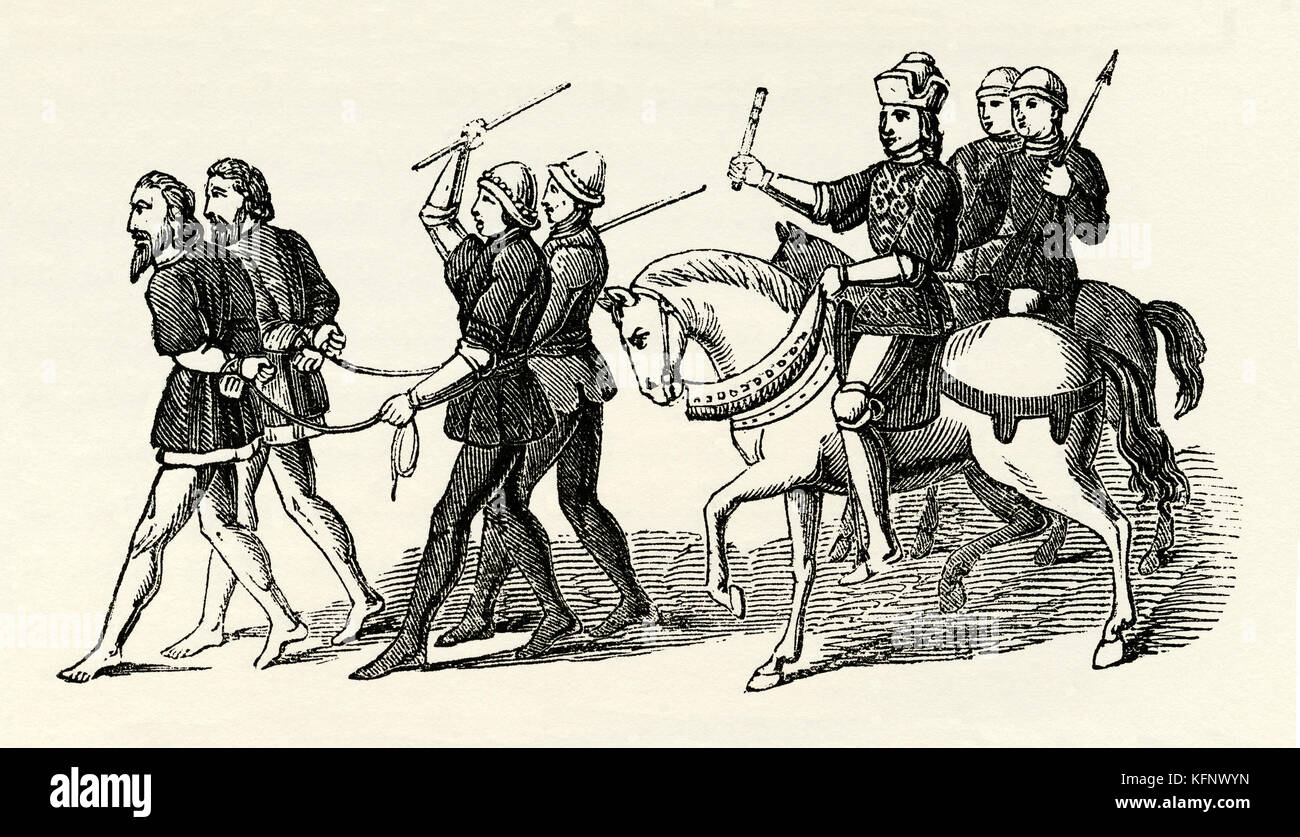 Old Medieval engraving showing criminals or prisoners under armed escort Stock Photohttps://www.alamy.com/image-license-details/?v=1https://www.alamy.com/stock-image-old-medieval-engraving-showing-criminals-or-prisoners-under-armed-164594521.html
Old Medieval engraving showing criminals or prisoners under armed escort Stock Photohttps://www.alamy.com/image-license-details/?v=1https://www.alamy.com/stock-image-old-medieval-engraving-showing-criminals-or-prisoners-under-armed-164594521.htmlRMKFNWYN–Old Medieval engraving showing criminals or prisoners under armed escort
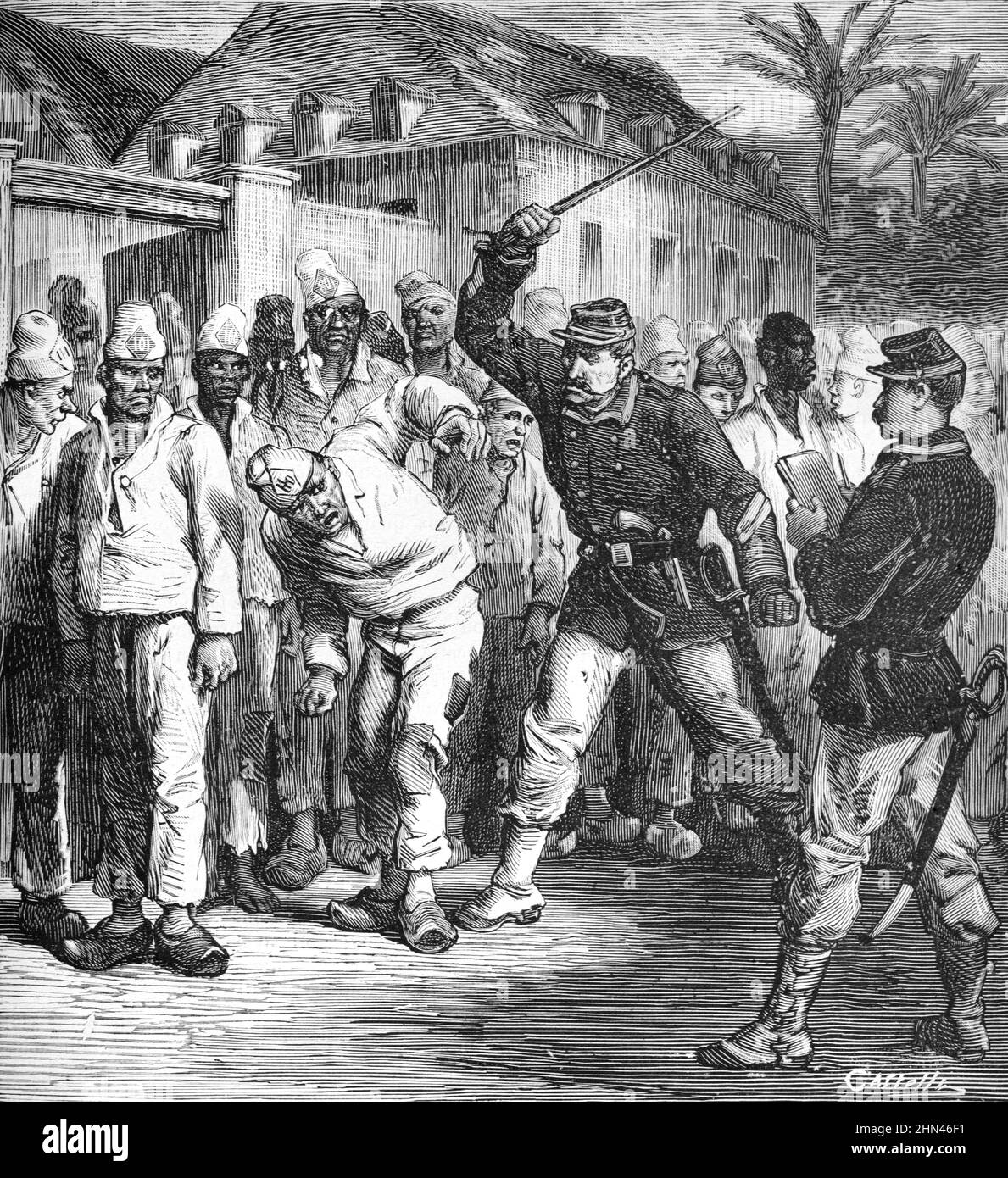 A Prison Warden Beats a Prison while other Detainees Look On. Prisoners & Prison Wardens in the Penal Colony of Cayenne, or Devil's Island, which operated from 1852 to 1953, French Guiana. Vintage Illustration or Engraving 1881 (Castelli) Stock Photohttps://www.alamy.com/image-license-details/?v=1https://www.alamy.com/a-prison-warden-beats-a-prison-while-other-detainees-look-on-prisoners-prison-wardens-in-the-penal-colony-of-cayenne-or-devils-island-which-operated-from-1852-to-1953-french-guiana-vintage-illustration-or-engraving-1881-castelli-image460470277.html
A Prison Warden Beats a Prison while other Detainees Look On. Prisoners & Prison Wardens in the Penal Colony of Cayenne, or Devil's Island, which operated from 1852 to 1953, French Guiana. Vintage Illustration or Engraving 1881 (Castelli) Stock Photohttps://www.alamy.com/image-license-details/?v=1https://www.alamy.com/a-prison-warden-beats-a-prison-while-other-detainees-look-on-prisoners-prison-wardens-in-the-penal-colony-of-cayenne-or-devils-island-which-operated-from-1852-to-1953-french-guiana-vintage-illustration-or-engraving-1881-castelli-image460470277.htmlRM2HN46F1–A Prison Warden Beats a Prison while other Detainees Look On. Prisoners & Prison Wardens in the Penal Colony of Cayenne, or Devil's Island, which operated from 1852 to 1953, French Guiana. Vintage Illustration or Engraving 1881 (Castelli)
 Engraving depicts a prison scene in Chicago. Dated 1870 Stock Photohttps://www.alamy.com/image-license-details/?v=1https://www.alamy.com/engraving-depicts-a-prison-scene-in-chicago-dated-1870-image210324116.html
Engraving depicts a prison scene in Chicago. Dated 1870 Stock Photohttps://www.alamy.com/image-license-details/?v=1https://www.alamy.com/engraving-depicts-a-prison-scene-in-chicago-dated-1870-image210324116.htmlRMP652FG–Engraving depicts a prison scene in Chicago. Dated 1870
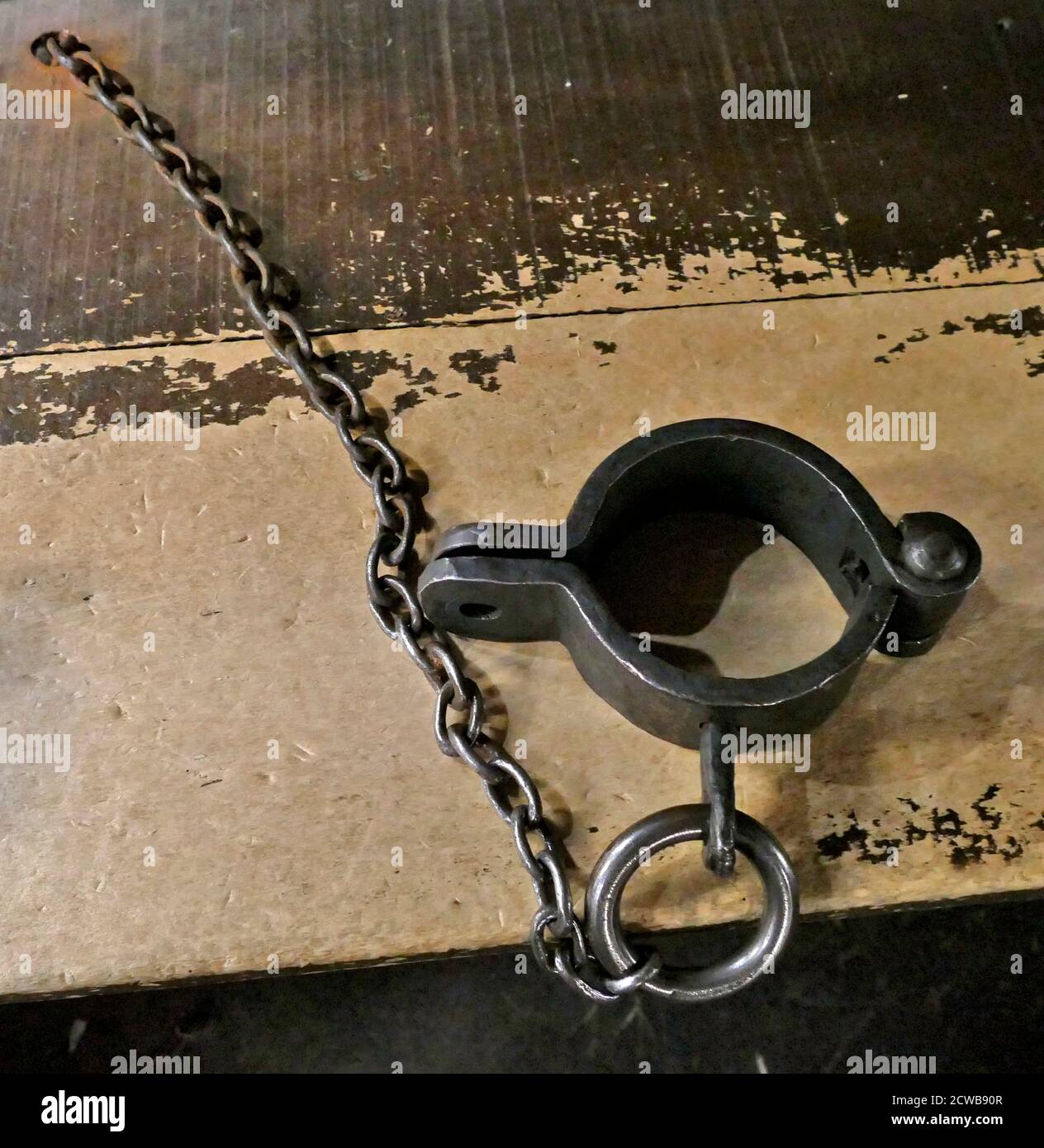 manacles used for prisoners in English gaols circa 1800 Stock Photohttps://www.alamy.com/image-license-details/?v=1https://www.alamy.com/manacles-used-for-prisoners-in-english-gaols-circa-1800-image377032679.html
manacles used for prisoners in English gaols circa 1800 Stock Photohttps://www.alamy.com/image-license-details/?v=1https://www.alamy.com/manacles-used-for-prisoners-in-english-gaols-circa-1800-image377032679.htmlRM2CWB90R–manacles used for prisoners in English gaols circa 1800
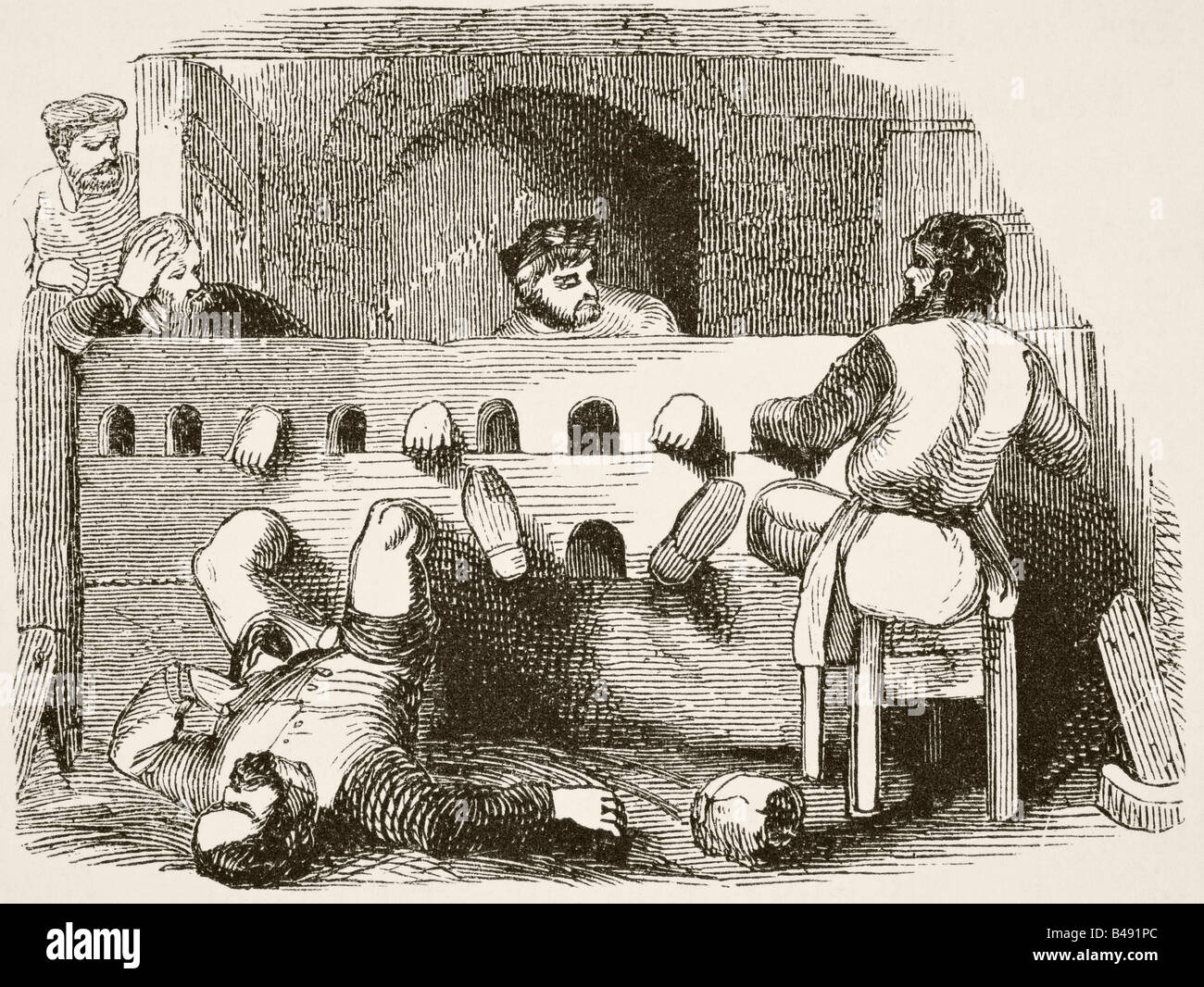 Prisoners locked in the stocks Stock Photohttps://www.alamy.com/image-license-details/?v=1https://www.alamy.com/stock-photo-prisoners-locked-in-the-stocks-19867972.html
Prisoners locked in the stocks Stock Photohttps://www.alamy.com/image-license-details/?v=1https://www.alamy.com/stock-photo-prisoners-locked-in-the-stocks-19867972.htmlRMB491PC–Prisoners locked in the stocks
 Chain penalty. The liberation from the chain punishment in Austria by Empress Elisabeth of Austria on November 19, 1867. The prisoners are taken from the chains, Digital improved reproduction of an image published between 1880 - 1885 Stock Photohttps://www.alamy.com/image-license-details/?v=1https://www.alamy.com/chain-penalty-the-liberation-from-the-chain-punishment-in-austria-image152585490.html
Chain penalty. The liberation from the chain punishment in Austria by Empress Elisabeth of Austria on November 19, 1867. The prisoners are taken from the chains, Digital improved reproduction of an image published between 1880 - 1885 Stock Photohttps://www.alamy.com/image-license-details/?v=1https://www.alamy.com/chain-penalty-the-liberation-from-the-chain-punishment-in-austria-image152585490.htmlRFJT6T9P–Chain penalty. The liberation from the chain punishment in Austria by Empress Elisabeth of Austria on November 19, 1867. The prisoners are taken from the chains, Digital improved reproduction of an image published between 1880 - 1885
 Missouri State Penitentiary in Jefferson City, Missouri Stock Photohttps://www.alamy.com/image-license-details/?v=1https://www.alamy.com/missouri-state-penitentiary-in-jefferson-city-missouri-image567083951.html
Missouri State Penitentiary in Jefferson City, Missouri Stock Photohttps://www.alamy.com/image-license-details/?v=1https://www.alamy.com/missouri-state-penitentiary-in-jefferson-city-missouri-image567083951.htmlRF2RXGWA7–Missouri State Penitentiary in Jefferson City, Missouri
 Late 19th century photograph - Chinese men in the cangue, stocks, prisoners, punishment, China. Stock Photohttps://www.alamy.com/image-license-details/?v=1https://www.alamy.com/late-19th-century-photograph-chinese-men-in-the-cangue-stocks-prisoners-punishment-china-image401436853.html
Late 19th century photograph - Chinese men in the cangue, stocks, prisoners, punishment, China. Stock Photohttps://www.alamy.com/image-license-details/?v=1https://www.alamy.com/late-19th-century-photograph-chinese-men-in-the-cangue-stocks-prisoners-punishment-china-image401436853.htmlRM2E930PD–Late 19th century photograph - Chinese men in the cangue, stocks, prisoners, punishment, China.
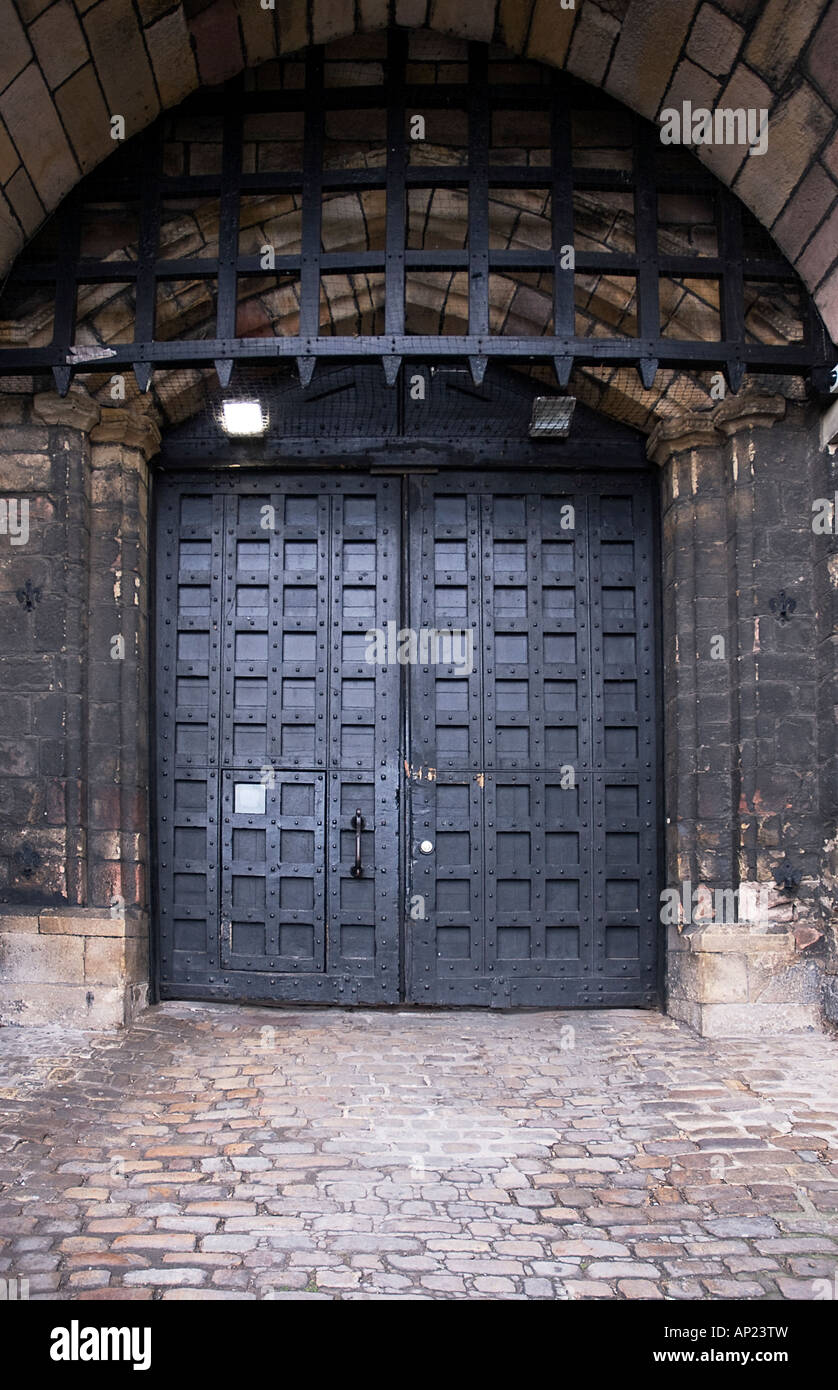 Lancaster Castle prison entrance Stock Photohttps://www.alamy.com/image-license-details/?v=1https://www.alamy.com/stock-photo-lancaster-castle-prison-entrance-15649944.html
Lancaster Castle prison entrance Stock Photohttps://www.alamy.com/image-license-details/?v=1https://www.alamy.com/stock-photo-lancaster-castle-prison-entrance-15649944.htmlRMAP23TW–Lancaster Castle prison entrance
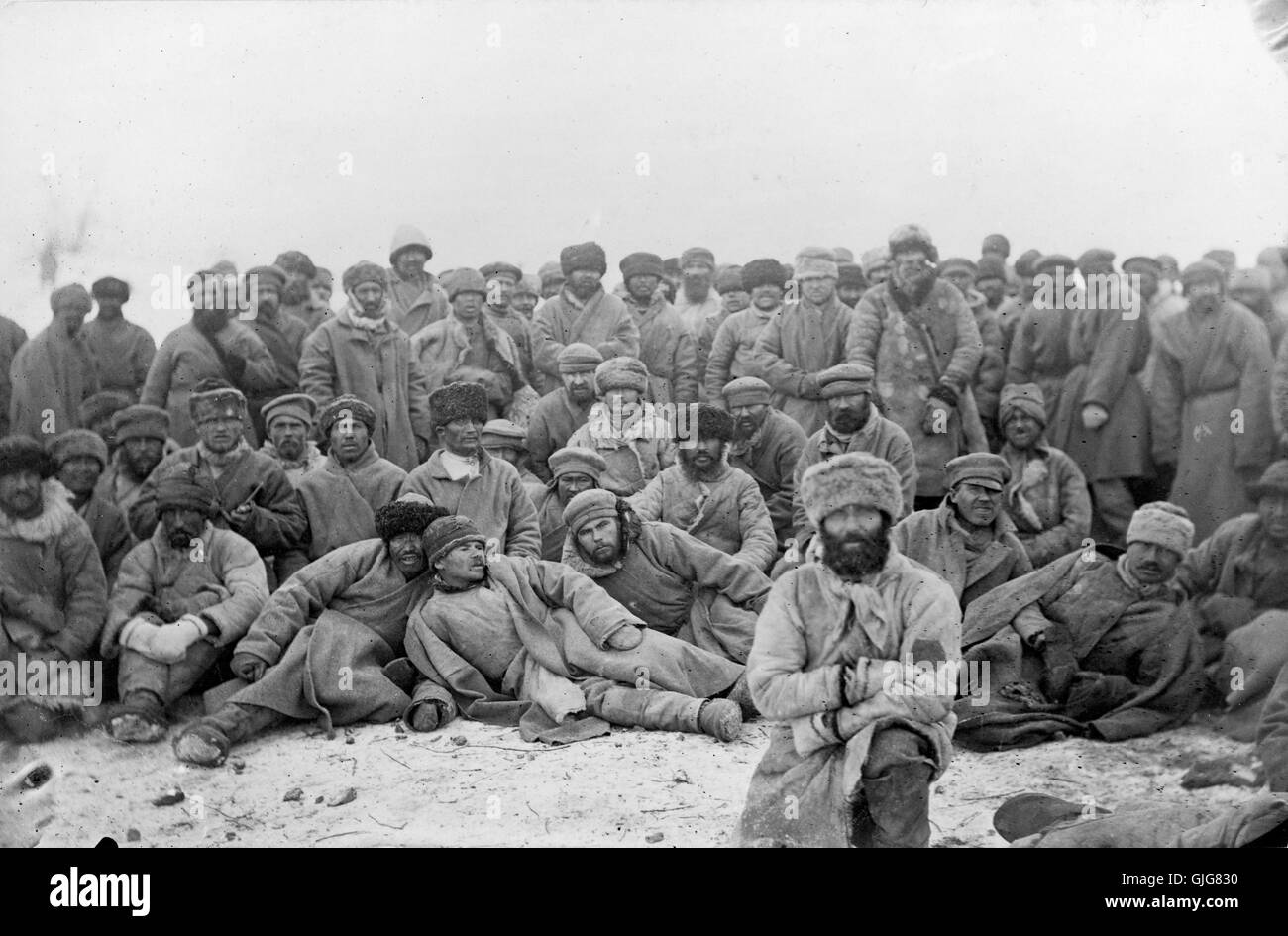 A group of hard-labor convicts in Siberia, Russia Stock Photohttps://www.alamy.com/image-license-details/?v=1https://www.alamy.com/stock-photo-a-group-of-hard-labor-convicts-in-siberia-russia-114683604.html
A group of hard-labor convicts in Siberia, Russia Stock Photohttps://www.alamy.com/image-license-details/?v=1https://www.alamy.com/stock-photo-a-group-of-hard-labor-convicts-in-siberia-russia-114683604.htmlRMGJG830–A group of hard-labor convicts in Siberia, Russia
 Elderly prisoners during recreation, Onomichi prison, Japan. Stock Photohttps://www.alamy.com/image-license-details/?v=1https://www.alamy.com/stock-photo-elderly-prisoners-during-recreation-onomichi-prison-japan-17696119.html
Elderly prisoners during recreation, Onomichi prison, Japan. Stock Photohttps://www.alamy.com/image-license-details/?v=1https://www.alamy.com/stock-photo-elderly-prisoners-during-recreation-onomichi-prison-japan-17696119.htmlRMB0P3G7–Elderly prisoners during recreation, Onomichi prison, Japan.
 Bridewell Prisoners Cleaning the Streets . After illustration from 'The State of the Prisons' (book) by John Howard, 1792. Stock Photohttps://www.alamy.com/image-license-details/?v=1https://www.alamy.com/stock-photo-bridewell-prisoners-cleaning-the-streets-after-illustration-from-the-83339046.html
Bridewell Prisoners Cleaning the Streets . After illustration from 'The State of the Prisons' (book) by John Howard, 1792. Stock Photohttps://www.alamy.com/image-license-details/?v=1https://www.alamy.com/stock-photo-bridewell-prisoners-cleaning-the-streets-after-illustration-from-the-83339046.htmlRMERGBPE–Bridewell Prisoners Cleaning the Streets . After illustration from 'The State of the Prisons' (book) by John Howard, 1792.
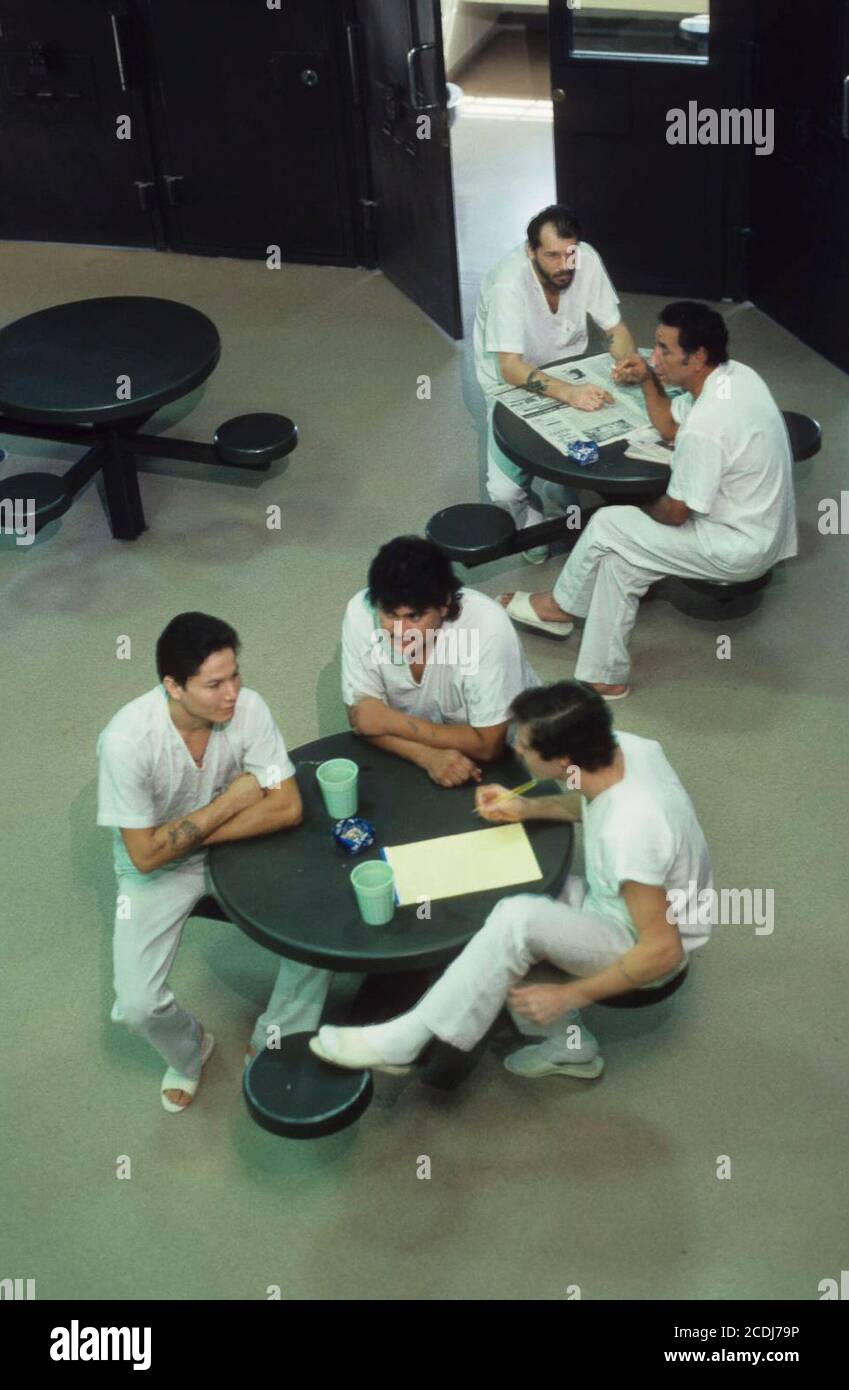 Inmates in Travis County jail in Austin, Texas. No releases ©Bob Daemmrich Stock Photohttps://www.alamy.com/image-license-details/?v=1https://www.alamy.com/inmates-in-travis-county-jail-in-austin-texas-no-releases-bob-daemmrich-image369809154.html
Inmates in Travis County jail in Austin, Texas. No releases ©Bob Daemmrich Stock Photohttps://www.alamy.com/image-license-details/?v=1https://www.alamy.com/inmates-in-travis-county-jail-in-austin-texas-no-releases-bob-daemmrich-image369809154.htmlRM2CDJ79P–Inmates in Travis County jail in Austin, Texas. No releases ©Bob Daemmrich
 Prisoners washing the patrol cars of the Caldwell County Sheriffs Texas USA Stock Photohttps://www.alamy.com/image-license-details/?v=1https://www.alamy.com/stock-photo-prisoners-washing-the-patrol-cars-of-the-caldwell-county-sheriffs-21061713.html
Prisoners washing the patrol cars of the Caldwell County Sheriffs Texas USA Stock Photohttps://www.alamy.com/image-license-details/?v=1https://www.alamy.com/stock-photo-prisoners-washing-the-patrol-cars-of-the-caldwell-county-sheriffs-21061713.htmlRMB67CC1–Prisoners washing the patrol cars of the Caldwell County Sheriffs Texas USA
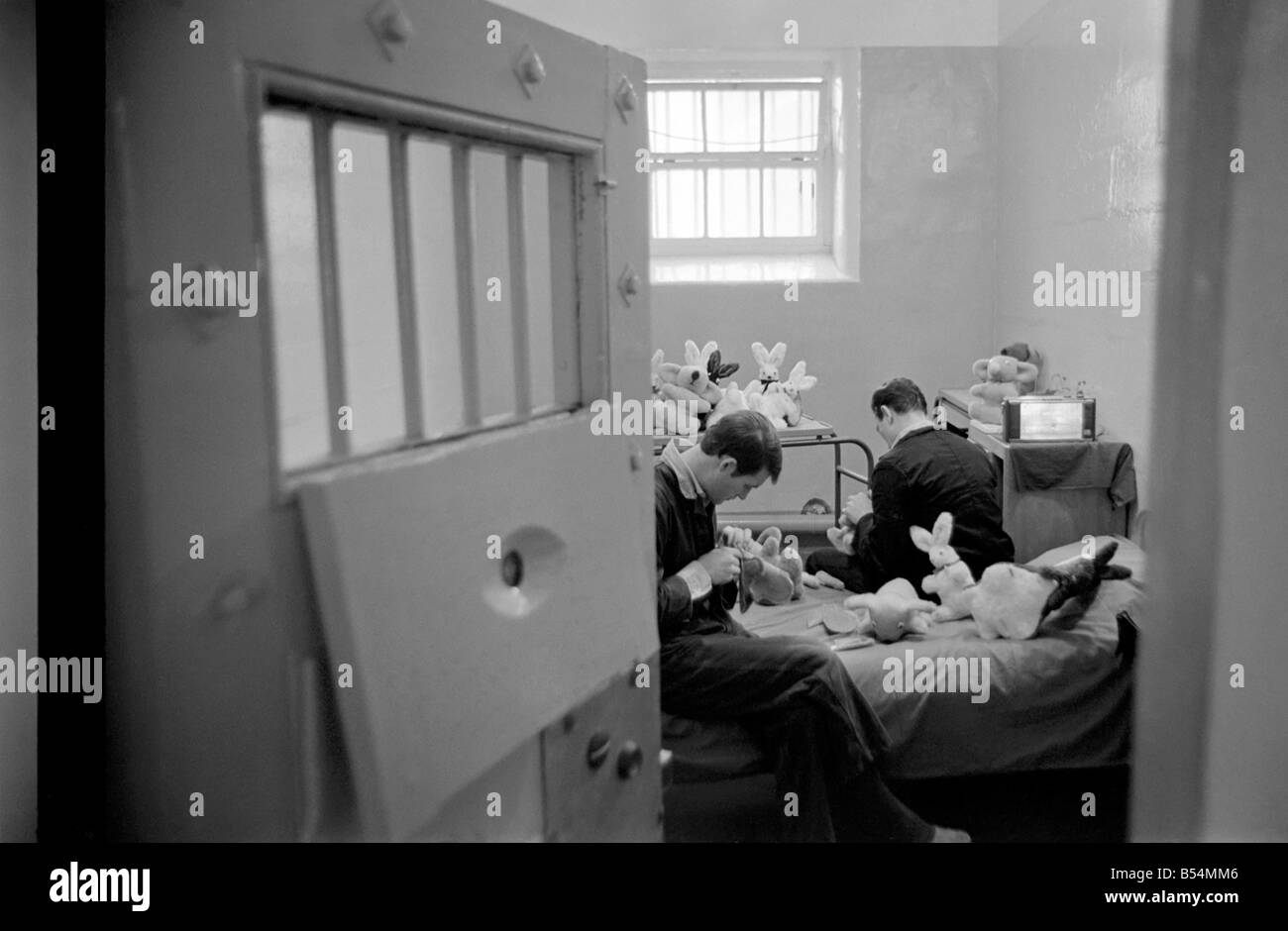 Prisoners inside their cells at Dartmoor Prison making soft toys for local childrens charities. December 1969 Z11562-002 Stock Photohttps://www.alamy.com/image-license-details/?v=1https://www.alamy.com/stock-photo-prisoners-inside-their-cells-at-dartmoor-prison-making-soft-toys-for-20387702.html
Prisoners inside their cells at Dartmoor Prison making soft toys for local childrens charities. December 1969 Z11562-002 Stock Photohttps://www.alamy.com/image-license-details/?v=1https://www.alamy.com/stock-photo-prisoners-inside-their-cells-at-dartmoor-prison-making-soft-toys-for-20387702.htmlRMB54MM6–Prisoners inside their cells at Dartmoor Prison making soft toys for local childrens charities. December 1969 Z11562-002
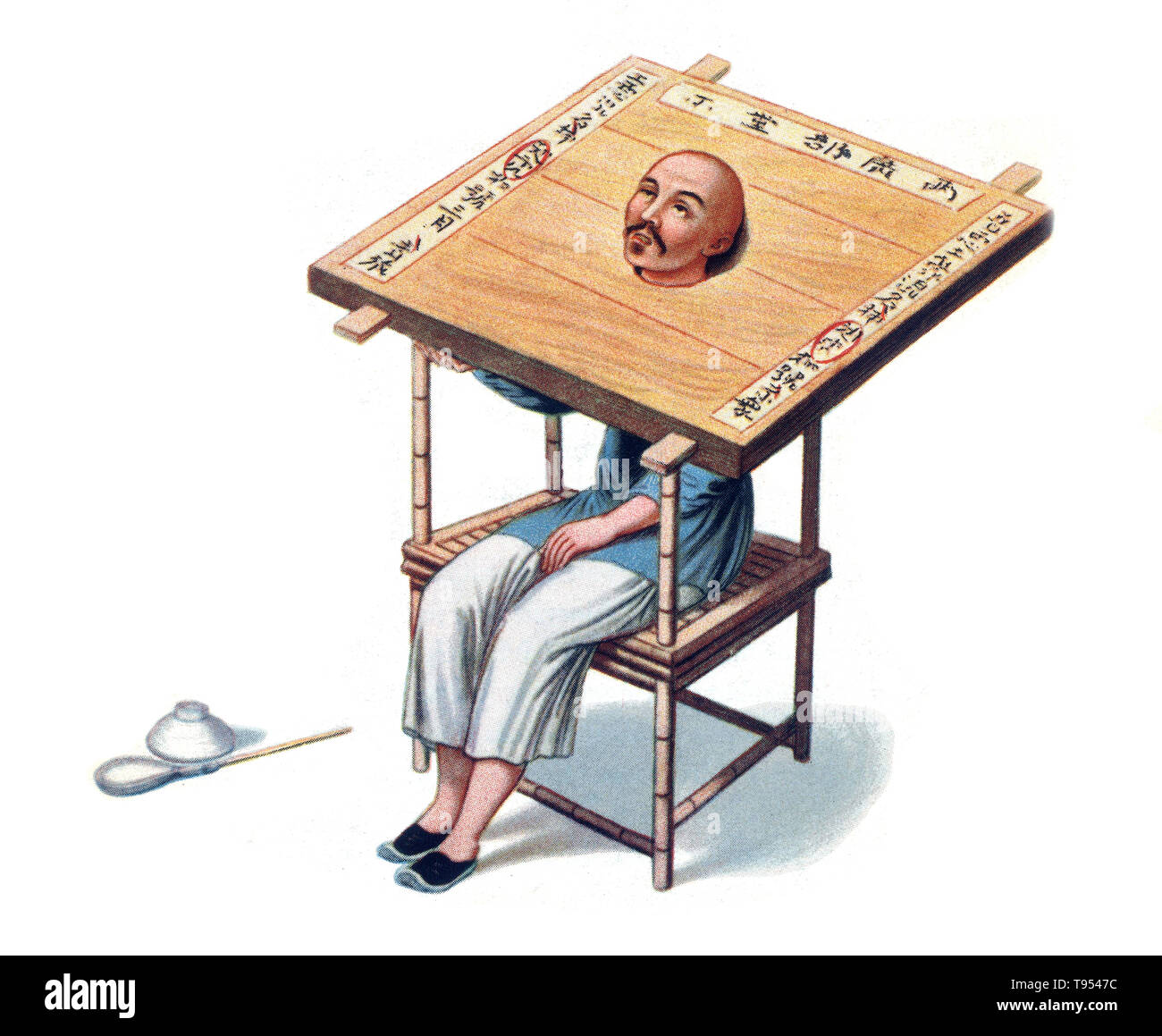 A cangue is a device that was used for public humiliation and corporal punishment in China and some other parts of East Asia and Southeast Asia until the early years of the 20th century. A typical cangue would consist of a large, heavy flat board with a hole in the center large enough for a person's neck. The board consisted of two pieces. These pieces were closed around a prisoner's neck, and then fastened shut along the edges by locks or hinges. Stock Photohttps://www.alamy.com/image-license-details/?v=1https://www.alamy.com/a-cangue-is-a-device-that-was-used-for-public-humiliation-and-corporal-punishment-in-china-and-some-other-parts-of-east-asia-and-southeast-asia-until-the-early-years-of-the-20th-century-a-typical-cangue-would-consist-of-a-large-heavy-flat-board-with-a-hole-in-the-center-large-enough-for-a-persons-neck-the-board-consisted-of-two-pieces-these-pieces-were-closed-around-a-prisoners-neck-and-then-fastened-shut-along-the-edges-by-locks-or-hinges-image246590160.html
A cangue is a device that was used for public humiliation and corporal punishment in China and some other parts of East Asia and Southeast Asia until the early years of the 20th century. A typical cangue would consist of a large, heavy flat board with a hole in the center large enough for a person's neck. The board consisted of two pieces. These pieces were closed around a prisoner's neck, and then fastened shut along the edges by locks or hinges. Stock Photohttps://www.alamy.com/image-license-details/?v=1https://www.alamy.com/a-cangue-is-a-device-that-was-used-for-public-humiliation-and-corporal-punishment-in-china-and-some-other-parts-of-east-asia-and-southeast-asia-until-the-early-years-of-the-20th-century-a-typical-cangue-would-consist-of-a-large-heavy-flat-board-with-a-hole-in-the-center-large-enough-for-a-persons-neck-the-board-consisted-of-two-pieces-these-pieces-were-closed-around-a-prisoners-neck-and-then-fastened-shut-along-the-edges-by-locks-or-hinges-image246590160.htmlRMT9547C–A cangue is a device that was used for public humiliation and corporal punishment in China and some other parts of East Asia and Southeast Asia until the early years of the 20th century. A typical cangue would consist of a large, heavy flat board with a hole in the center large enough for a person's neck. The board consisted of two pieces. These pieces were closed around a prisoner's neck, and then fastened shut along the edges by locks or hinges.
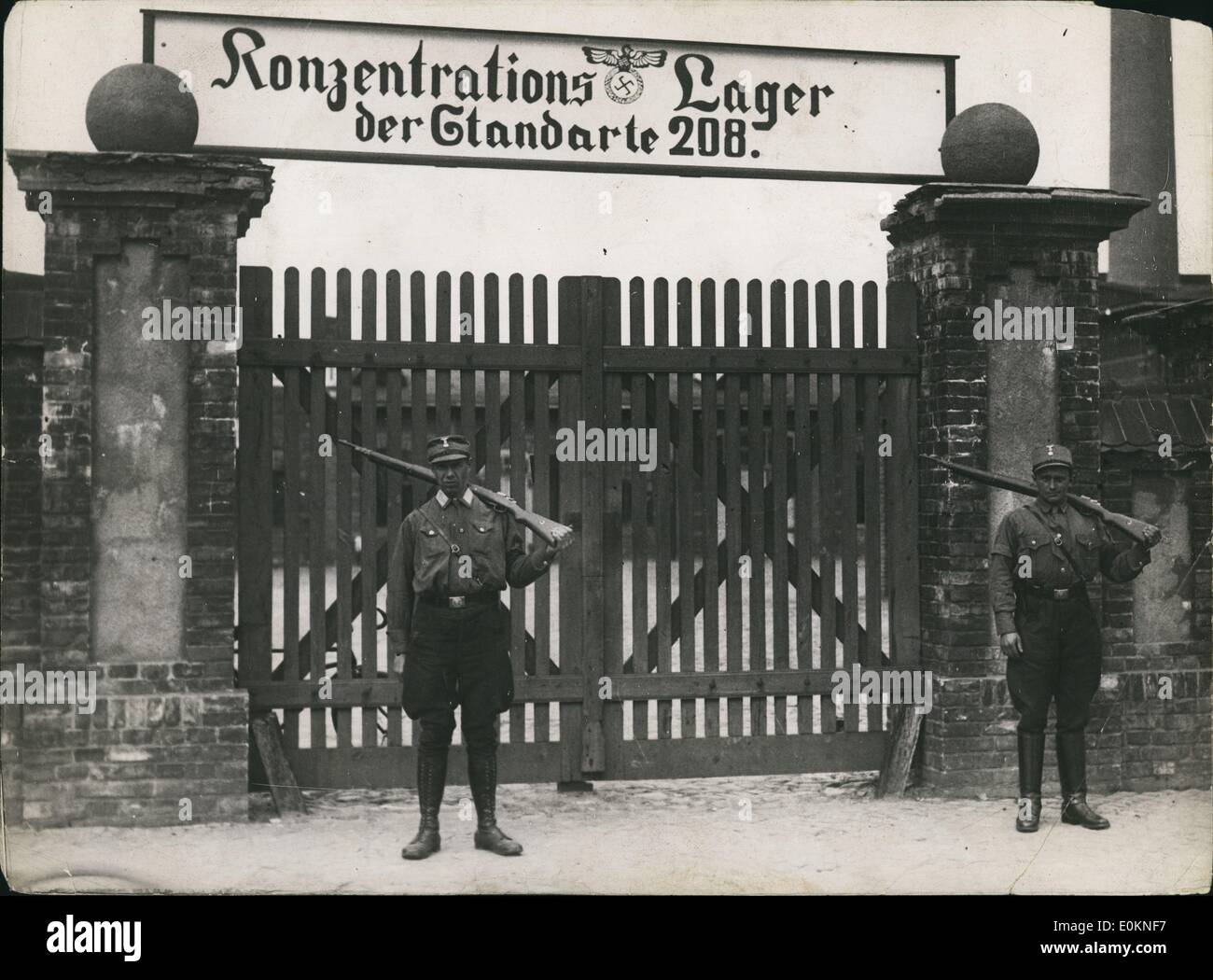 Jan. 1, 1930 - (Illegible) Visit to a Camp for political Prisoners (Illegible) near Berlin: (Illegible) Series Shows Several looks in to the life of the (Illegible) Prisoner in the National Socialist ''Concentration Camp of Oranienbourg near Berlin. Former manufacturer (Illegible) were changed in to this camp, which unites only male Prisoners of every age and of different professions. ''The camp does not serve for the Punishment for the melioration of the Prisoners! These are the words of the Camp Leaders. The entrance to the Concentration Camp of Oranienburg. (exact date unknown) Stock Photohttps://www.alamy.com/image-license-details/?v=1https://www.alamy.com/jan-1-1930-illegible-visit-to-a-camp-for-political-prisoners-illegible-image69275451.html
Jan. 1, 1930 - (Illegible) Visit to a Camp for political Prisoners (Illegible) near Berlin: (Illegible) Series Shows Several looks in to the life of the (Illegible) Prisoner in the National Socialist ''Concentration Camp of Oranienbourg near Berlin. Former manufacturer (Illegible) were changed in to this camp, which unites only male Prisoners of every age and of different professions. ''The camp does not serve for the Punishment for the melioration of the Prisoners! These are the words of the Camp Leaders. The entrance to the Concentration Camp of Oranienburg. (exact date unknown) Stock Photohttps://www.alamy.com/image-license-details/?v=1https://www.alamy.com/jan-1-1930-illegible-visit-to-a-camp-for-political-prisoners-illegible-image69275451.htmlRME0KNF7–Jan. 1, 1930 - (Illegible) Visit to a Camp for political Prisoners (Illegible) near Berlin: (Illegible) Series Shows Several looks in to the life of the (Illegible) Prisoner in the National Socialist ''Concentration Camp of Oranienbourg near Berlin. Former manufacturer (Illegible) were changed in to this camp, which unites only male Prisoners of every age and of different professions. ''The camp does not serve for the Punishment for the melioration of the Prisoners! These are the words of the Camp Leaders. The entrance to the Concentration Camp of Oranienburg. (exact date unknown)
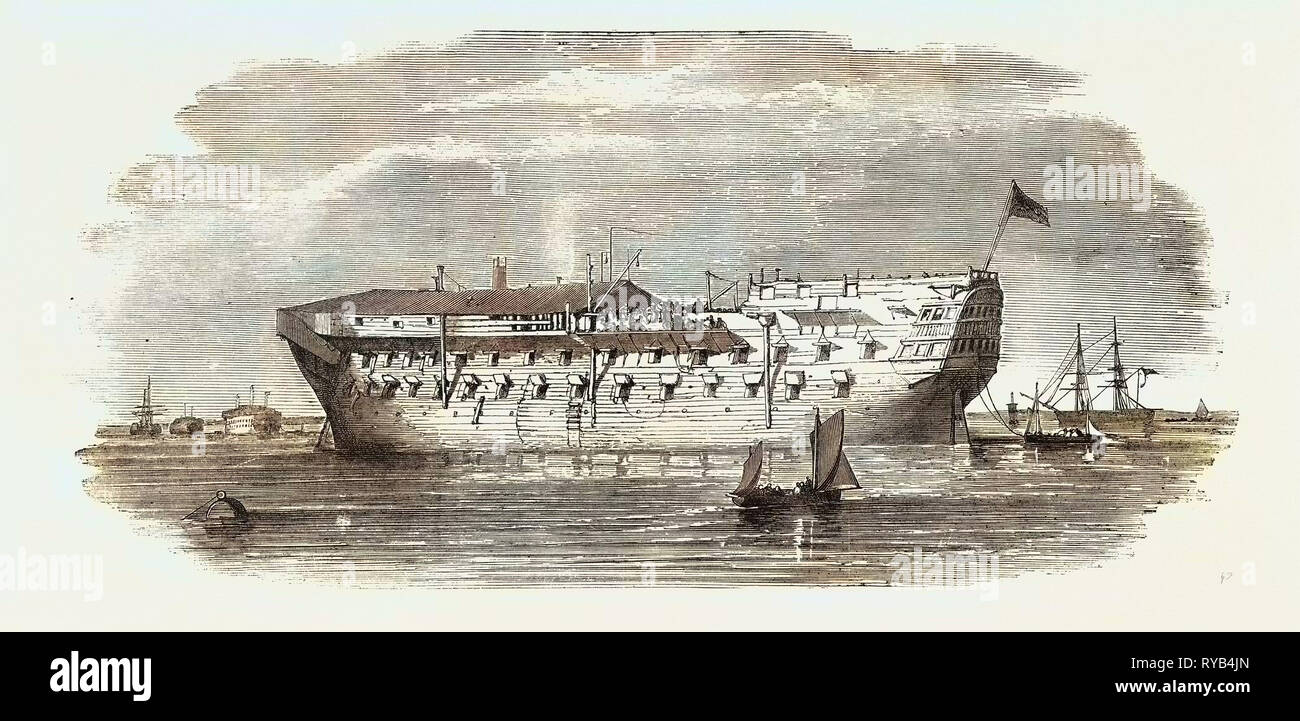 Russian Prisoners at Sheerness: The Devonshire Prison-Ship at Sheerness 1854 Stock Photohttps://www.alamy.com/image-license-details/?v=1https://www.alamy.com/russian-prisoners-at-sheerness-the-devonshire-prison-ship-at-sheerness-1854-image240575629.html
Russian Prisoners at Sheerness: The Devonshire Prison-Ship at Sheerness 1854 Stock Photohttps://www.alamy.com/image-license-details/?v=1https://www.alamy.com/russian-prisoners-at-sheerness-the-devonshire-prison-ship-at-sheerness-1854-image240575629.htmlRMRYB4JN–Russian Prisoners at Sheerness: The Devonshire Prison-Ship at Sheerness 1854
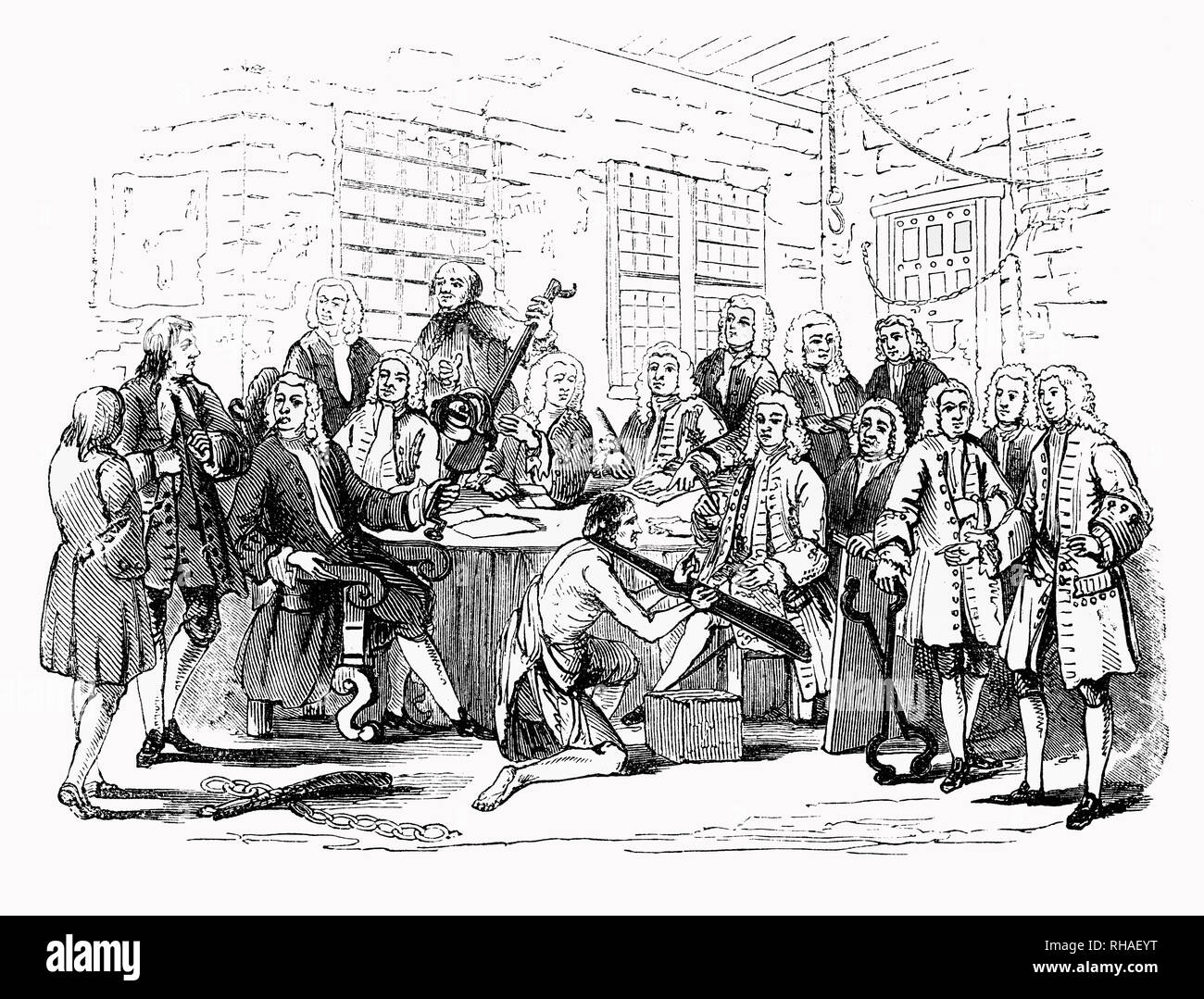 The head of the prison was termed the warden, who was appointed by letters patent. It became a frequent practice of the holder of the patent to farm out the prison to the highest bidder. One was Thomas Bambridge, who became warden in 1728 and guilty of the greatest extortions upon prisoners according to a committee of the House of Commons appointed to inquire into the state of English gaols. He destroyed prisoners for debt and treated them in the most barbarous and cruel manner, in high violation and contempt of the laws. He was committed to Newgate Prison, and prevented taking office. Stock Photohttps://www.alamy.com/image-license-details/?v=1https://www.alamy.com/the-head-of-the-prison-was-termed-the-warden-who-was-appointed-by-letters-patent-it-became-a-frequent-practice-of-the-holder-of-the-patent-to-farm-out-the-prison-to-the-highest-bidder-one-was-thomas-bambridge-who-became-warden-in-1728-and-guilty-of-the-greatest-extortions-upon-prisoners-according-to-a-committee-of-the-house-of-commons-appointed-to-inquire-into-the-state-of-english-gaols-he-destroyed-prisoners-for-debt-and-treated-them-in-the-most-barbarous-and-cruel-manner-in-high-violation-and-contempt-of-the-laws-he-was-committed-to-newgate-prison-and-prevented-taking-office-image234415212.html
The head of the prison was termed the warden, who was appointed by letters patent. It became a frequent practice of the holder of the patent to farm out the prison to the highest bidder. One was Thomas Bambridge, who became warden in 1728 and guilty of the greatest extortions upon prisoners according to a committee of the House of Commons appointed to inquire into the state of English gaols. He destroyed prisoners for debt and treated them in the most barbarous and cruel manner, in high violation and contempt of the laws. He was committed to Newgate Prison, and prevented taking office. Stock Photohttps://www.alamy.com/image-license-details/?v=1https://www.alamy.com/the-head-of-the-prison-was-termed-the-warden-who-was-appointed-by-letters-patent-it-became-a-frequent-practice-of-the-holder-of-the-patent-to-farm-out-the-prison-to-the-highest-bidder-one-was-thomas-bambridge-who-became-warden-in-1728-and-guilty-of-the-greatest-extortions-upon-prisoners-according-to-a-committee-of-the-house-of-commons-appointed-to-inquire-into-the-state-of-english-gaols-he-destroyed-prisoners-for-debt-and-treated-them-in-the-most-barbarous-and-cruel-manner-in-high-violation-and-contempt-of-the-laws-he-was-committed-to-newgate-prison-and-prevented-taking-office-image234415212.htmlRMRHAEYT–The head of the prison was termed the warden, who was appointed by letters patent. It became a frequent practice of the holder of the patent to farm out the prison to the highest bidder. One was Thomas Bambridge, who became warden in 1728 and guilty of the greatest extortions upon prisoners according to a committee of the House of Commons appointed to inquire into the state of English gaols. He destroyed prisoners for debt and treated them in the most barbarous and cruel manner, in high violation and contempt of the laws. He was committed to Newgate Prison, and prevented taking office.
 Old Medieval engraving showing criminals or prisoners under armed escort Stock Photohttps://www.alamy.com/image-license-details/?v=1https://www.alamy.com/stock-image-old-medieval-engraving-showing-criminals-or-prisoners-under-armed-164594540.html
Old Medieval engraving showing criminals or prisoners under armed escort Stock Photohttps://www.alamy.com/image-license-details/?v=1https://www.alamy.com/stock-image-old-medieval-engraving-showing-criminals-or-prisoners-under-armed-164594540.htmlRMKFNX0C–Old Medieval engraving showing criminals or prisoners under armed escort
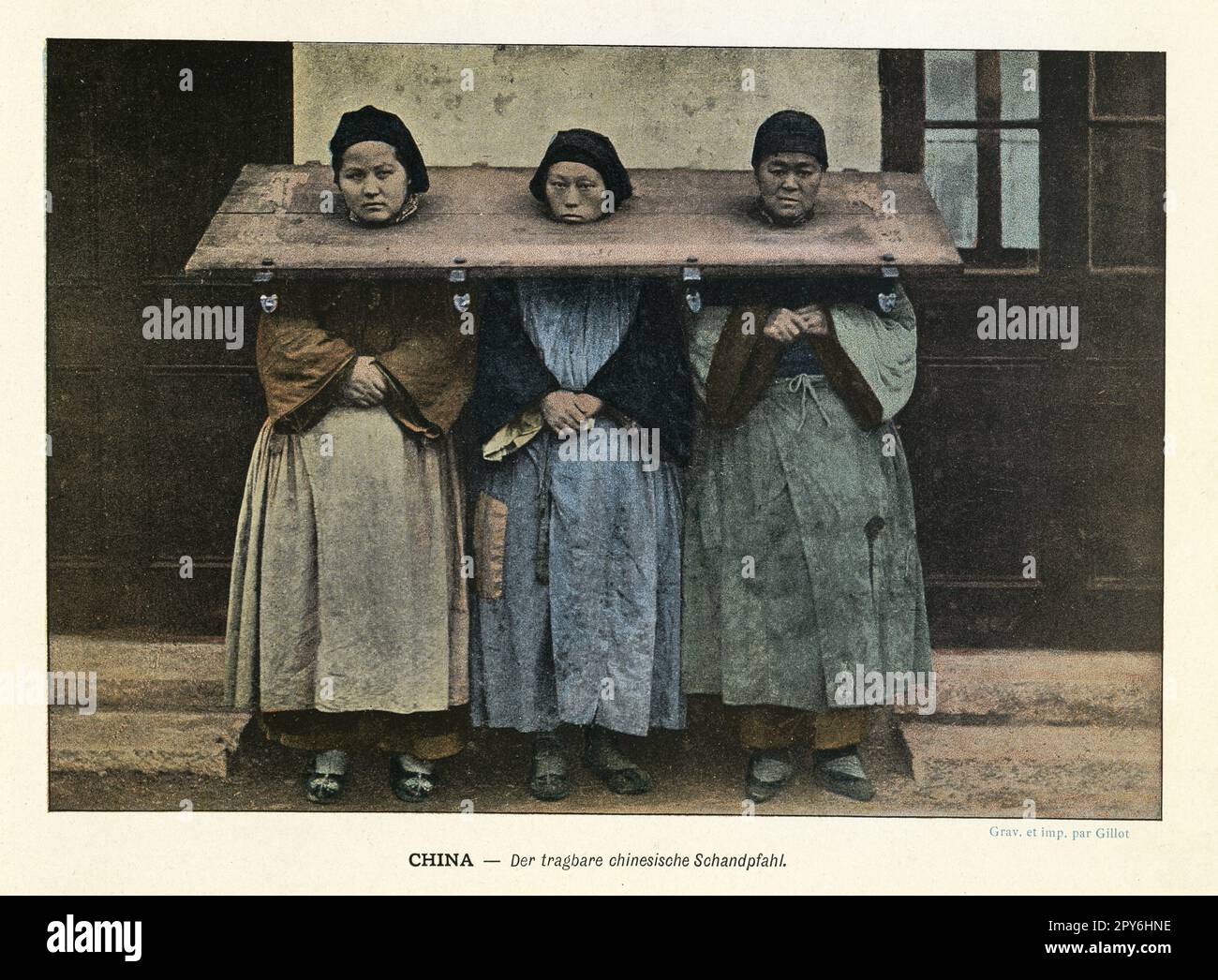 Chinese women prisoners with their necks enclosed in stocks or cangue, public humiliation, Corporal punishment, China 1890s, 19th Century Stock Photohttps://www.alamy.com/image-license-details/?v=1https://www.alamy.com/chinese-women-prisoners-with-their-necks-enclosed-in-stocks-or-cangue-public-humiliation-corporal-punishment-china-1890s-19th-century-image550262762.html
Chinese women prisoners with their necks enclosed in stocks or cangue, public humiliation, Corporal punishment, China 1890s, 19th Century Stock Photohttps://www.alamy.com/image-license-details/?v=1https://www.alamy.com/chinese-women-prisoners-with-their-necks-enclosed-in-stocks-or-cangue-public-humiliation-corporal-punishment-china-1890s-19th-century-image550262762.htmlRM2PY6HNE–Chinese women prisoners with their necks enclosed in stocks or cangue, public humiliation, Corporal punishment, China 1890s, 19th Century
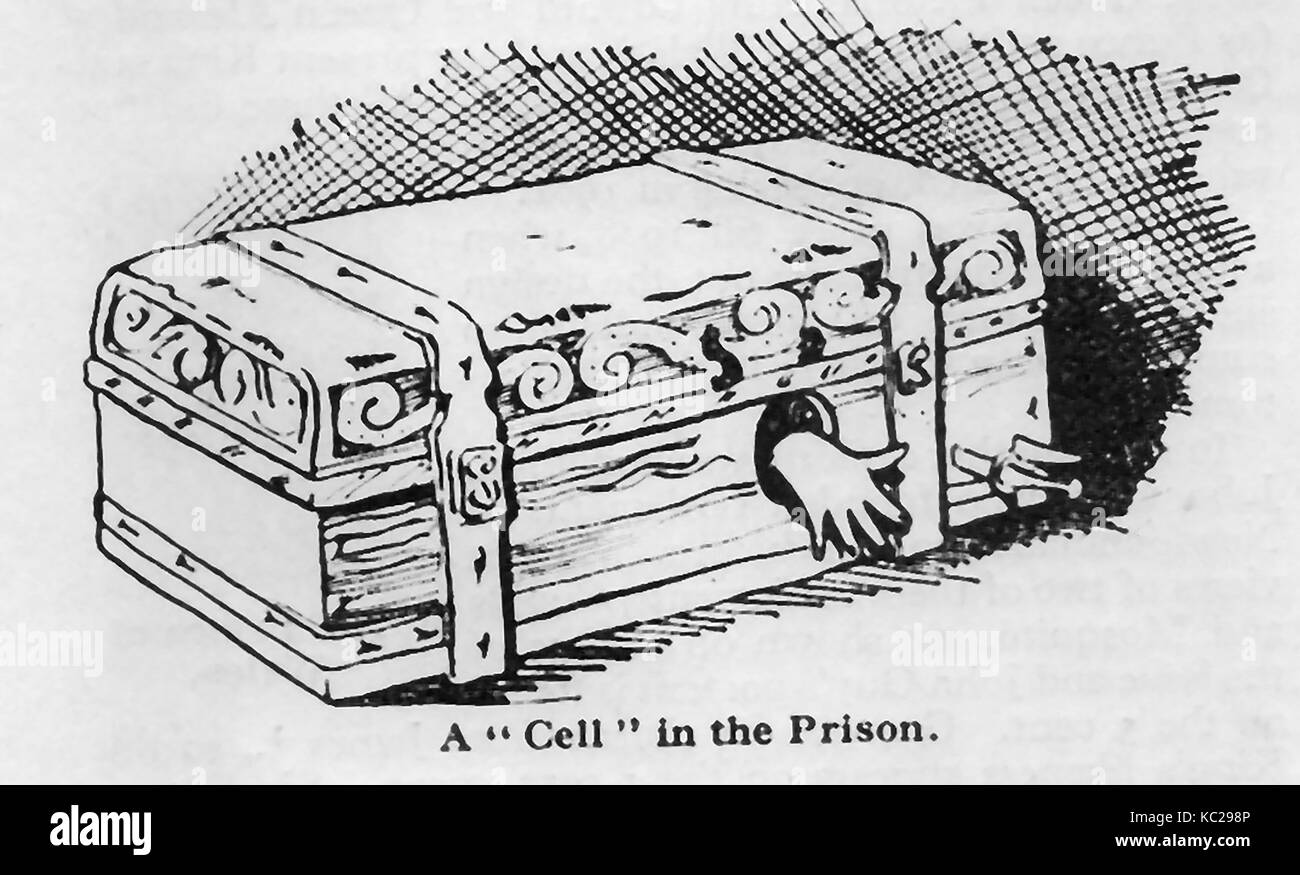 1930's - Immurement - Crime,Punishment and executions in Mongolia as depicted in a publication of the time - A newspaper in 1914 reported 'shut up for life in heavy iron-bound coffins, which do not permit them to sit upright or lie down. These prisoners see daylight for only a few minutes daily when the food is thrown into their coffins through a small hole' Stock Photohttps://www.alamy.com/image-license-details/?v=1https://www.alamy.com/stock-image-1930s-immurement-crimepunishment-and-executions-in-mongolia-as-depicted-162320390.html
1930's - Immurement - Crime,Punishment and executions in Mongolia as depicted in a publication of the time - A newspaper in 1914 reported 'shut up for life in heavy iron-bound coffins, which do not permit them to sit upright or lie down. These prisoners see daylight for only a few minutes daily when the food is thrown into their coffins through a small hole' Stock Photohttps://www.alamy.com/image-license-details/?v=1https://www.alamy.com/stock-image-1930s-immurement-crimepunishment-and-executions-in-mongolia-as-depicted-162320390.htmlRMKC298P–1930's - Immurement - Crime,Punishment and executions in Mongolia as depicted in a publication of the time - A newspaper in 1914 reported 'shut up for life in heavy iron-bound coffins, which do not permit them to sit upright or lie down. These prisoners see daylight for only a few minutes daily when the food is thrown into their coffins through a small hole'
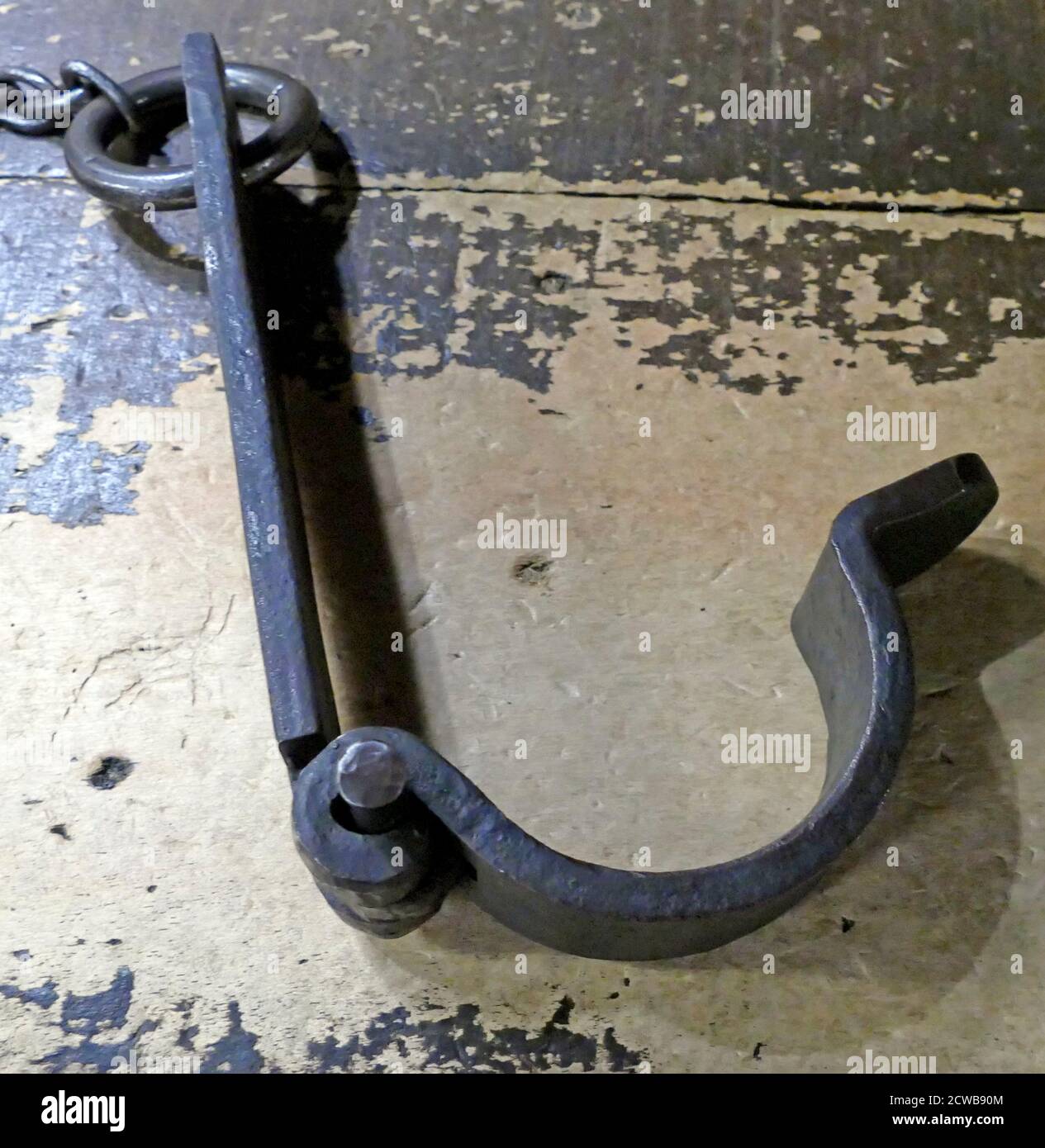 manacles used for prisoners in English gaols circa 1800 Stock Photohttps://www.alamy.com/image-license-details/?v=1https://www.alamy.com/manacles-used-for-prisoners-in-english-gaols-circa-1800-image377032676.html
manacles used for prisoners in English gaols circa 1800 Stock Photohttps://www.alamy.com/image-license-details/?v=1https://www.alamy.com/manacles-used-for-prisoners-in-english-gaols-circa-1800-image377032676.htmlRM2CWB90M–manacles used for prisoners in English gaols circa 1800
 COMMUNE/PRISONERS Stock Photohttps://www.alamy.com/image-license-details/?v=1https://www.alamy.com/stock-photo-communeprisoners-105321786.html
COMMUNE/PRISONERS Stock Photohttps://www.alamy.com/image-license-details/?v=1https://www.alamy.com/stock-photo-communeprisoners-105321786.htmlRMG39R0A–COMMUNE/PRISONERS
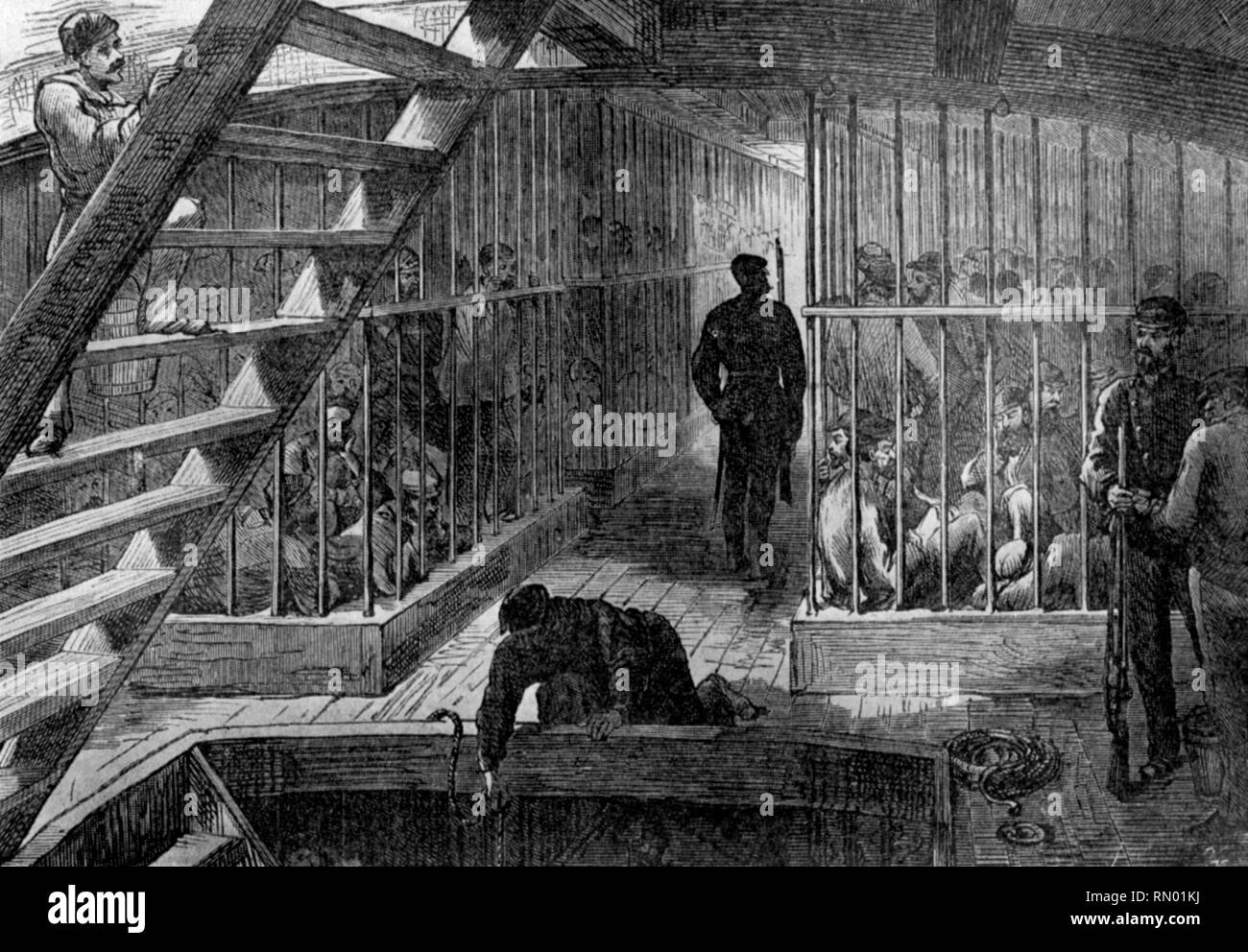 Caged prisoners in a transport ship on the way to Australia, 19th century. Between 1788 and 1868, approximately 162,000 convicts were transported from Britain to various penal colonies in Australia. Stock Photohttps://www.alamy.com/image-license-details/?v=1https://www.alamy.com/caged-prisoners-in-a-transport-ship-on-the-way-to-australia-19th-century-between-1788-and-1868-approximately-162000-convicts-were-transported-from-britain-to-various-penal-colonies-in-australia-image236643894.html
Caged prisoners in a transport ship on the way to Australia, 19th century. Between 1788 and 1868, approximately 162,000 convicts were transported from Britain to various penal colonies in Australia. Stock Photohttps://www.alamy.com/image-license-details/?v=1https://www.alamy.com/caged-prisoners-in-a-transport-ship-on-the-way-to-australia-19th-century-between-1788-and-1868-approximately-162000-convicts-were-transported-from-britain-to-various-penal-colonies-in-australia-image236643894.htmlRMRN01KJ–Caged prisoners in a transport ship on the way to Australia, 19th century. Between 1788 and 1868, approximately 162,000 convicts were transported from Britain to various penal colonies in Australia.
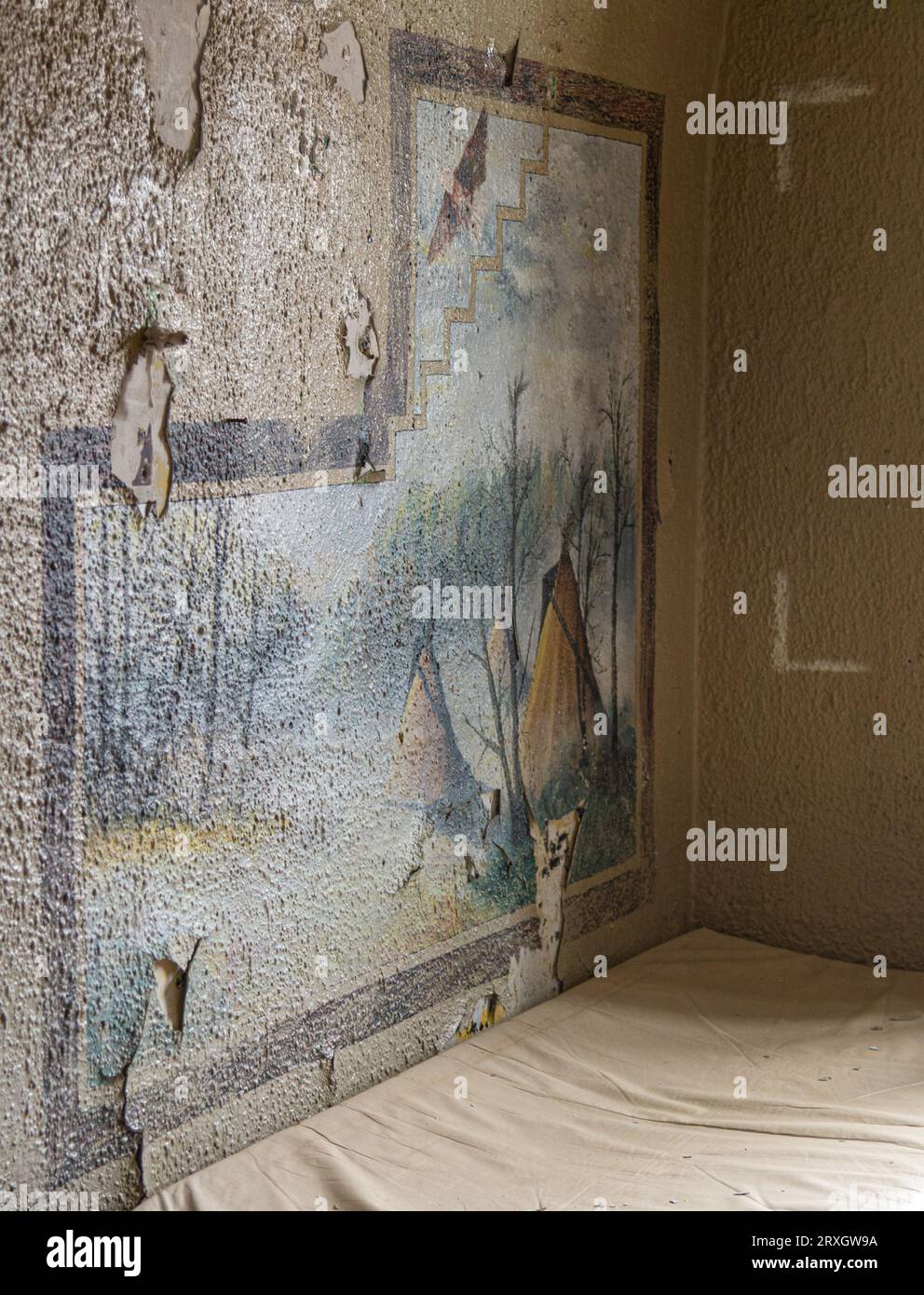 Missouri State Penitentiary in Jefferson City, Missouri Stock Photohttps://www.alamy.com/image-license-details/?v=1https://www.alamy.com/missouri-state-penitentiary-in-jefferson-city-missouri-image567083926.html
Missouri State Penitentiary in Jefferson City, Missouri Stock Photohttps://www.alamy.com/image-license-details/?v=1https://www.alamy.com/missouri-state-penitentiary-in-jefferson-city-missouri-image567083926.htmlRF2RXGW9A–Missouri State Penitentiary in Jefferson City, Missouri
 Three prisoners, Robert Walsh, Stephen Blake and Martin Coughlan, stand on the roof of 'D' Block at Wormwood Scrubs Prison, London during a protest by the three inmates. They pelted prison officers with slates from the roof and waved the Irish tricolour flag, demanding 'more humane prison visits.' Stock Photohttps://www.alamy.com/image-license-details/?v=1https://www.alamy.com/stock-photo-three-prisoners-robert-walsh-stephen-blake-and-martin-coughlan-stand-105955460.html
Three prisoners, Robert Walsh, Stephen Blake and Martin Coughlan, stand on the roof of 'D' Block at Wormwood Scrubs Prison, London during a protest by the three inmates. They pelted prison officers with slates from the roof and waved the Irish tricolour flag, demanding 'more humane prison visits.' Stock Photohttps://www.alamy.com/image-license-details/?v=1https://www.alamy.com/stock-photo-three-prisoners-robert-walsh-stephen-blake-and-martin-coughlan-stand-105955460.htmlRMG4AK7G–Three prisoners, Robert Walsh, Stephen Blake and Martin Coughlan, stand on the roof of 'D' Block at Wormwood Scrubs Prison, London during a protest by the three inmates. They pelted prison officers with slates from the roof and waved the Irish tricolour flag, demanding 'more humane prison visits.'
 After the Peking riots, Chinese coolies about to be beheaded, February 1912. Stock Photohttps://www.alamy.com/image-license-details/?v=1https://www.alamy.com/stock-photo-after-the-peking-riots-chinese-coolies-about-to-be-beheaded-february-49920832.html
After the Peking riots, Chinese coolies about to be beheaded, February 1912. Stock Photohttps://www.alamy.com/image-license-details/?v=1https://www.alamy.com/stock-photo-after-the-peking-riots-chinese-coolies-about-to-be-beheaded-february-49920832.htmlRMCW62ET–After the Peking riots, Chinese coolies about to be beheaded, February 1912.
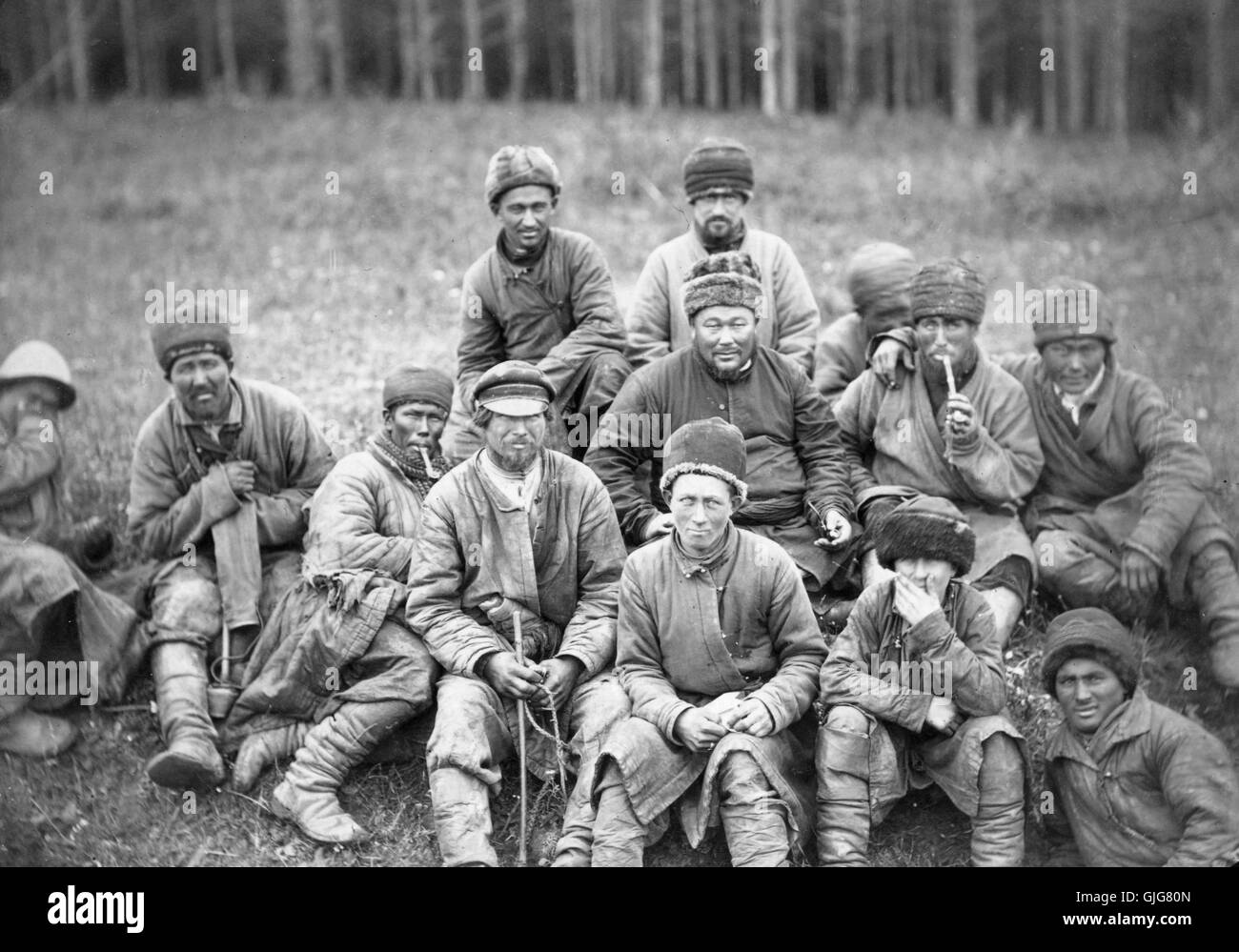 A group of hard-labor convicts in Siberia, Russia Stock Photohttps://www.alamy.com/image-license-details/?v=1https://www.alamy.com/stock-photo-a-group-of-hard-labor-convicts-in-siberia-russia-114683541.html
A group of hard-labor convicts in Siberia, Russia Stock Photohttps://www.alamy.com/image-license-details/?v=1https://www.alamy.com/stock-photo-a-group-of-hard-labor-convicts-in-siberia-russia-114683541.htmlRMGJG80N–A group of hard-labor convicts in Siberia, Russia
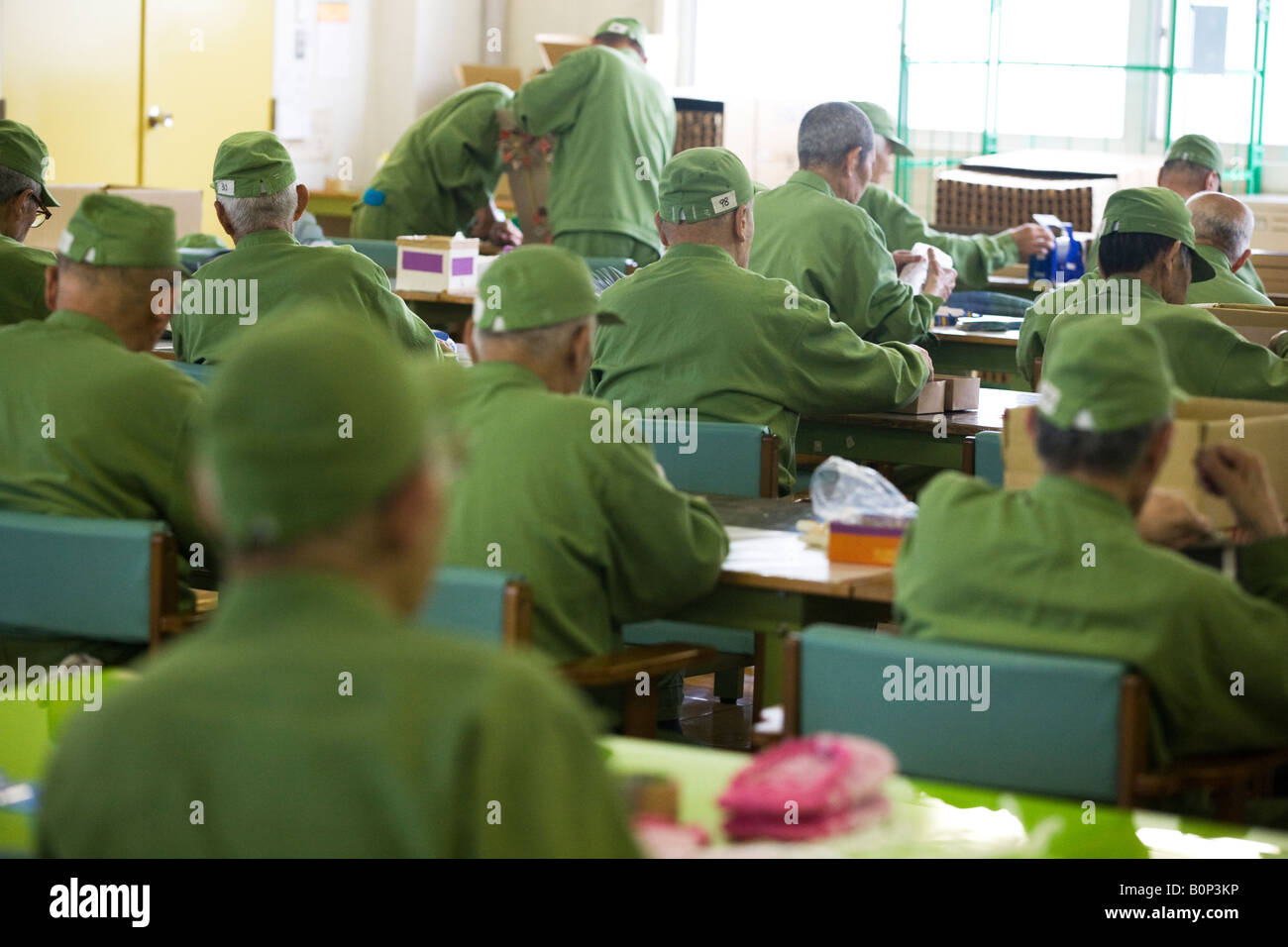 Elderly prisoners at work in workroom, Onomichi prison, Japan. Stock Photohttps://www.alamy.com/image-license-details/?v=1https://www.alamy.com/stock-photo-elderly-prisoners-at-work-in-workroom-onomichi-prison-japan-17696218.html
Elderly prisoners at work in workroom, Onomichi prison, Japan. Stock Photohttps://www.alamy.com/image-license-details/?v=1https://www.alamy.com/stock-photo-elderly-prisoners-at-work-in-workroom-onomichi-prison-japan-17696218.htmlRMB0P3KP–Elderly prisoners at work in workroom, Onomichi prison, Japan.
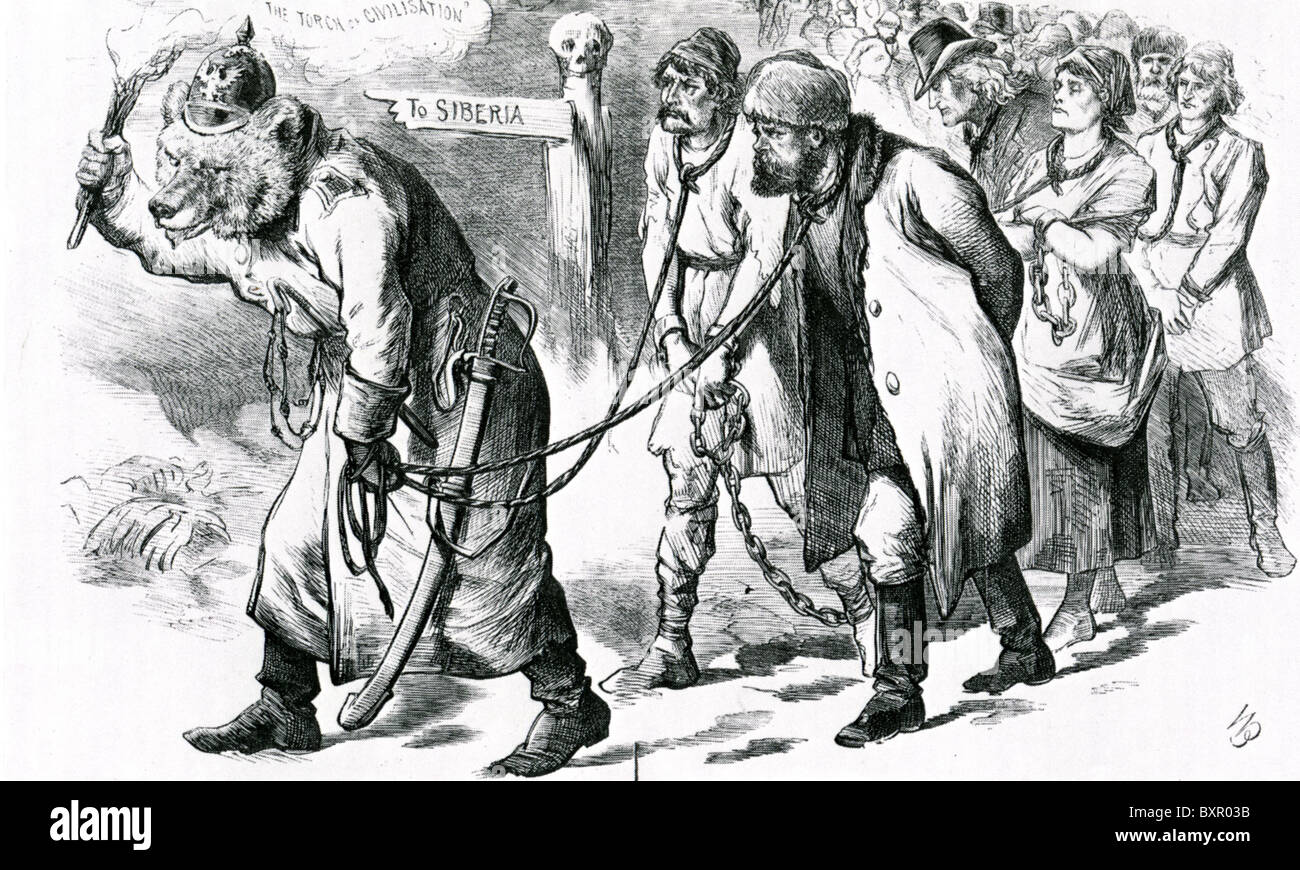 'RUSSIAN CIVILIZATION' Punch cartoon 3 March 1883 shows prisoners being sent to Siberia Stock Photohttps://www.alamy.com/image-license-details/?v=1https://www.alamy.com/stock-photo-russian-civilization-punch-cartoon-3-march-1883-shows-prisoners-being-33696415.html
'RUSSIAN CIVILIZATION' Punch cartoon 3 March 1883 shows prisoners being sent to Siberia Stock Photohttps://www.alamy.com/image-license-details/?v=1https://www.alamy.com/stock-photo-russian-civilization-punch-cartoon-3-march-1883-shows-prisoners-being-33696415.htmlRMBXR03B–'RUSSIAN CIVILIZATION' Punch cartoon 3 March 1883 shows prisoners being sent to Siberia
 Fresco in the Bonampak painting temple depicting a battle scene and the punishment inflicted on p… Stock Photohttps://www.alamy.com/image-license-details/?v=1https://www.alamy.com/fresco-in-the-bonampak-painting-temple-depicting-a-battle-scene-and-the-punishment-inflicted-on-p-image212469695.html
Fresco in the Bonampak painting temple depicting a battle scene and the punishment inflicted on p… Stock Photohttps://www.alamy.com/image-license-details/?v=1https://www.alamy.com/fresco-in-the-bonampak-painting-temple-depicting-a-battle-scene-and-the-punishment-inflicted-on-p-image212469695.htmlRMP9JR7B–Fresco in the Bonampak painting temple depicting a battle scene and the punishment inflicted on p…
 Tokugawa bakuhu keijizufu, published in Meiji 26 (1893), Private Collection. It showing crime and punishment during Edo Period. Carrying of prisoner. Prisoners who can't walk because of torture or sickness are carried with basket. Stock Photohttps://www.alamy.com/image-license-details/?v=1https://www.alamy.com/tokugawa-bakuhu-keijizufu-published-in-meiji-26-1893-private-collection-it-showing-crime-and-punishment-during-edo-period-carrying-of-prisoner-prisoners-who-cant-walk-because-of-torture-or-sickness-are-carried-with-basket-image215189111.html
Tokugawa bakuhu keijizufu, published in Meiji 26 (1893), Private Collection. It showing crime and punishment during Edo Period. Carrying of prisoner. Prisoners who can't walk because of torture or sickness are carried with basket. Stock Photohttps://www.alamy.com/image-license-details/?v=1https://www.alamy.com/tokugawa-bakuhu-keijizufu-published-in-meiji-26-1893-private-collection-it-showing-crime-and-punishment-during-edo-period-carrying-of-prisoner-prisoners-who-cant-walk-because-of-torture-or-sickness-are-carried-with-basket-image215189111.htmlRMPE2KWB–Tokugawa bakuhu keijizufu, published in Meiji 26 (1893), Private Collection. It showing crime and punishment during Edo Period. Carrying of prisoner. Prisoners who can't walk because of torture or sickness are carried with basket.
 Prisoners inside their cells at Dartmoor Prison making soft toys for local childrens charities. December 1969 Z11562-001 Stock Photohttps://www.alamy.com/image-license-details/?v=1https://www.alamy.com/stock-photo-prisoners-inside-their-cells-at-dartmoor-prison-making-soft-toys-for-20387701.html
Prisoners inside their cells at Dartmoor Prison making soft toys for local childrens charities. December 1969 Z11562-001 Stock Photohttps://www.alamy.com/image-license-details/?v=1https://www.alamy.com/stock-photo-prisoners-inside-their-cells-at-dartmoor-prison-making-soft-toys-for-20387701.htmlRMB54MM5–Prisoners inside their cells at Dartmoor Prison making soft toys for local childrens charities. December 1969 Z11562-001
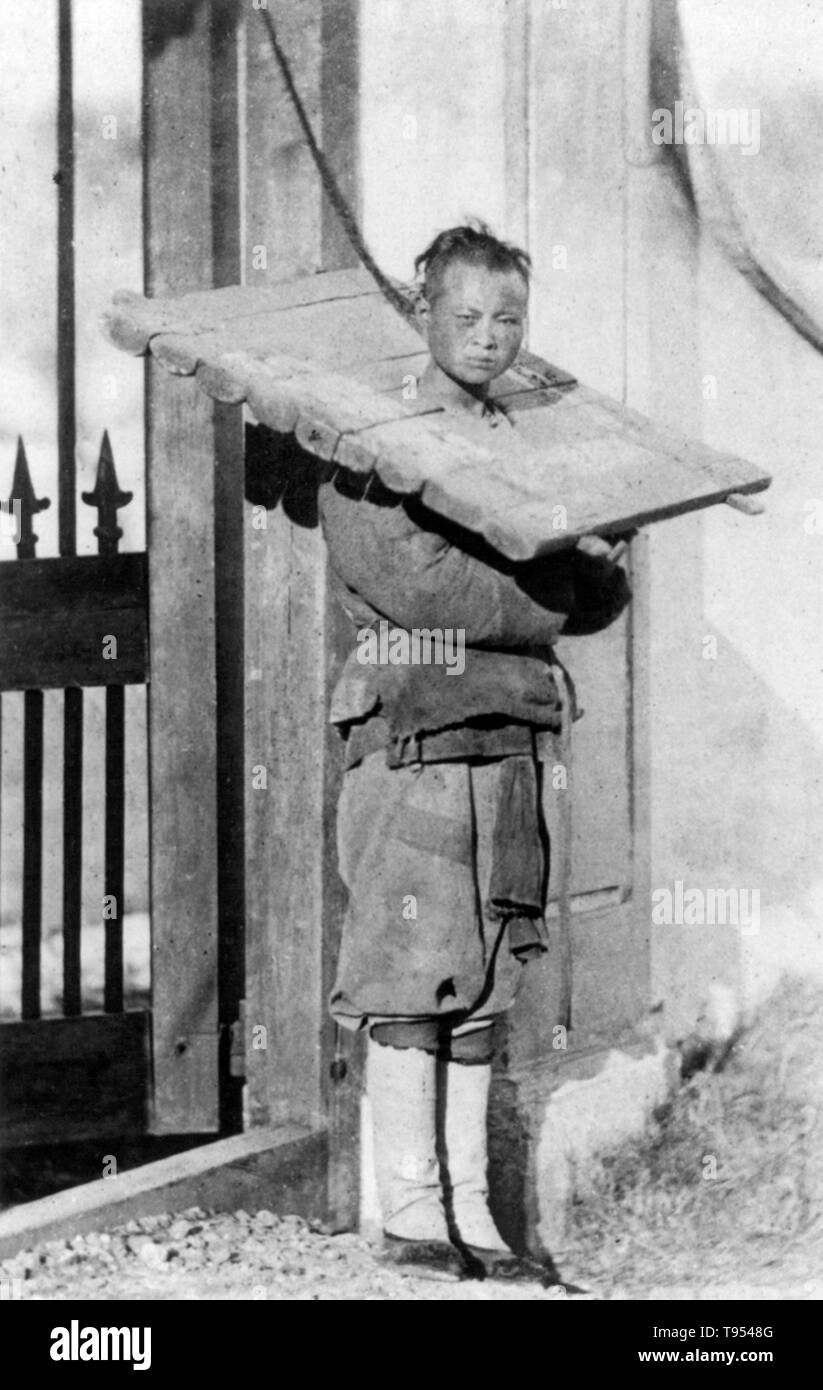 A cangue is a device that was used for public humiliation and corporal punishment in China and some other parts of East Asia and Southeast Asia until the early years of the 20th century. A typical cangue would consist of a large, heavy flat board with a hole in the center large enough for a person's neck. The board consisted of two pieces. These pieces were closed around a prisoner's neck, and then fastened shut along the edges by locks or hinges. Stock Photohttps://www.alamy.com/image-license-details/?v=1https://www.alamy.com/a-cangue-is-a-device-that-was-used-for-public-humiliation-and-corporal-punishment-in-china-and-some-other-parts-of-east-asia-and-southeast-asia-until-the-early-years-of-the-20th-century-a-typical-cangue-would-consist-of-a-large-heavy-flat-board-with-a-hole-in-the-center-large-enough-for-a-persons-neck-the-board-consisted-of-two-pieces-these-pieces-were-closed-around-a-prisoners-neck-and-then-fastened-shut-along-the-edges-by-locks-or-hinges-image246590192.html
A cangue is a device that was used for public humiliation and corporal punishment in China and some other parts of East Asia and Southeast Asia until the early years of the 20th century. A typical cangue would consist of a large, heavy flat board with a hole in the center large enough for a person's neck. The board consisted of two pieces. These pieces were closed around a prisoner's neck, and then fastened shut along the edges by locks or hinges. Stock Photohttps://www.alamy.com/image-license-details/?v=1https://www.alamy.com/a-cangue-is-a-device-that-was-used-for-public-humiliation-and-corporal-punishment-in-china-and-some-other-parts-of-east-asia-and-southeast-asia-until-the-early-years-of-the-20th-century-a-typical-cangue-would-consist-of-a-large-heavy-flat-board-with-a-hole-in-the-center-large-enough-for-a-persons-neck-the-board-consisted-of-two-pieces-these-pieces-were-closed-around-a-prisoners-neck-and-then-fastened-shut-along-the-edges-by-locks-or-hinges-image246590192.htmlRMT9548G–A cangue is a device that was used for public humiliation and corporal punishment in China and some other parts of East Asia and Southeast Asia until the early years of the 20th century. A typical cangue would consist of a large, heavy flat board with a hole in the center large enough for a person's neck. The board consisted of two pieces. These pieces were closed around a prisoner's neck, and then fastened shut along the edges by locks or hinges.
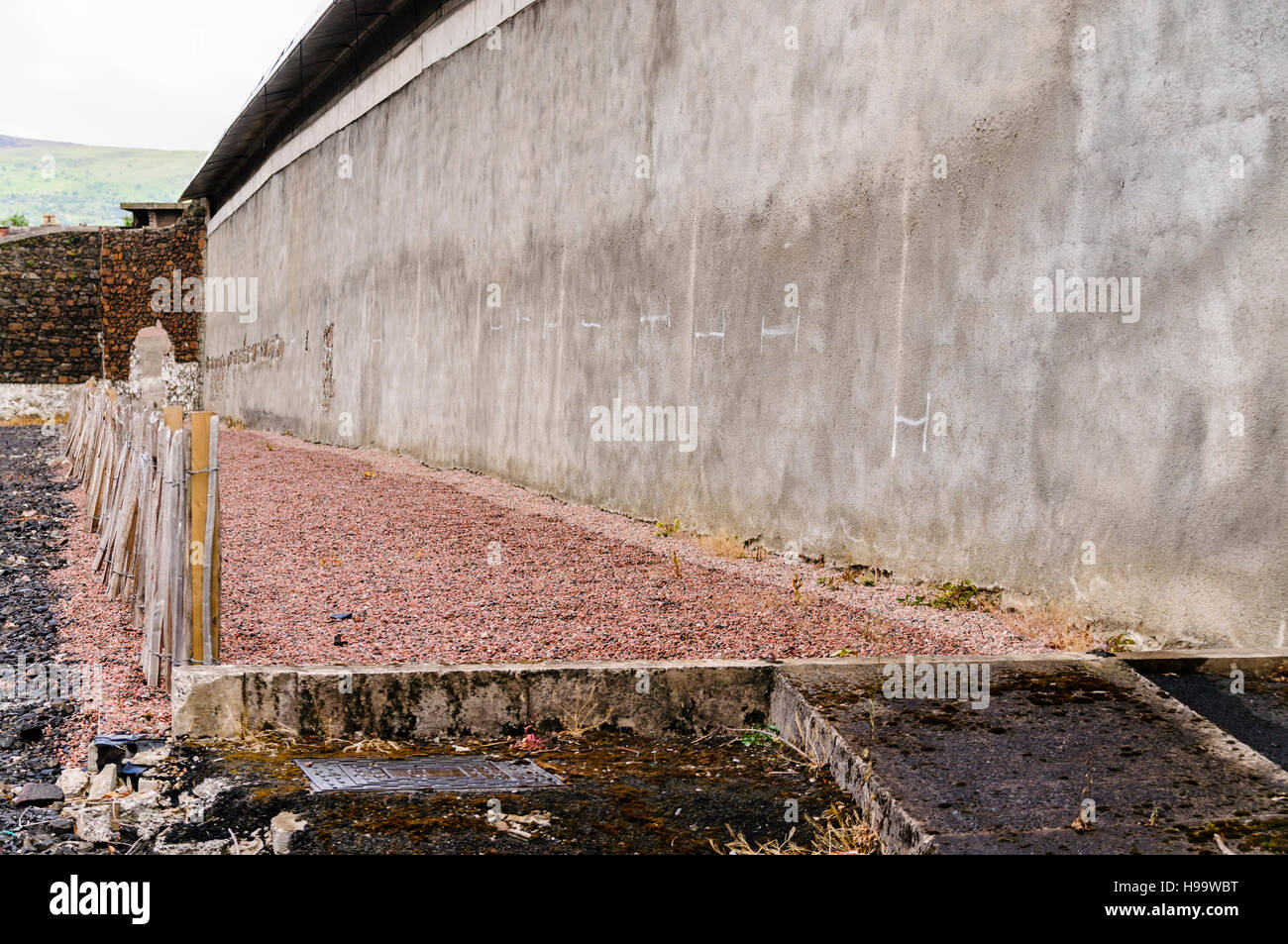 Site of a number of graves of executed prisoners inside Crumlin Road Gaol, a Victorian prison modelled on Pentonville in London. Stock Photohttps://www.alamy.com/image-license-details/?v=1https://www.alamy.com/stock-photo-site-of-a-number-of-graves-of-executed-prisoners-inside-crumlin-road-126221980.html
Site of a number of graves of executed prisoners inside Crumlin Road Gaol, a Victorian prison modelled on Pentonville in London. Stock Photohttps://www.alamy.com/image-license-details/?v=1https://www.alamy.com/stock-photo-site-of-a-number-of-graves-of-executed-prisoners-inside-crumlin-road-126221980.htmlRMH99WBT–Site of a number of graves of executed prisoners inside Crumlin Road Gaol, a Victorian prison modelled on Pentonville in London.
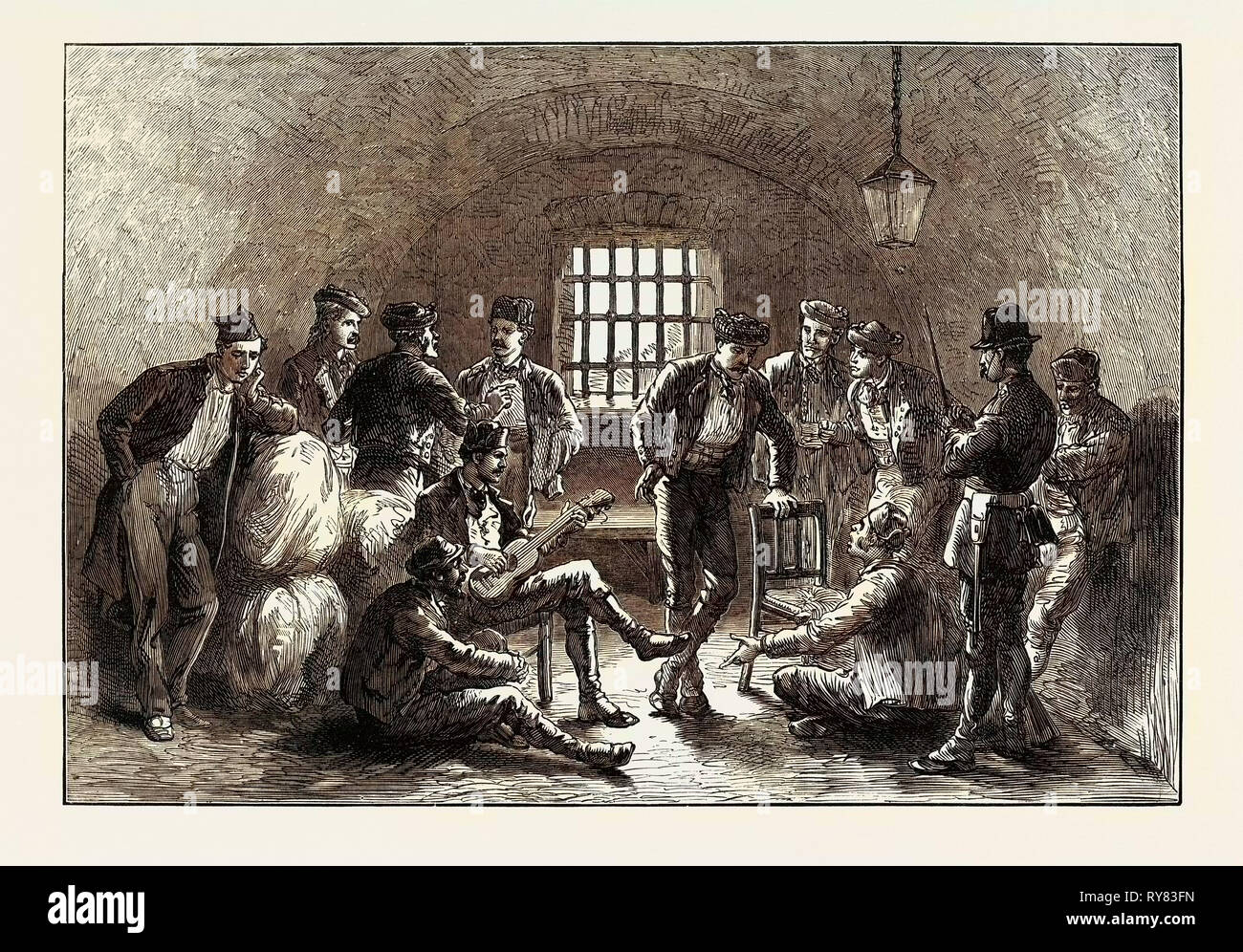 Spain: Carlist Prisoners in the Ancient Moorish Prison of the Alhambra 1873 Stock Photohttps://www.alamy.com/image-license-details/?v=1https://www.alamy.com/spain-carlist-prisoners-in-the-ancient-moorish-prison-of-the-alhambra-1873-image240508905.html
Spain: Carlist Prisoners in the Ancient Moorish Prison of the Alhambra 1873 Stock Photohttps://www.alamy.com/image-license-details/?v=1https://www.alamy.com/spain-carlist-prisoners-in-the-ancient-moorish-prison-of-the-alhambra-1873-image240508905.htmlRMRY83FN–Spain: Carlist Prisoners in the Ancient Moorish Prison of the Alhambra 1873
 Vintage 1903 Photographic Postcard of Old Newgate Prison, London. Mrs Fry's Gate and The Exercise Ground. Stock Photohttps://www.alamy.com/image-license-details/?v=1https://www.alamy.com/vintage-1903-photographic-postcard-of-old-newgate-prison-london-mrs-frys-gate-and-the-exercise-ground-image224036486.html
Vintage 1903 Photographic Postcard of Old Newgate Prison, London. Mrs Fry's Gate and The Exercise Ground. Stock Photohttps://www.alamy.com/image-license-details/?v=1https://www.alamy.com/vintage-1903-photographic-postcard-of-old-newgate-prison-london-mrs-frys-gate-and-the-exercise-ground-image224036486.htmlRMR0DMR2–Vintage 1903 Photographic Postcard of Old Newgate Prison, London. Mrs Fry's Gate and The Exercise Ground.
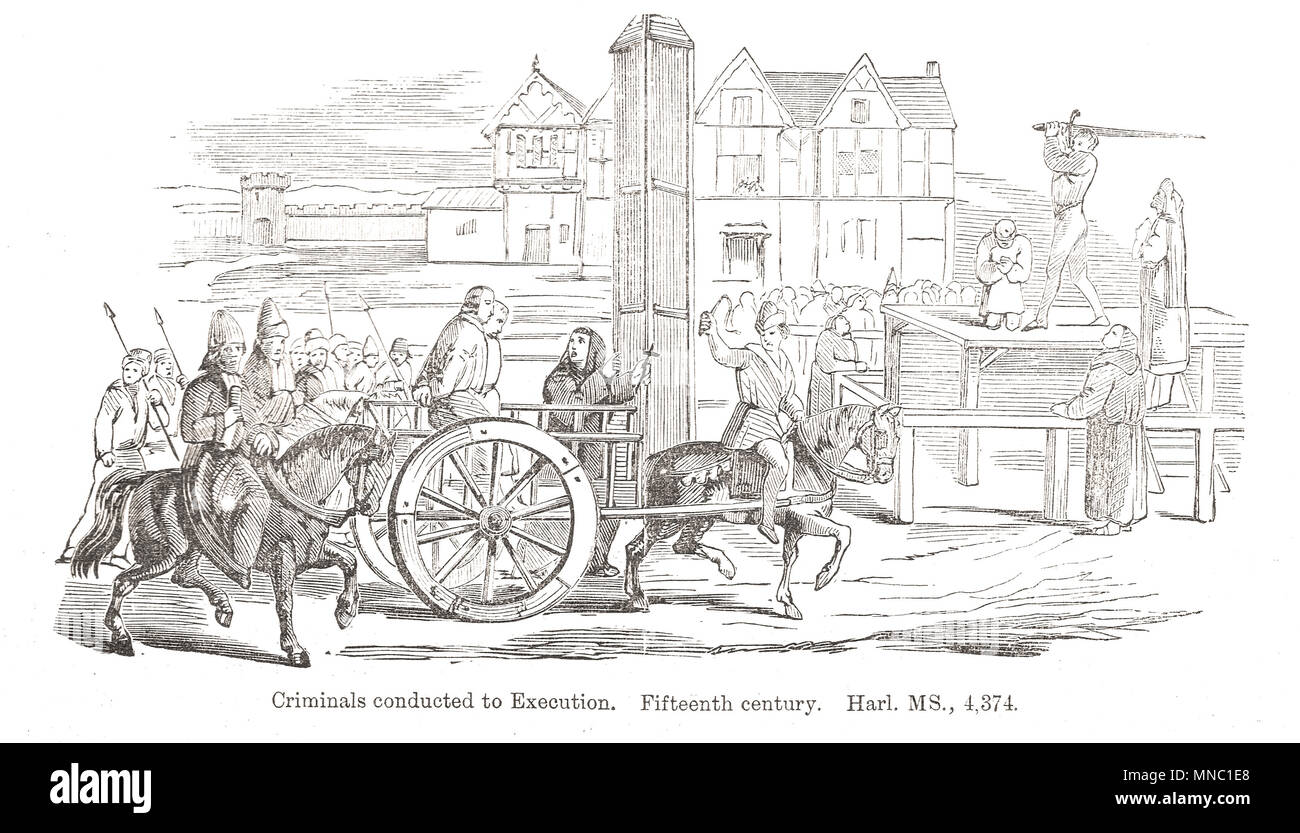 Criminals conducted to execution in the 15th century Stock Photohttps://www.alamy.com/image-license-details/?v=1https://www.alamy.com/criminals-conducted-to-execution-in-the-15th-century-image185276064.html
Criminals conducted to execution in the 15th century Stock Photohttps://www.alamy.com/image-license-details/?v=1https://www.alamy.com/criminals-conducted-to-execution-in-the-15th-century-image185276064.htmlRMMNC1E8–Criminals conducted to execution in the 15th century
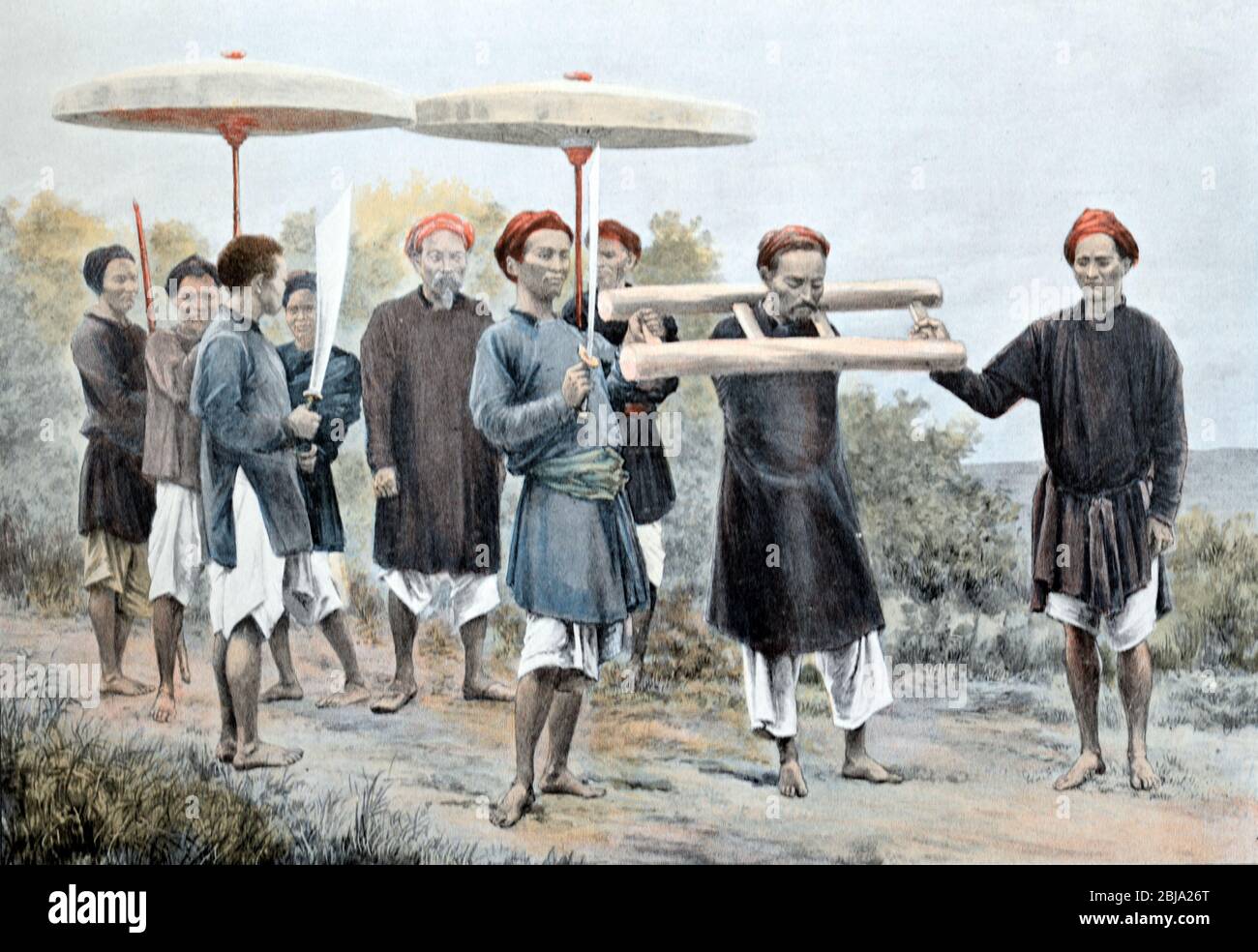 Prisoners including Prisoner Wearing a Cangue or Tcha, a Form of Neck Yoke or Pillory Used as Punishment or Torture of Prisoners in Vietnam and Elsewhere in Southeast Asia c1890 Stock Photohttps://www.alamy.com/image-license-details/?v=1https://www.alamy.com/prisoners-including-prisoner-wearing-a-cangue-or-tcha-a-form-of-neck-yoke-or-pillory-used-as-punishment-or-torture-of-prisoners-in-vietnam-and-elsewhere-in-southeast-asia-c1890-image355492448.html
Prisoners including Prisoner Wearing a Cangue or Tcha, a Form of Neck Yoke or Pillory Used as Punishment or Torture of Prisoners in Vietnam and Elsewhere in Southeast Asia c1890 Stock Photohttps://www.alamy.com/image-license-details/?v=1https://www.alamy.com/prisoners-including-prisoner-wearing-a-cangue-or-tcha-a-form-of-neck-yoke-or-pillory-used-as-punishment-or-torture-of-prisoners-in-vietnam-and-elsewhere-in-southeast-asia-c1890-image355492448.htmlRM2BJA26T–Prisoners including Prisoner Wearing a Cangue or Tcha, a Form of Neck Yoke or Pillory Used as Punishment or Torture of Prisoners in Vietnam and Elsewhere in Southeast Asia c1890
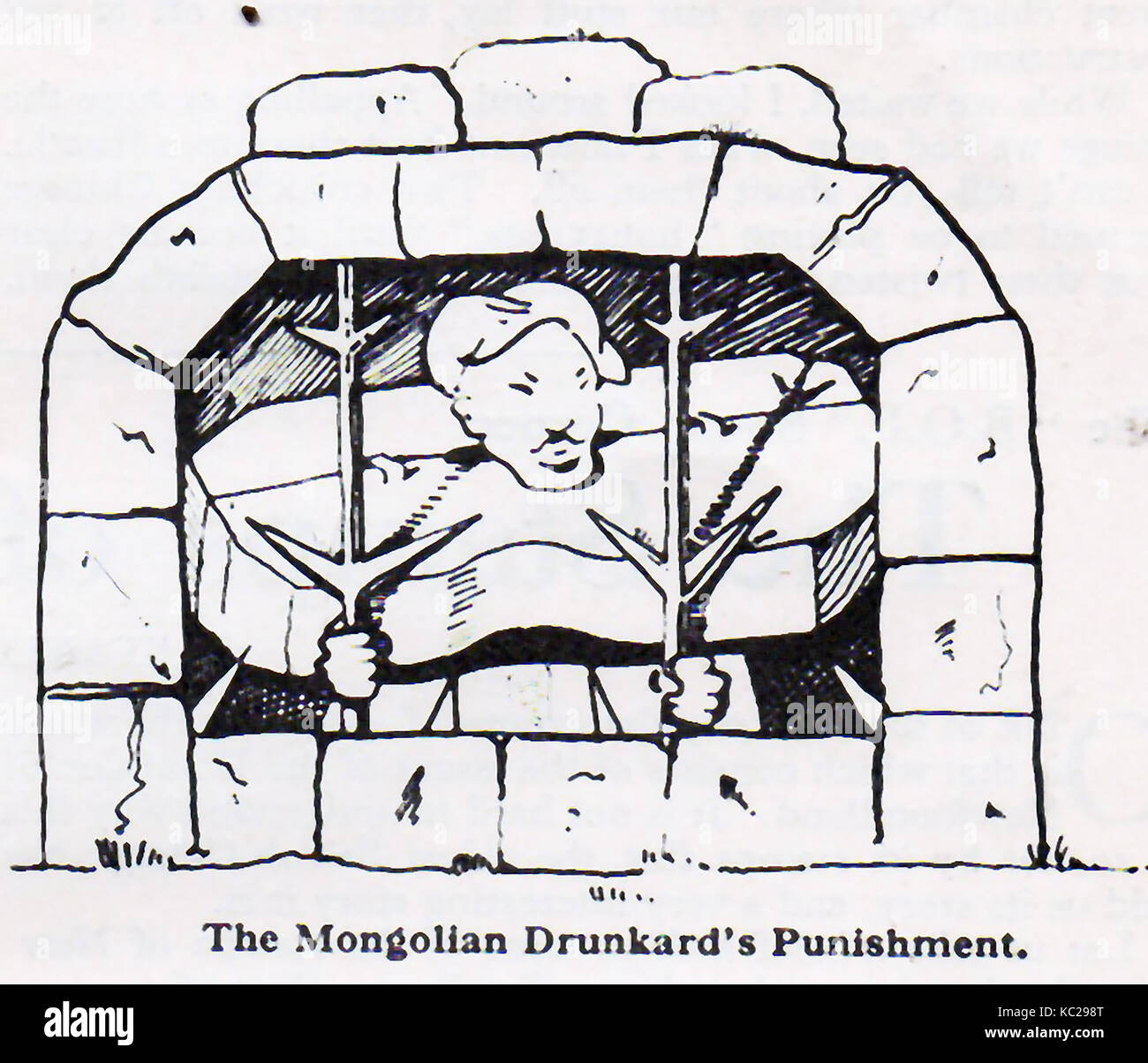 1930's - Immurement - Crime,Punishment and executions in Mongolia as depicted in a publication of the time - A newspaper in 1914 reported 'shut up for life in heavy iron-bound coffins, which do not permit them to sit upright or lie down. These prisoners see daylight for only a few minutes daily when the food is thrown into their coffins through a small hole' Stock Photohttps://www.alamy.com/image-license-details/?v=1https://www.alamy.com/stock-image-1930s-immurement-crimepunishment-and-executions-in-mongolia-as-depicted-162320392.html
1930's - Immurement - Crime,Punishment and executions in Mongolia as depicted in a publication of the time - A newspaper in 1914 reported 'shut up for life in heavy iron-bound coffins, which do not permit them to sit upright or lie down. These prisoners see daylight for only a few minutes daily when the food is thrown into their coffins through a small hole' Stock Photohttps://www.alamy.com/image-license-details/?v=1https://www.alamy.com/stock-image-1930s-immurement-crimepunishment-and-executions-in-mongolia-as-depicted-162320392.htmlRMKC298T–1930's - Immurement - Crime,Punishment and executions in Mongolia as depicted in a publication of the time - A newspaper in 1914 reported 'shut up for life in heavy iron-bound coffins, which do not permit them to sit upright or lie down. These prisoners see daylight for only a few minutes daily when the food is thrown into their coffins through a small hole'
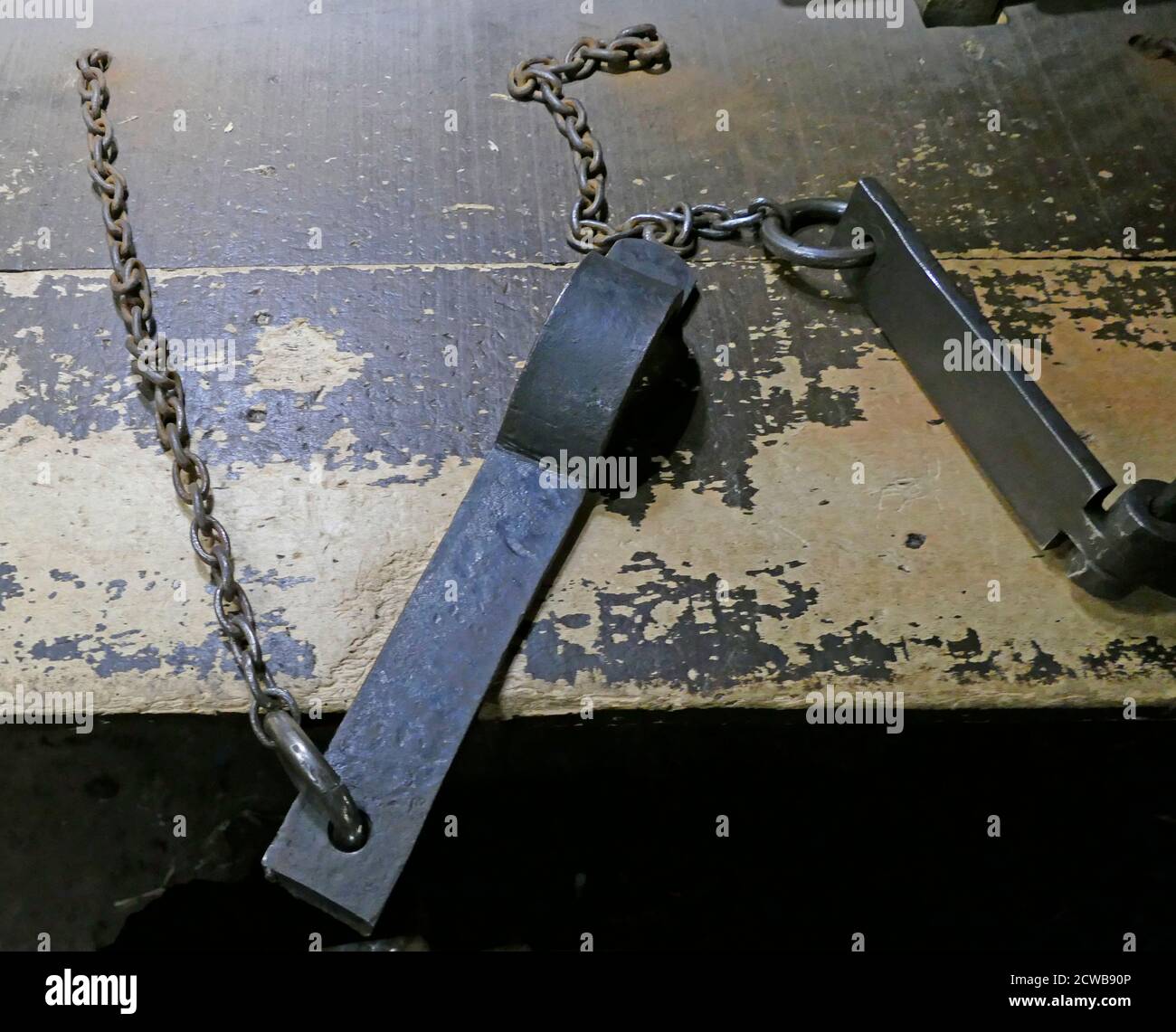 manacles used for prisoners in English gaols circa 1800 Stock Photohttps://www.alamy.com/image-license-details/?v=1https://www.alamy.com/manacles-used-for-prisoners-in-english-gaols-circa-1800-image377032678.html
manacles used for prisoners in English gaols circa 1800 Stock Photohttps://www.alamy.com/image-license-details/?v=1https://www.alamy.com/manacles-used-for-prisoners-in-english-gaols-circa-1800-image377032678.htmlRM2CWB90P–manacles used for prisoners in English gaols circa 1800
 PUNISHMENT/N. AFRICA Stock Photohttps://www.alamy.com/image-license-details/?v=1https://www.alamy.com/stock-photo-punishmentn-africa-56758339.html
PUNISHMENT/N. AFRICA Stock Photohttps://www.alamy.com/image-license-details/?v=1https://www.alamy.com/stock-photo-punishmentn-africa-56758339.htmlRMD89FRF–PUNISHMENT/N. AFRICA
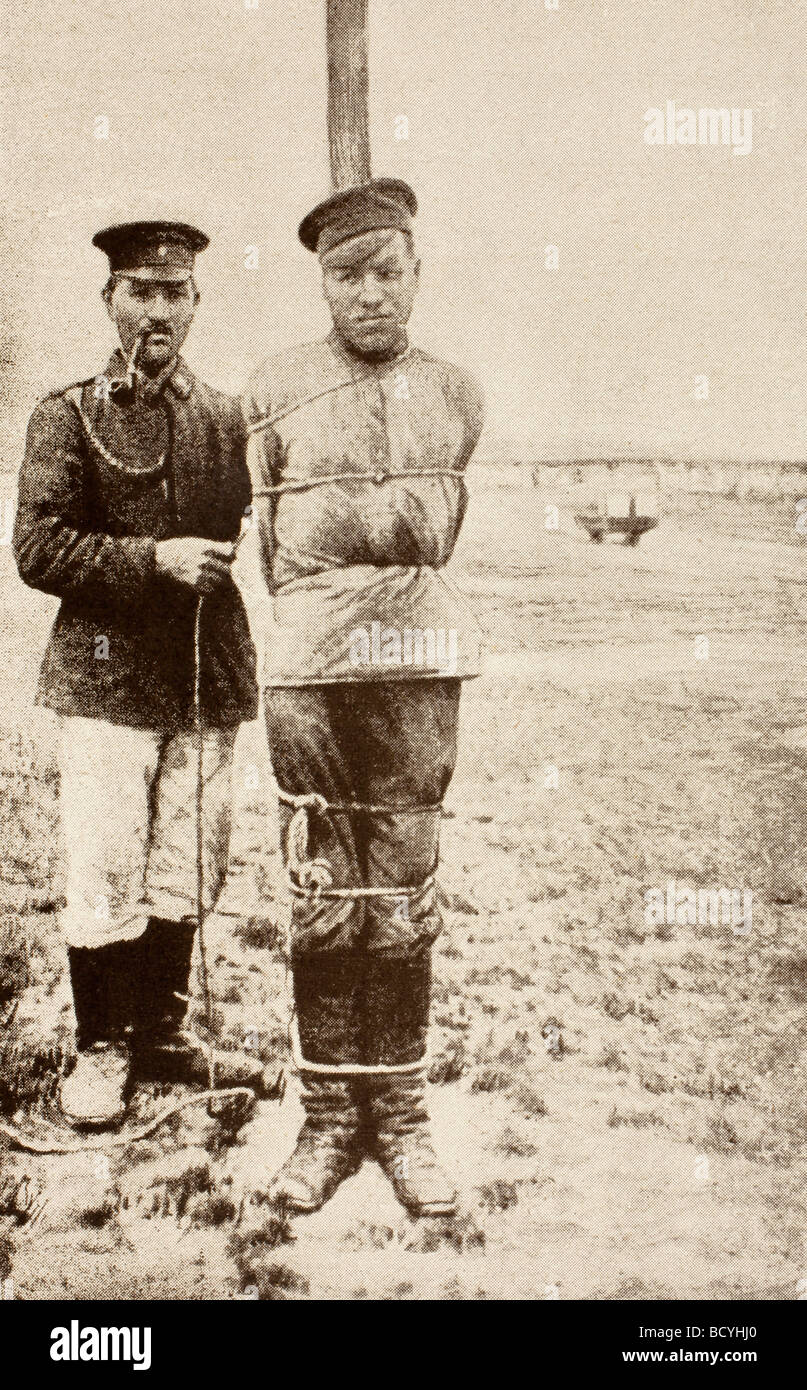 A First World War russian prisoner of war tied to a pole. In the British Army this was called Field Punishment No 1. Stock Photohttps://www.alamy.com/image-license-details/?v=1https://www.alamy.com/stock-photo-a-first-world-war-russian-prisoner-of-war-tied-to-a-pole-in-the-british-25192776.html
A First World War russian prisoner of war tied to a pole. In the British Army this was called Field Punishment No 1. Stock Photohttps://www.alamy.com/image-license-details/?v=1https://www.alamy.com/stock-photo-a-first-world-war-russian-prisoner-of-war-tied-to-a-pole-in-the-british-25192776.htmlRMBCYHJ0–A First World War russian prisoner of war tied to a pole. In the British Army this was called Field Punishment No 1.
 Victorian London prison, Newgate. Prisoners in the exercise yard. Engraving by Gustave Doré, from 'London, a Pilgrimage, by Stock Photohttps://www.alamy.com/image-license-details/?v=1https://www.alamy.com/stock-photo-victorian-london-prison-newgate-prisoners-in-the-exercise-yard-engraving-83346738.html
Victorian London prison, Newgate. Prisoners in the exercise yard. Engraving by Gustave Doré, from 'London, a Pilgrimage, by Stock Photohttps://www.alamy.com/image-license-details/?v=1https://www.alamy.com/stock-photo-victorian-london-prison-newgate-prisoners-in-the-exercise-yard-engraving-83346738.htmlRMERGNH6–Victorian London prison, Newgate. Prisoners in the exercise yard. Engraving by Gustave Doré, from 'London, a Pilgrimage, by
 Three prisoners, Robert Walsh, Stephen Blake and Martin Coughlan, stand on the roof of 'D' Block at Wormwood Scrubs Prison, London during a protest by the three inmates. They pelted prison officers with slates from the roof and waved the Irish tricolour flag, demanding 'more humane prison visits.' Stock Photohttps://www.alamy.com/image-license-details/?v=1https://www.alamy.com/stock-photo-three-prisoners-robert-walsh-stephen-blake-and-martin-coughlan-stand-105955459.html
Three prisoners, Robert Walsh, Stephen Blake and Martin Coughlan, stand on the roof of 'D' Block at Wormwood Scrubs Prison, London during a protest by the three inmates. They pelted prison officers with slates from the roof and waved the Irish tricolour flag, demanding 'more humane prison visits.' Stock Photohttps://www.alamy.com/image-license-details/?v=1https://www.alamy.com/stock-photo-three-prisoners-robert-walsh-stephen-blake-and-martin-coughlan-stand-105955459.htmlRMG4AK7F–Three prisoners, Robert Walsh, Stephen Blake and Martin Coughlan, stand on the roof of 'D' Block at Wormwood Scrubs Prison, London during a protest by the three inmates. They pelted prison officers with slates from the roof and waved the Irish tricolour flag, demanding 'more humane prison visits.'
 Engraving depicting a gang of prisoners in London. Dated 18th Century Stock Photohttps://www.alamy.com/image-license-details/?v=1https://www.alamy.com/engraving-depicting-a-gang-of-prisoners-in-london-dated-18th-century-image483535704.html
Engraving depicting a gang of prisoners in London. Dated 18th Century Stock Photohttps://www.alamy.com/image-license-details/?v=1https://www.alamy.com/engraving-depicting-a-gang-of-prisoners-in-london-dated-18th-century-image483535704.htmlRM2K2JXM8–Engraving depicting a gang of prisoners in London. Dated 18th Century
 Construction work on the Eastern Siberian Railway near Khabarovsk, Russia Stock Photohttps://www.alamy.com/image-license-details/?v=1https://www.alamy.com/stock-photo-construction-work-on-the-eastern-siberian-railway-near-khabarovsk-114683603.html
Construction work on the Eastern Siberian Railway near Khabarovsk, Russia Stock Photohttps://www.alamy.com/image-license-details/?v=1https://www.alamy.com/stock-photo-construction-work-on-the-eastern-siberian-railway-near-khabarovsk-114683603.htmlRMGJG82Y–Construction work on the Eastern Siberian Railway near Khabarovsk, Russia
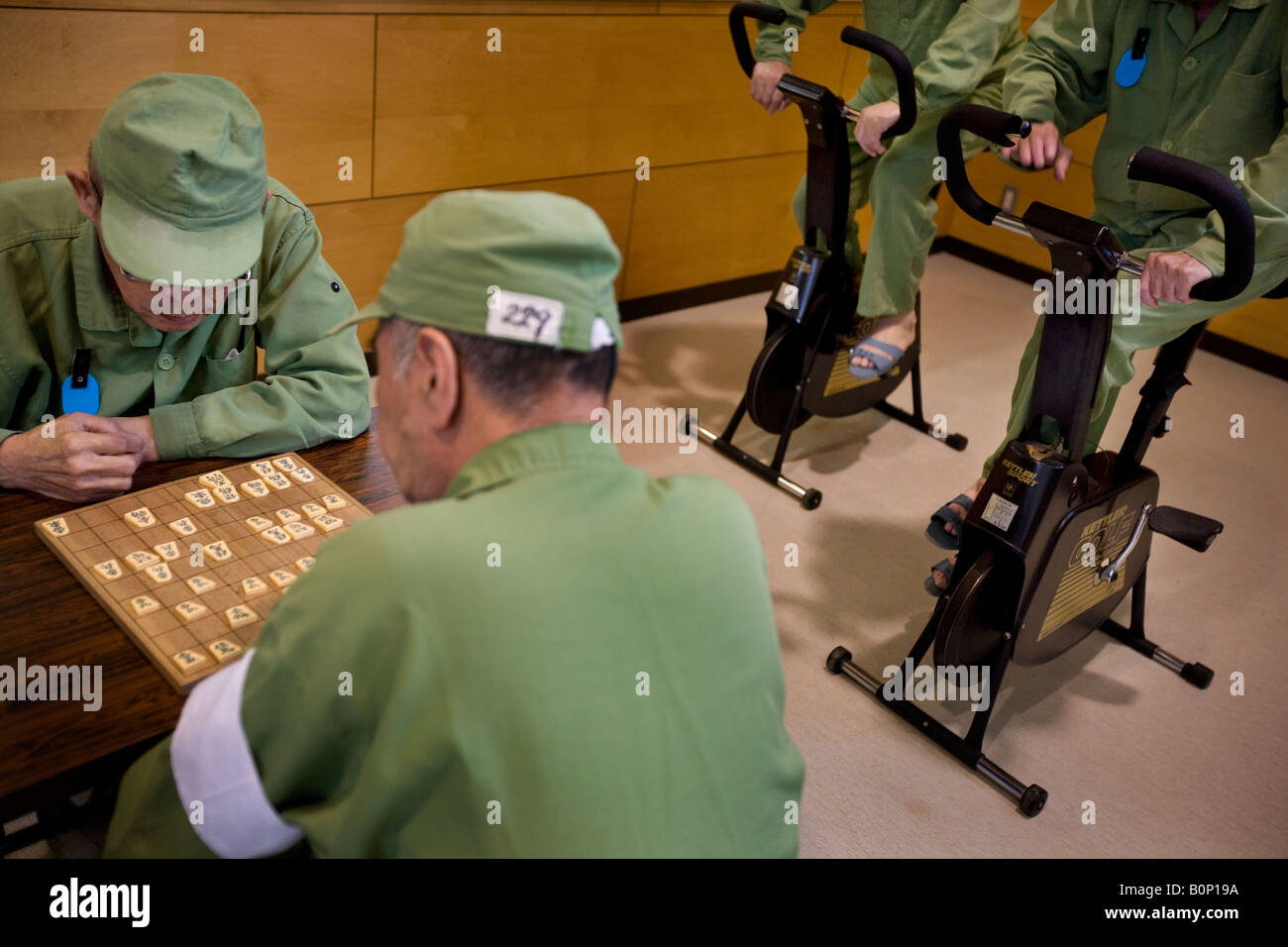 Elderly pensioner prisoners, Onomichi prison, Japan May 19th 2008 Stock Photohttps://www.alamy.com/image-license-details/?v=1https://www.alamy.com/stock-photo-elderly-pensioner-prisoners-onomichi-prison-japan-may-19th-2008-17694358.html
Elderly pensioner prisoners, Onomichi prison, Japan May 19th 2008 Stock Photohttps://www.alamy.com/image-license-details/?v=1https://www.alamy.com/stock-photo-elderly-pensioner-prisoners-onomichi-prison-japan-may-19th-2008-17694358.htmlRMB0P19A–Elderly pensioner prisoners, Onomichi prison, Japan May 19th 2008
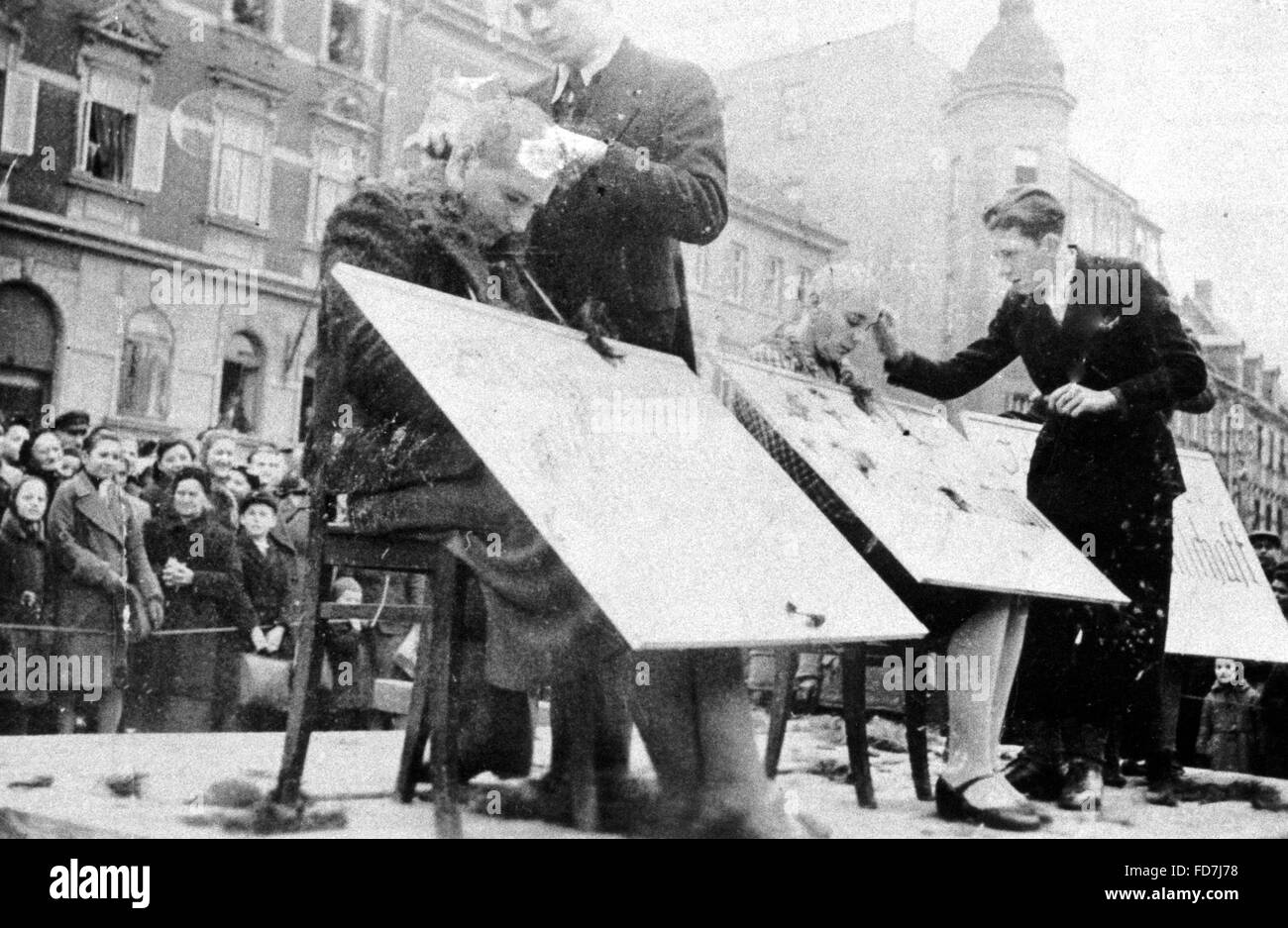 Punishment for relations with forced laborers Stock Photohttps://www.alamy.com/image-license-details/?v=1https://www.alamy.com/stock-photo-punishment-for-relations-with-forced-laborers-94210348.html
Punishment for relations with forced laborers Stock Photohttps://www.alamy.com/image-license-details/?v=1https://www.alamy.com/stock-photo-punishment-for-relations-with-forced-laborers-94210348.htmlRMFD7J78–Punishment for relations with forced laborers
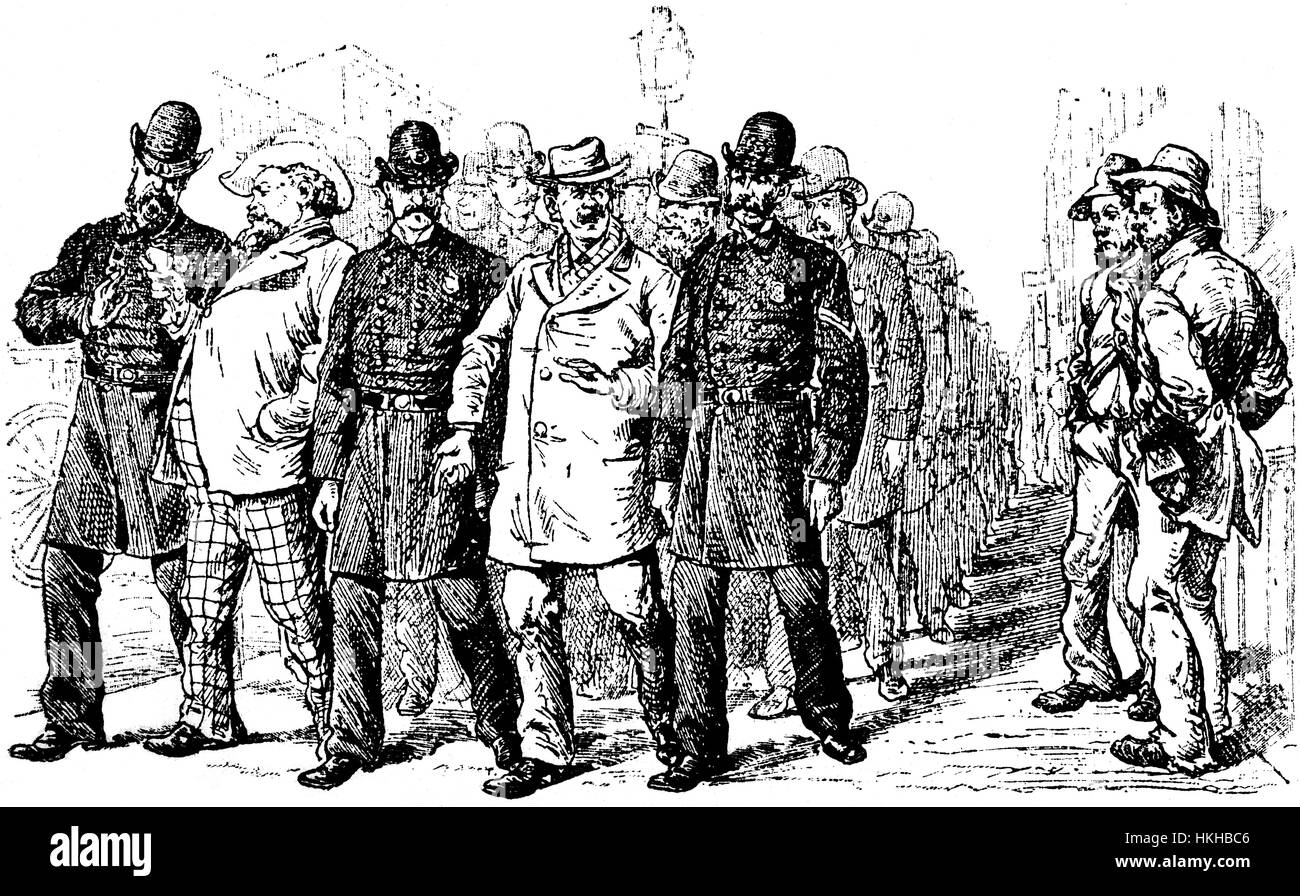 1879: A parade of delinquents in the Custody of New York Policemen, United States of America Stock Photohttps://www.alamy.com/image-license-details/?v=1https://www.alamy.com/stock-photo-1879-a-parade-of-delinquents-in-the-custody-of-new-york-policemen-132533190.html
1879: A parade of delinquents in the Custody of New York Policemen, United States of America Stock Photohttps://www.alamy.com/image-license-details/?v=1https://www.alamy.com/stock-photo-1879-a-parade-of-delinquents-in-the-custody-of-new-york-policemen-132533190.htmlRMHKHBC6–1879: A parade of delinquents in the Custody of New York Policemen, United States of America
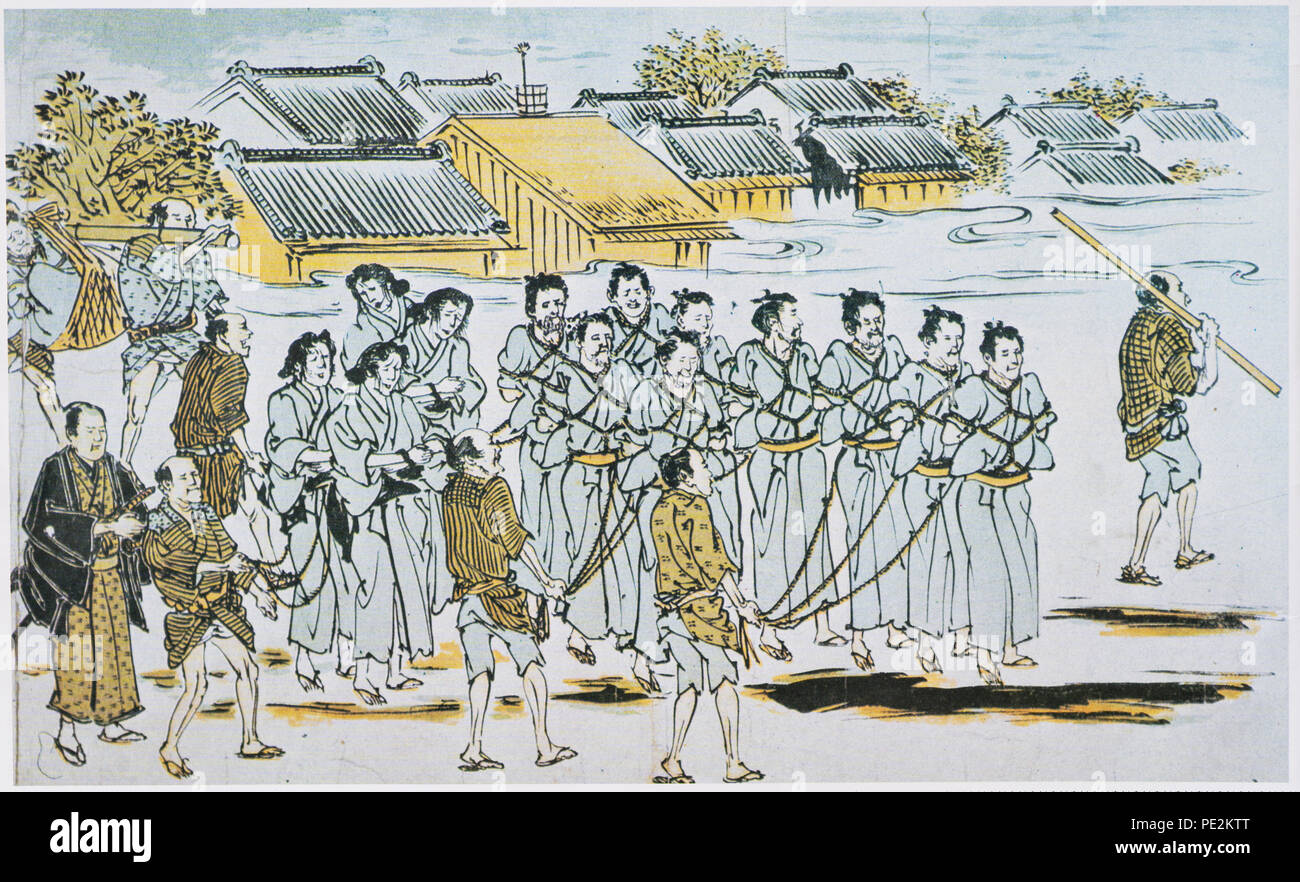 Tokugawa bakuhu keijizufu, published in Meiji 26 (1893), Private Collection. It showing crime and punishment during Edo Period. Prisoners are moved from former Edo Tenma-cho prison to Machi bugyo for investigation. Stock Photohttps://www.alamy.com/image-license-details/?v=1https://www.alamy.com/tokugawa-bakuhu-keijizufu-published-in-meiji-26-1893-private-collection-it-showing-crime-and-punishment-during-edo-period-prisoners-are-moved-from-former-edo-tenma-cho-prison-to-machi-bugyo-for-investigation-image215189096.html
Tokugawa bakuhu keijizufu, published in Meiji 26 (1893), Private Collection. It showing crime and punishment during Edo Period. Prisoners are moved from former Edo Tenma-cho prison to Machi bugyo for investigation. Stock Photohttps://www.alamy.com/image-license-details/?v=1https://www.alamy.com/tokugawa-bakuhu-keijizufu-published-in-meiji-26-1893-private-collection-it-showing-crime-and-punishment-during-edo-period-prisoners-are-moved-from-former-edo-tenma-cho-prison-to-machi-bugyo-for-investigation-image215189096.htmlRMPE2KTT–Tokugawa bakuhu keijizufu, published in Meiji 26 (1893), Private Collection. It showing crime and punishment during Edo Period. Prisoners are moved from former Edo Tenma-cho prison to Machi bugyo for investigation.
 Prisoners inside their cells at Dartmoor Prison making soft toys for local childrens charities. December 1969 Z11562-003 Stock Photohttps://www.alamy.com/image-license-details/?v=1https://www.alamy.com/stock-photo-prisoners-inside-their-cells-at-dartmoor-prison-making-soft-toys-for-20387706.html
Prisoners inside their cells at Dartmoor Prison making soft toys for local childrens charities. December 1969 Z11562-003 Stock Photohttps://www.alamy.com/image-license-details/?v=1https://www.alamy.com/stock-photo-prisoners-inside-their-cells-at-dartmoor-prison-making-soft-toys-for-20387706.htmlRMB54MMA–Prisoners inside their cells at Dartmoor Prison making soft toys for local childrens charities. December 1969 Z11562-003
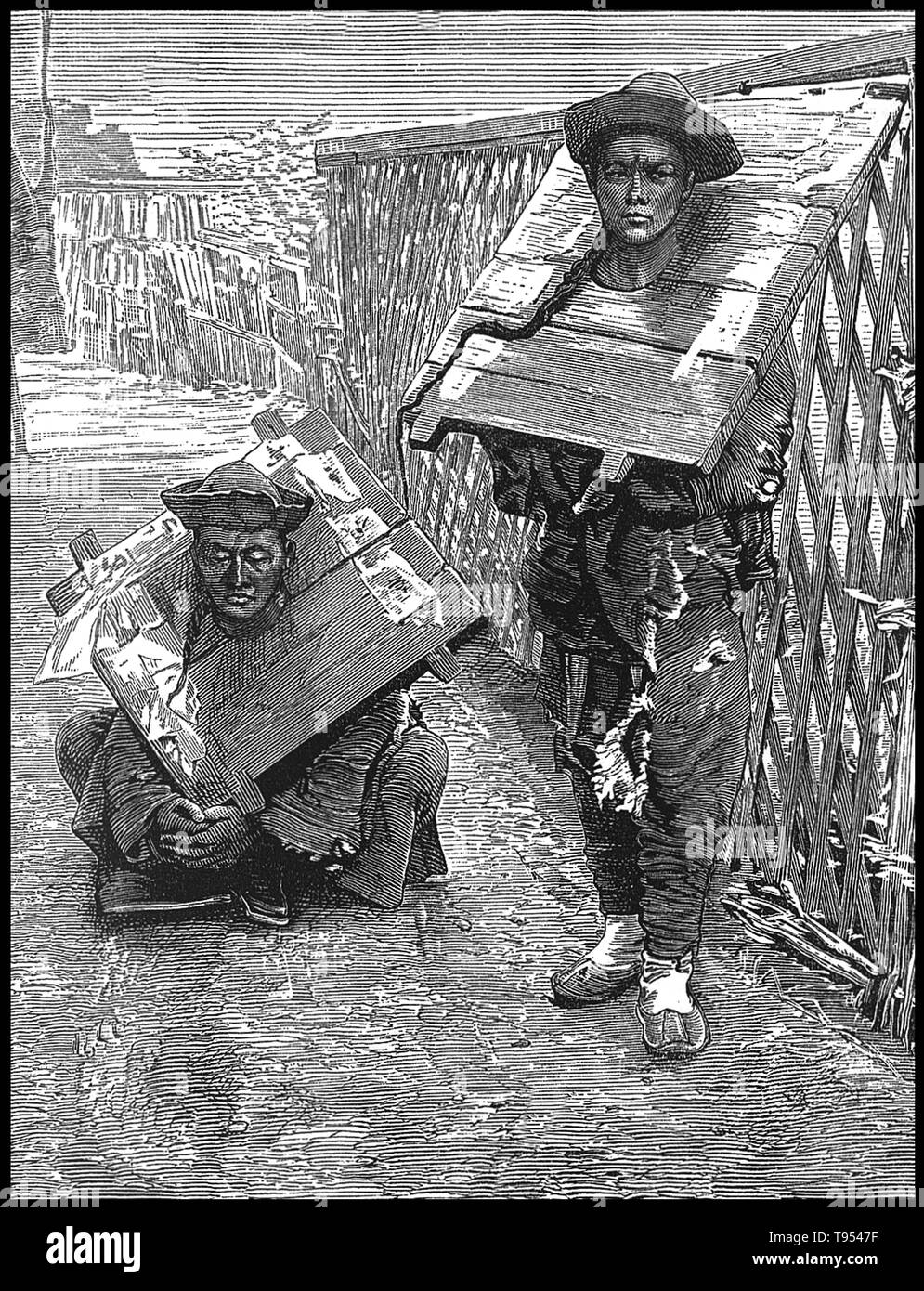 A cangue is a device that was used for public humiliation and corporal punishment in China and some other parts of East Asia and Southeast Asia until the early years of the 20th century. A typical cangue would consist of a large, heavy flat board with a hole in the center large enough for a person's neck. The board consisted of two pieces. These pieces were closed around a prisoner's neck, and then fastened shut along the edges by locks or hinges. Stock Photohttps://www.alamy.com/image-license-details/?v=1https://www.alamy.com/a-cangue-is-a-device-that-was-used-for-public-humiliation-and-corporal-punishment-in-china-and-some-other-parts-of-east-asia-and-southeast-asia-until-the-early-years-of-the-20th-century-a-typical-cangue-would-consist-of-a-large-heavy-flat-board-with-a-hole-in-the-center-large-enough-for-a-persons-neck-the-board-consisted-of-two-pieces-these-pieces-were-closed-around-a-prisoners-neck-and-then-fastened-shut-along-the-edges-by-locks-or-hinges-image246590163.html
A cangue is a device that was used for public humiliation and corporal punishment in China and some other parts of East Asia and Southeast Asia until the early years of the 20th century. A typical cangue would consist of a large, heavy flat board with a hole in the center large enough for a person's neck. The board consisted of two pieces. These pieces were closed around a prisoner's neck, and then fastened shut along the edges by locks or hinges. Stock Photohttps://www.alamy.com/image-license-details/?v=1https://www.alamy.com/a-cangue-is-a-device-that-was-used-for-public-humiliation-and-corporal-punishment-in-china-and-some-other-parts-of-east-asia-and-southeast-asia-until-the-early-years-of-the-20th-century-a-typical-cangue-would-consist-of-a-large-heavy-flat-board-with-a-hole-in-the-center-large-enough-for-a-persons-neck-the-board-consisted-of-two-pieces-these-pieces-were-closed-around-a-prisoners-neck-and-then-fastened-shut-along-the-edges-by-locks-or-hinges-image246590163.htmlRMT9547F–A cangue is a device that was used for public humiliation and corporal punishment in China and some other parts of East Asia and Southeast Asia until the early years of the 20th century. A typical cangue would consist of a large, heavy flat board with a hole in the center large enough for a person's neck. The board consisted of two pieces. These pieces were closed around a prisoner's neck, and then fastened shut along the edges by locks or hinges.
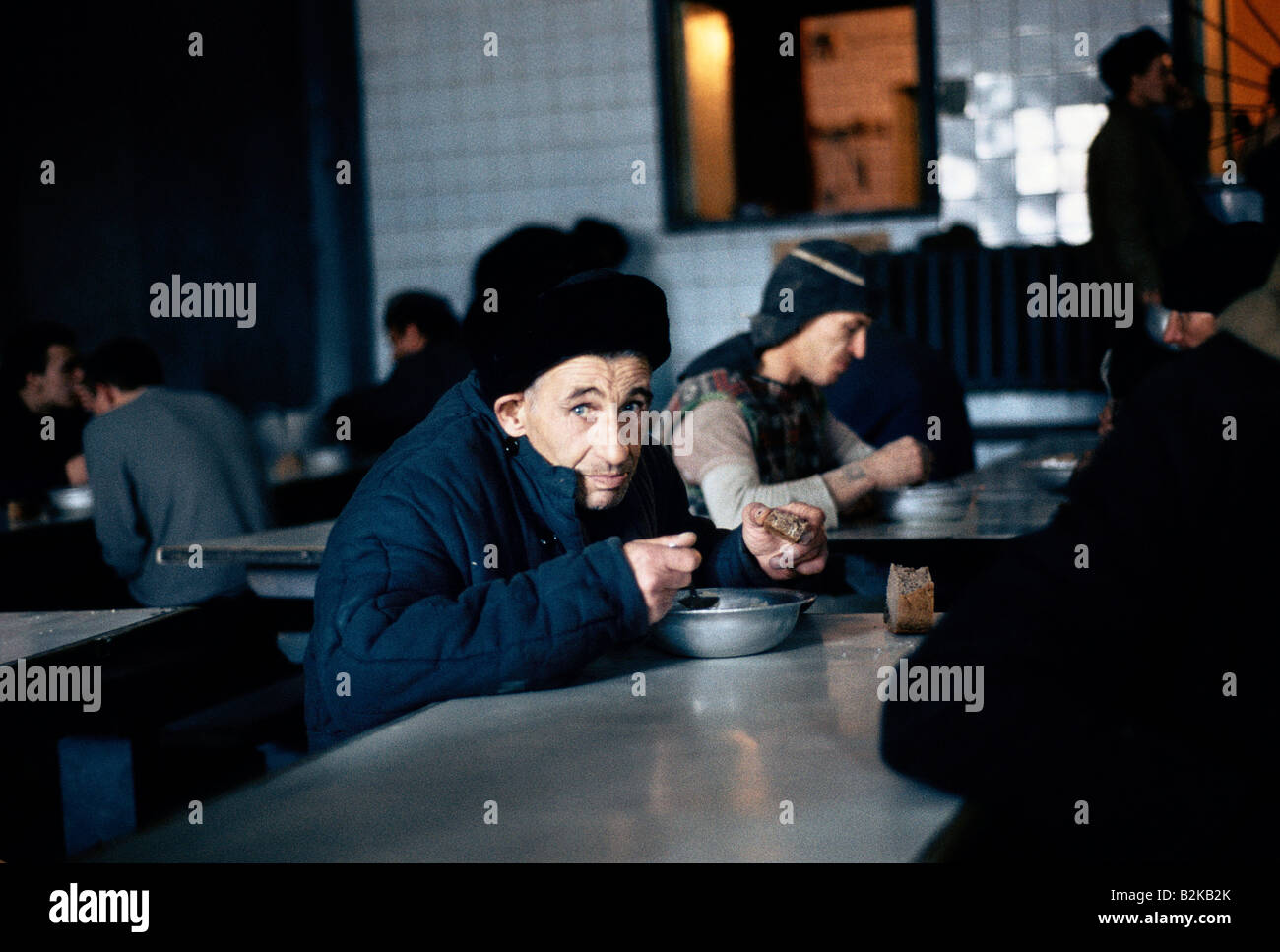 prisoners eating meal of bread and soup in a siberian prison canteen Stock Photohttps://www.alamy.com/image-license-details/?v=1https://www.alamy.com/stock-photo-prisoners-eating-meal-of-bread-and-soup-in-a-siberian-prison-canteen-18865467.html
prisoners eating meal of bread and soup in a siberian prison canteen Stock Photohttps://www.alamy.com/image-license-details/?v=1https://www.alamy.com/stock-photo-prisoners-eating-meal-of-bread-and-soup-in-a-siberian-prison-canteen-18865467.htmlRMB2KB2K–prisoners eating meal of bread and soup in a siberian prison canteen
 FLEET PRISON, London, about 1780 with prisoners on a treadmill Stock Photohttps://www.alamy.com/image-license-details/?v=1https://www.alamy.com/stock-photo-fleet-prison-london-about-1780-with-prisoners-on-a-treadmill-29596080.html
FLEET PRISON, London, about 1780 with prisoners on a treadmill Stock Photohttps://www.alamy.com/image-license-details/?v=1https://www.alamy.com/stock-photo-fleet-prison-london-about-1780-with-prisoners-on-a-treadmill-29596080.htmlRMBM462T–FLEET PRISON, London, about 1780 with prisoners on a treadmill
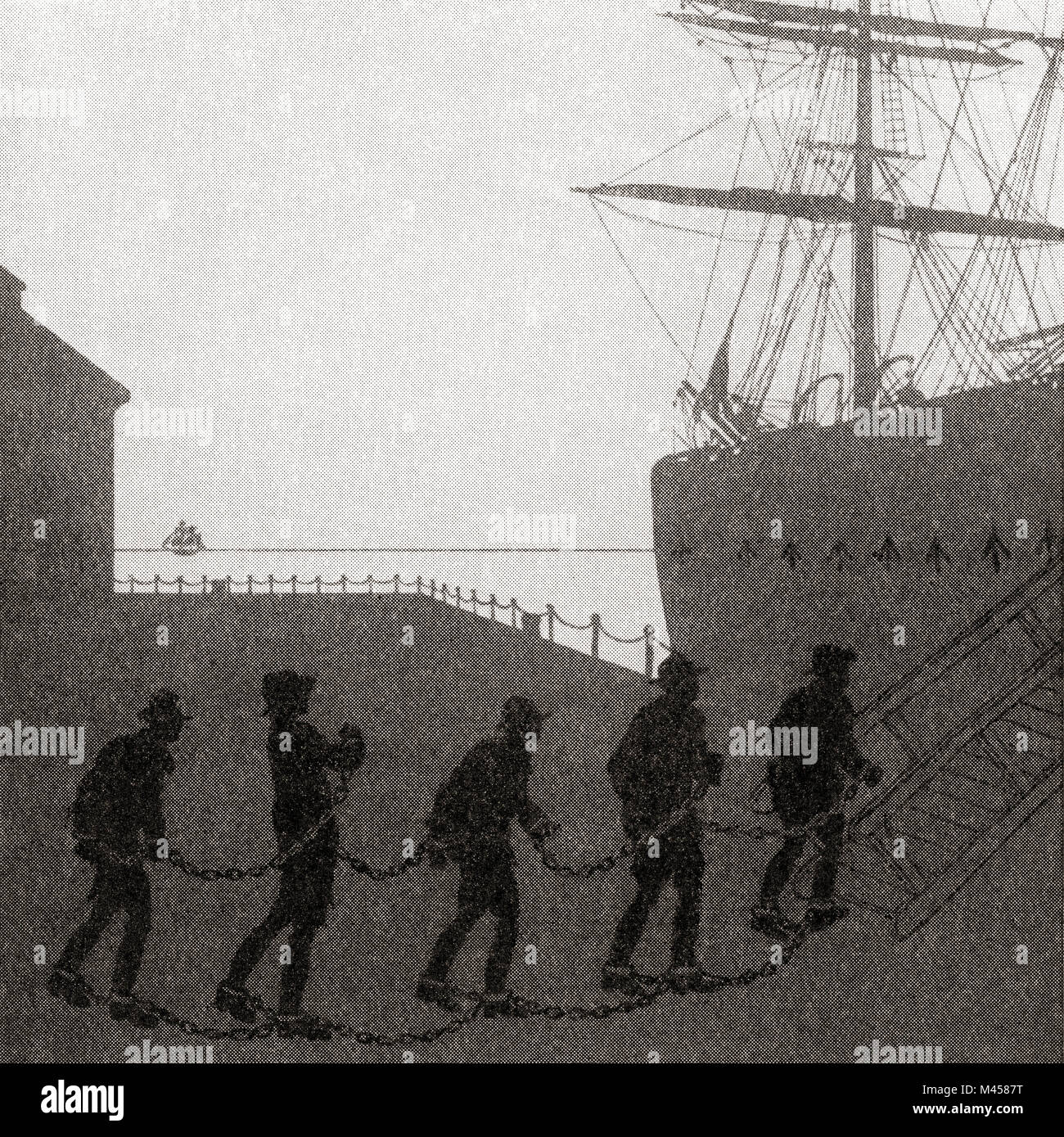 A group of chained prisoners boarding a prison ship in the 19th century. From The Martyrs of Tolpuddle, published 1934. Stock Photohttps://www.alamy.com/image-license-details/?v=1https://www.alamy.com/stock-photo-a-group-of-chained-prisoners-boarding-a-prison-ship-in-the-19th-century-174678556.html
A group of chained prisoners boarding a prison ship in the 19th century. From The Martyrs of Tolpuddle, published 1934. Stock Photohttps://www.alamy.com/image-license-details/?v=1https://www.alamy.com/stock-photo-a-group-of-chained-prisoners-boarding-a-prison-ship-in-the-19th-century-174678556.htmlRMM4587T–A group of chained prisoners boarding a prison ship in the 19th century. From The Martyrs of Tolpuddle, published 1934.
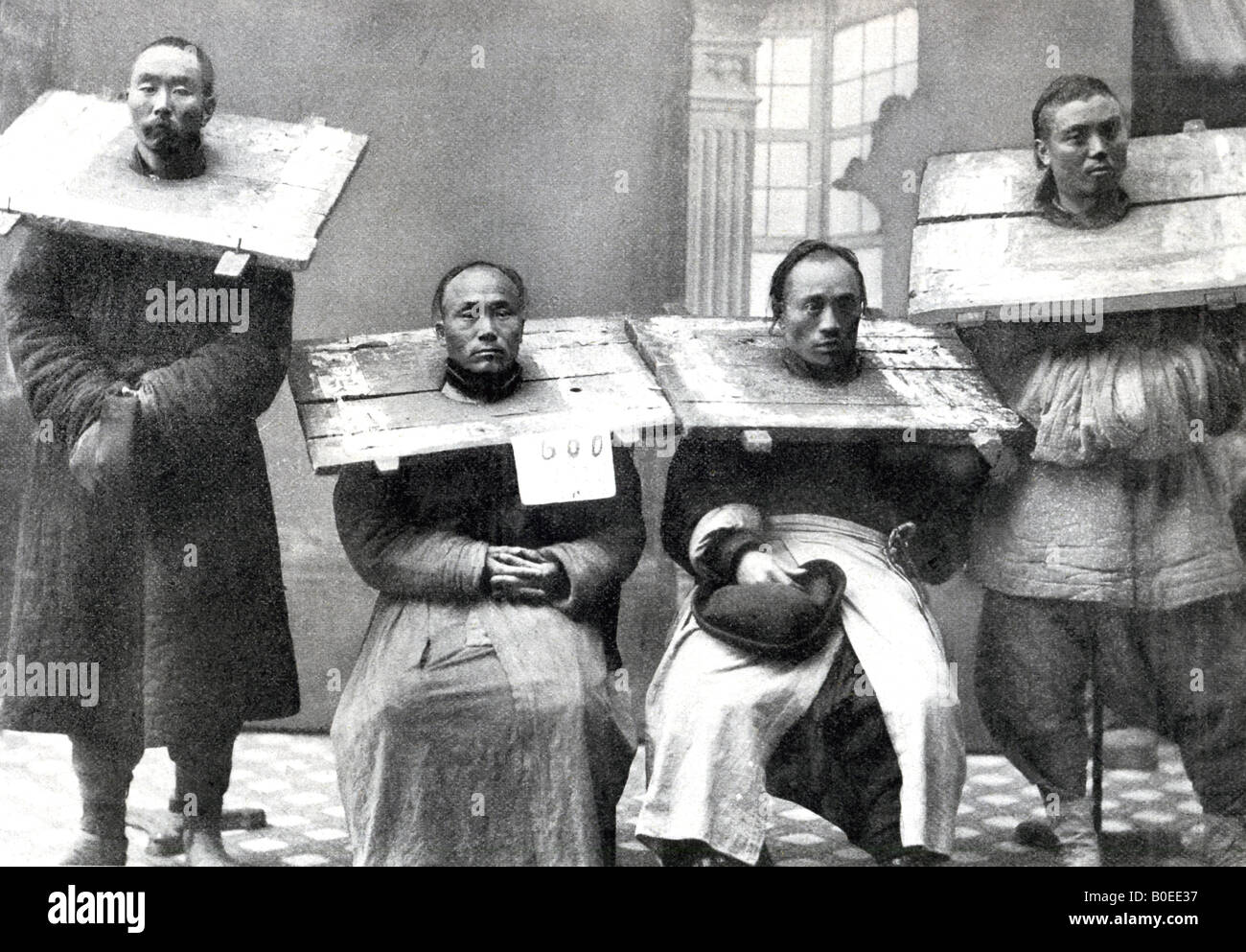 Chinese Prisoners in 1900 Stock Photohttps://www.alamy.com/image-license-details/?v=1https://www.alamy.com/stock-photo-chinese-prisoners-in-1900-17528763.html
Chinese Prisoners in 1900 Stock Photohttps://www.alamy.com/image-license-details/?v=1https://www.alamy.com/stock-photo-chinese-prisoners-in-1900-17528763.htmlRFB0EE37–Chinese Prisoners in 1900
 Engraving of Prisoners in the stocks in Lollard's Tower, England, circa 1550 Stock Photohttps://www.alamy.com/image-license-details/?v=1https://www.alamy.com/engraving-of-prisoners-in-the-stocks-in-lollards-tower-england-circa-1550-image477998858.html
Engraving of Prisoners in the stocks in Lollard's Tower, England, circa 1550 Stock Photohttps://www.alamy.com/image-license-details/?v=1https://www.alamy.com/engraving-of-prisoners-in-the-stocks-in-lollards-tower-england-circa-1550-image477998858.htmlRM2JNJMBP–Engraving of Prisoners in the stocks in Lollard's Tower, England, circa 1550
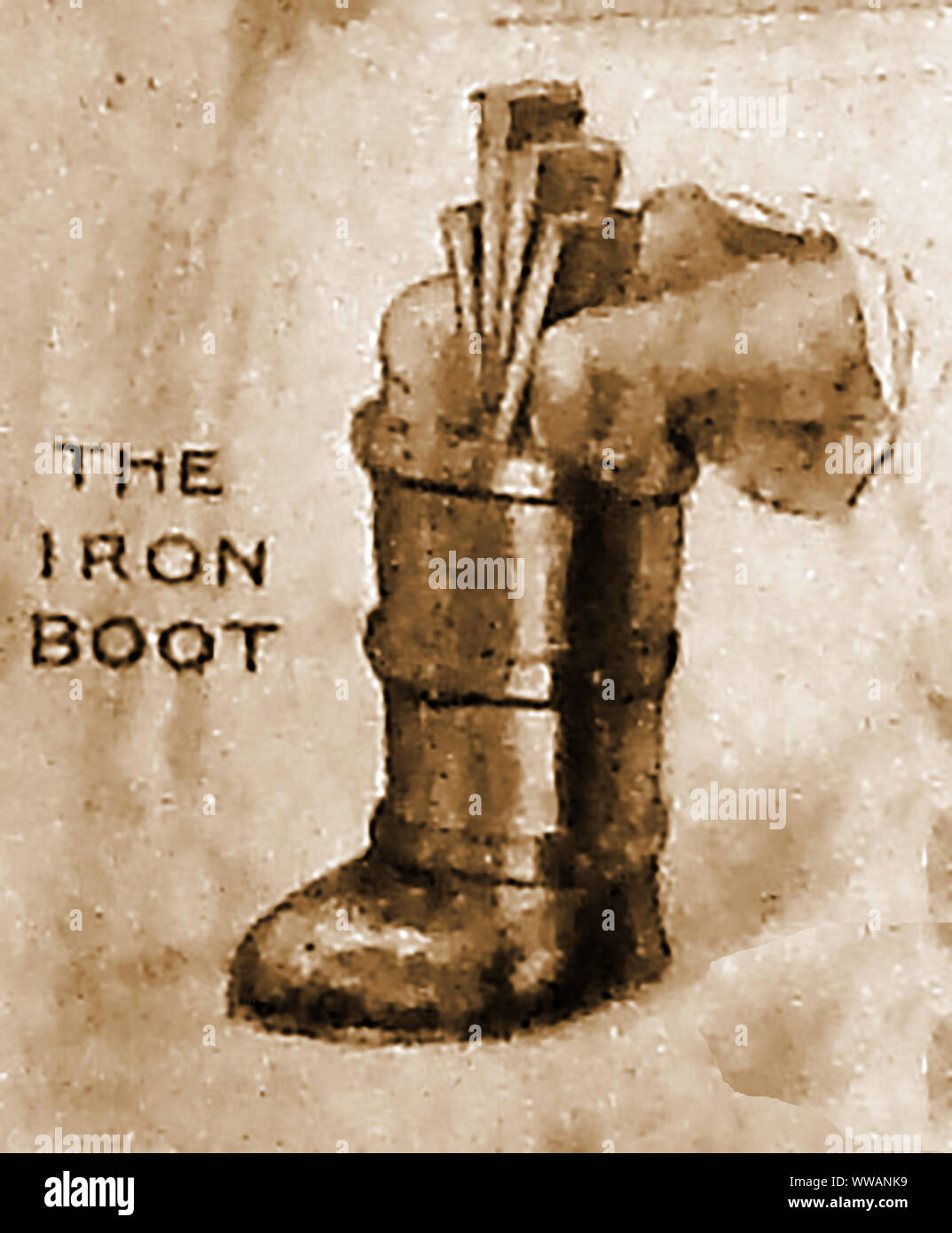 PUNISHMENTS & INSTRUMENTS OF TORTURE FROM THE PAST - The Iron Boot used to crush the legs. Variations were the Spanish Boot, The Malay Boot and the Buskin (A wet rawhide sock that was dried to crush the bones beneath) Stock Photohttps://www.alamy.com/image-license-details/?v=1https://www.alamy.com/punishments-instruments-of-torture-from-the-past-the-iron-boot-used-to-crush-the-legs-variations-were-the-spanish-boot-the-malay-boot-and-the-buskin-a-wet-rawhide-sock-that-was-dried-to-crush-the-bones-beneath-image273758445.html
PUNISHMENTS & INSTRUMENTS OF TORTURE FROM THE PAST - The Iron Boot used to crush the legs. Variations were the Spanish Boot, The Malay Boot and the Buskin (A wet rawhide sock that was dried to crush the bones beneath) Stock Photohttps://www.alamy.com/image-license-details/?v=1https://www.alamy.com/punishments-instruments-of-torture-from-the-past-the-iron-boot-used-to-crush-the-legs-variations-were-the-spanish-boot-the-malay-boot-and-the-buskin-a-wet-rawhide-sock-that-was-dried-to-crush-the-bones-beneath-image273758445.htmlRMWWANK9–PUNISHMENTS & INSTRUMENTS OF TORTURE FROM THE PAST - The Iron Boot used to crush the legs. Variations were the Spanish Boot, The Malay Boot and the Buskin (A wet rawhide sock that was dried to crush the bones beneath)
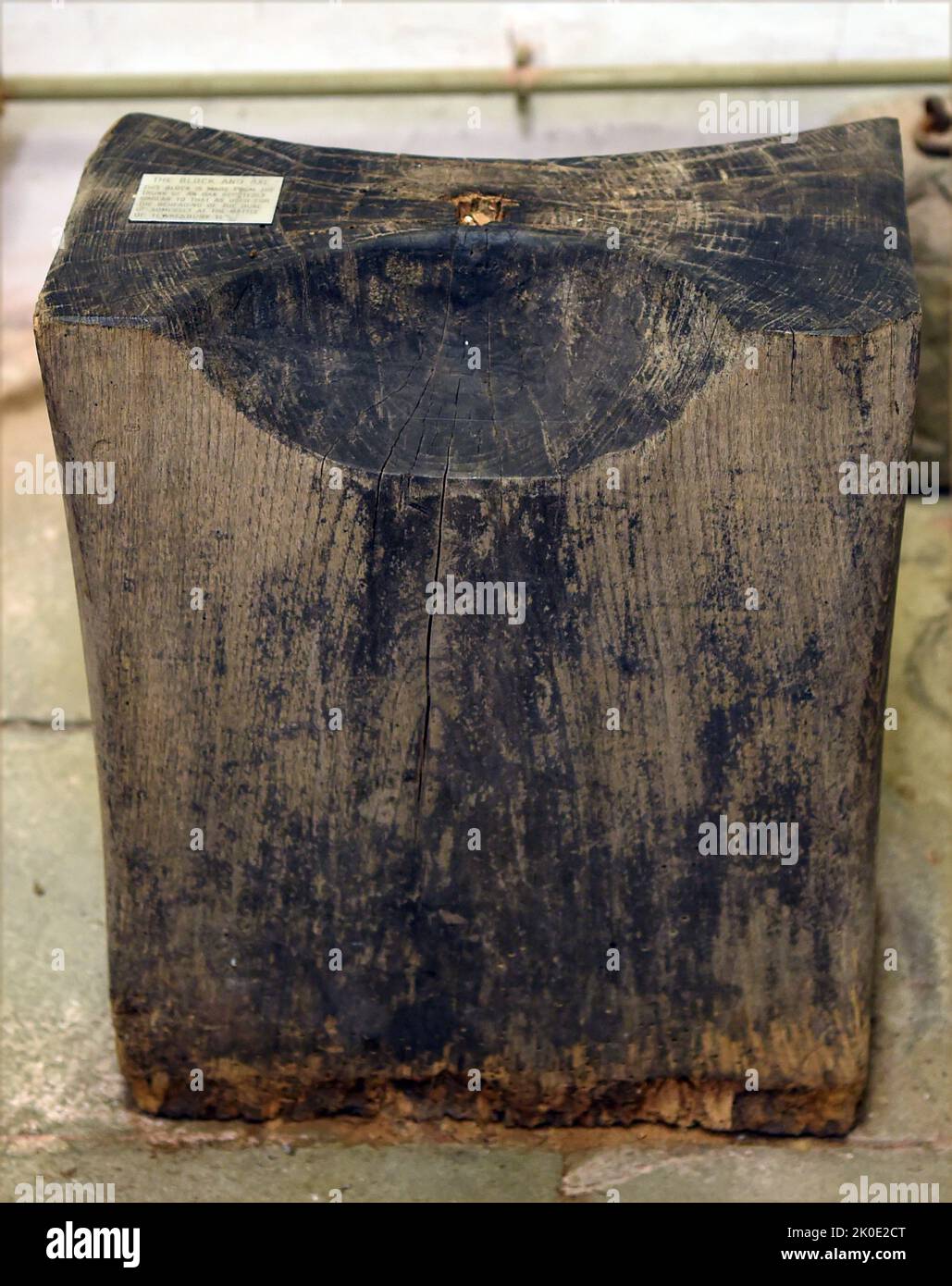 A 15th century English public execution block used to decapitate condemned prisoners. This was a form of capital punishment which members of the general public may voluntarily attend. Stock Photohttps://www.alamy.com/image-license-details/?v=1https://www.alamy.com/a-15th-century-english-public-execution-block-used-to-decapitate-condemned-prisoners-this-was-a-form-of-capital-punishment-which-members-of-the-general-public-may-voluntarily-attend-image482199560.html
A 15th century English public execution block used to decapitate condemned prisoners. This was a form of capital punishment which members of the general public may voluntarily attend. Stock Photohttps://www.alamy.com/image-license-details/?v=1https://www.alamy.com/a-15th-century-english-public-execution-block-used-to-decapitate-condemned-prisoners-this-was-a-form-of-capital-punishment-which-members-of-the-general-public-may-voluntarily-attend-image482199560.htmlRM2K0E2CT–A 15th century English public execution block used to decapitate condemned prisoners. This was a form of capital punishment which members of the general public may voluntarily attend.
 TEARING MEN/PUNISHMENT Stock Photohttps://www.alamy.com/image-license-details/?v=1https://www.alamy.com/stock-photo-tearing-menpunishment-105285765.html
TEARING MEN/PUNISHMENT Stock Photohttps://www.alamy.com/image-license-details/?v=1https://www.alamy.com/stock-photo-tearing-menpunishment-105285765.htmlRMG3851W–TEARING MEN/PUNISHMENT
 Prisoners of war rebuilding the city of Lachish. Palace of Sennacherib. Nineveh, c. 700 BC. Neo-Assyrian Empire. British Museum. London, United Kingdom. Stock Photohttps://www.alamy.com/image-license-details/?v=1https://www.alamy.com/prisoners-of-war-rebuilding-the-city-of-lachish-palace-of-sennacherib-nineveh-c-700-bc-neo-assyrian-empire-british-museum-london-united-kingdom-image179664983.html
Prisoners of war rebuilding the city of Lachish. Palace of Sennacherib. Nineveh, c. 700 BC. Neo-Assyrian Empire. British Museum. London, United Kingdom. Stock Photohttps://www.alamy.com/image-license-details/?v=1https://www.alamy.com/prisoners-of-war-rebuilding-the-city-of-lachish-palace-of-sennacherib-nineveh-c-700-bc-neo-assyrian-empire-british-museum-london-united-kingdom-image179664983.htmlRMMC8CEF–Prisoners of war rebuilding the city of Lachish. Palace of Sennacherib. Nineveh, c. 700 BC. Neo-Assyrian Empire. British Museum. London, United Kingdom.
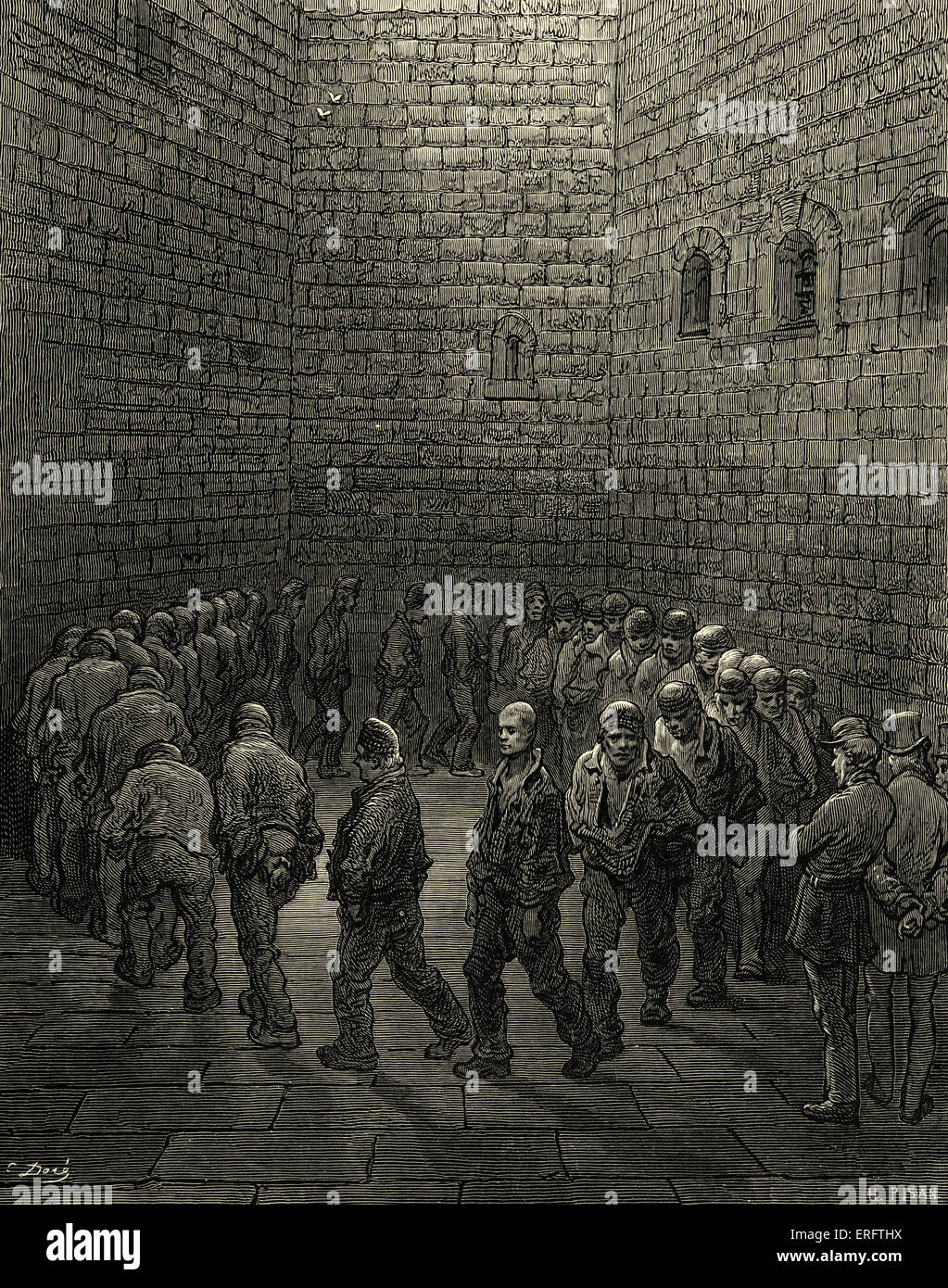 Victorian London prison, Newgate. Prisoners in the exercise yard. Engraving by Gustave Doré, from 'London, a Pilgrimage, by Stock Photohttps://www.alamy.com/image-license-details/?v=1https://www.alamy.com/stock-photo-victorian-london-prison-newgate-prisoners-in-the-exercise-yard-engraving-83327158.html
Victorian London prison, Newgate. Prisoners in the exercise yard. Engraving by Gustave Doré, from 'London, a Pilgrimage, by Stock Photohttps://www.alamy.com/image-license-details/?v=1https://www.alamy.com/stock-photo-victorian-london-prison-newgate-prisoners-in-the-exercise-yard-engraving-83327158.htmlRMERFTHX–Victorian London prison, Newgate. Prisoners in the exercise yard. Engraving by Gustave Doré, from 'London, a Pilgrimage, by
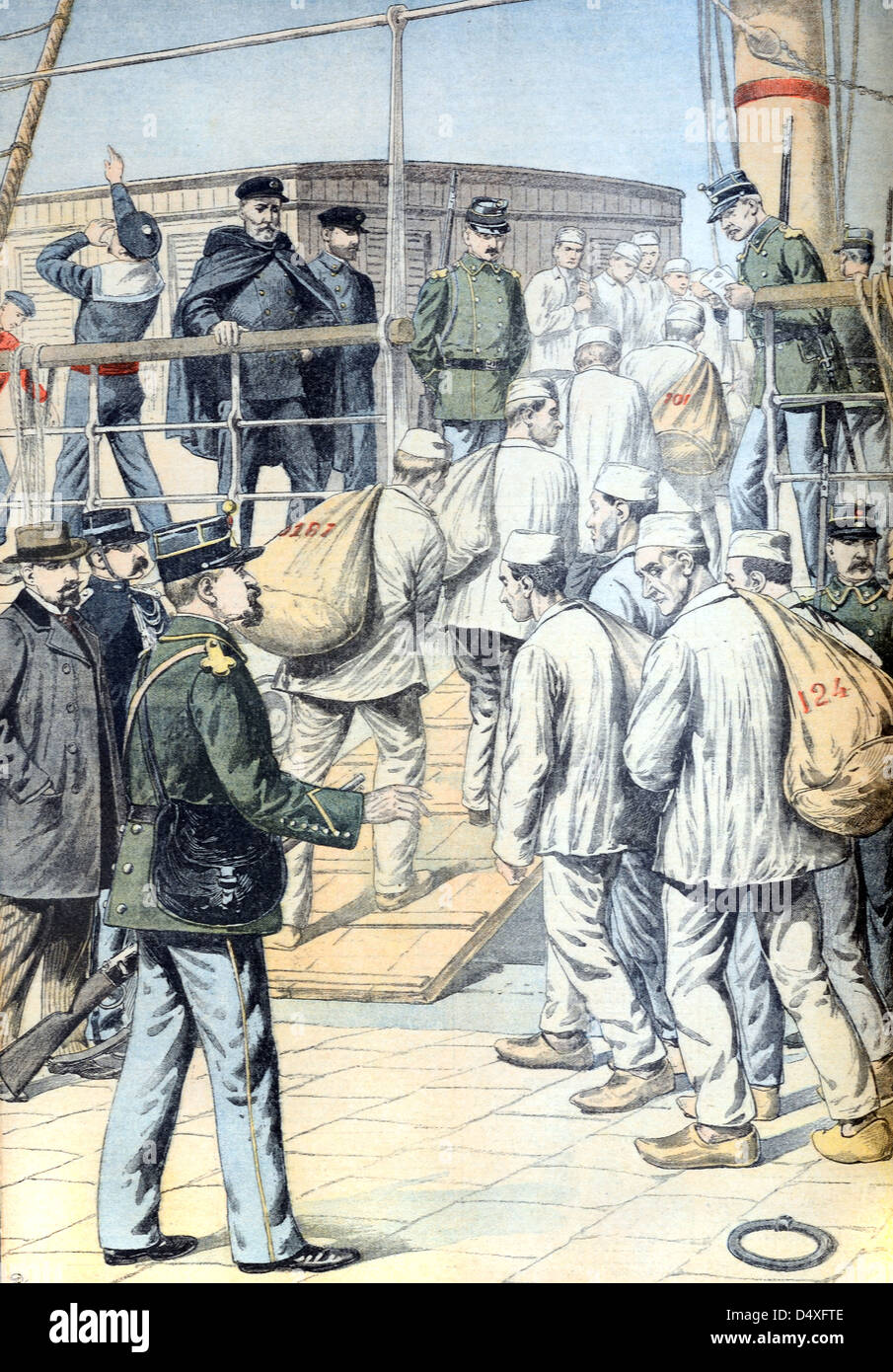 Loading Convicts on French Convict Ship for Transportation to Penal Colony (Jan 1904) Stock Photohttps://www.alamy.com/image-license-details/?v=1https://www.alamy.com/stock-photo-loading-convicts-on-french-convict-ship-for-transportation-to-penal-54672926.html
Loading Convicts on French Convict Ship for Transportation to Penal Colony (Jan 1904) Stock Photohttps://www.alamy.com/image-license-details/?v=1https://www.alamy.com/stock-photo-loading-convicts-on-french-convict-ship-for-transportation-to-penal-54672926.htmlRMD4XFTE–Loading Convicts on French Convict Ship for Transportation to Penal Colony (Jan 1904)
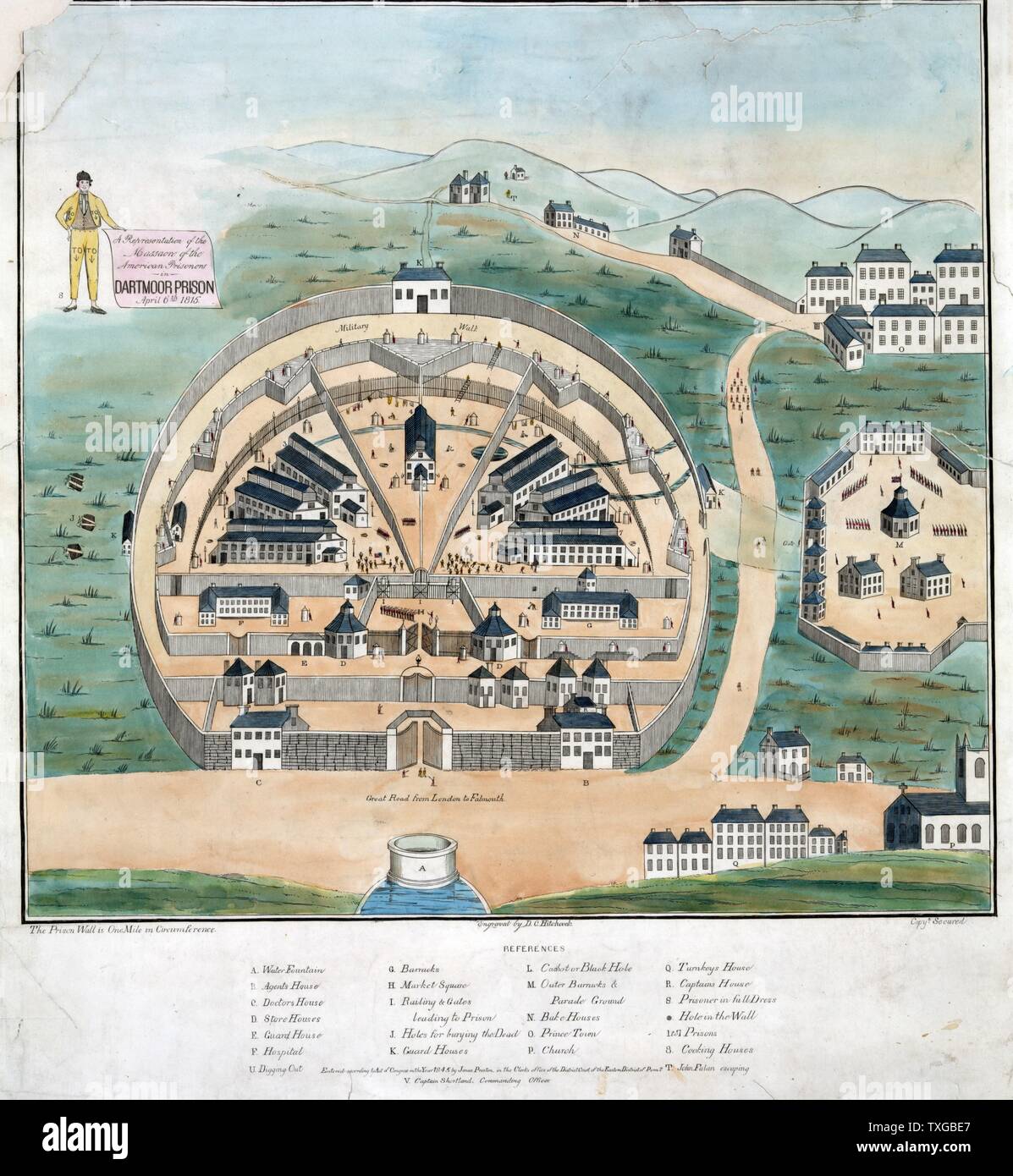 A representation of the massacre of American prisoners in Dartmoor Prison, April 6, 1815. Print shows Dartmoor Prison in Devon, England, where American prisoners of war captured by British forces, especially at sea, were confined, even after the Treaty of Ghent was signed in December 1814. Angered at being left behind, prisoners burned U.S. agent Reuben G. Beasley in effigy, which led to a confrontation with prison guards and a reduction of rations. Fearful of insubordination, guards shot the prisoners, killing 7 and wounding 31. Stock Photohttps://www.alamy.com/image-license-details/?v=1https://www.alamy.com/a-representation-of-the-massacre-of-american-prisoners-in-dartmoor-prison-april-6-1815-print-shows-dartmoor-prison-in-devon-england-where-american-prisoners-of-war-captured-by-british-forces-especially-at-sea-were-confined-even-after-the-treaty-of-ghent-was-signed-in-december-1814-angered-at-being-left-behind-prisoners-burned-us-agent-reuben-g-beasley-in-effigy-which-led-to-a-confrontation-with-prison-guards-and-a-reduction-of-rations-fearful-of-insubordination-guards-shot-the-prisoners-killing-7-and-wounding-31-image257286463.html
A representation of the massacre of American prisoners in Dartmoor Prison, April 6, 1815. Print shows Dartmoor Prison in Devon, England, where American prisoners of war captured by British forces, especially at sea, were confined, even after the Treaty of Ghent was signed in December 1814. Angered at being left behind, prisoners burned U.S. agent Reuben G. Beasley in effigy, which led to a confrontation with prison guards and a reduction of rations. Fearful of insubordination, guards shot the prisoners, killing 7 and wounding 31. Stock Photohttps://www.alamy.com/image-license-details/?v=1https://www.alamy.com/a-representation-of-the-massacre-of-american-prisoners-in-dartmoor-prison-april-6-1815-print-shows-dartmoor-prison-in-devon-england-where-american-prisoners-of-war-captured-by-british-forces-especially-at-sea-were-confined-even-after-the-treaty-of-ghent-was-signed-in-december-1814-angered-at-being-left-behind-prisoners-burned-us-agent-reuben-g-beasley-in-effigy-which-led-to-a-confrontation-with-prison-guards-and-a-reduction-of-rations-fearful-of-insubordination-guards-shot-the-prisoners-killing-7-and-wounding-31-image257286463.htmlRMTXGBE7–A representation of the massacre of American prisoners in Dartmoor Prison, April 6, 1815. Print shows Dartmoor Prison in Devon, England, where American prisoners of war captured by British forces, especially at sea, were confined, even after the Treaty of Ghent was signed in December 1814. Angered at being left behind, prisoners burned U.S. agent Reuben G. Beasley in effigy, which led to a confrontation with prison guards and a reduction of rations. Fearful of insubordination, guards shot the prisoners, killing 7 and wounding 31.
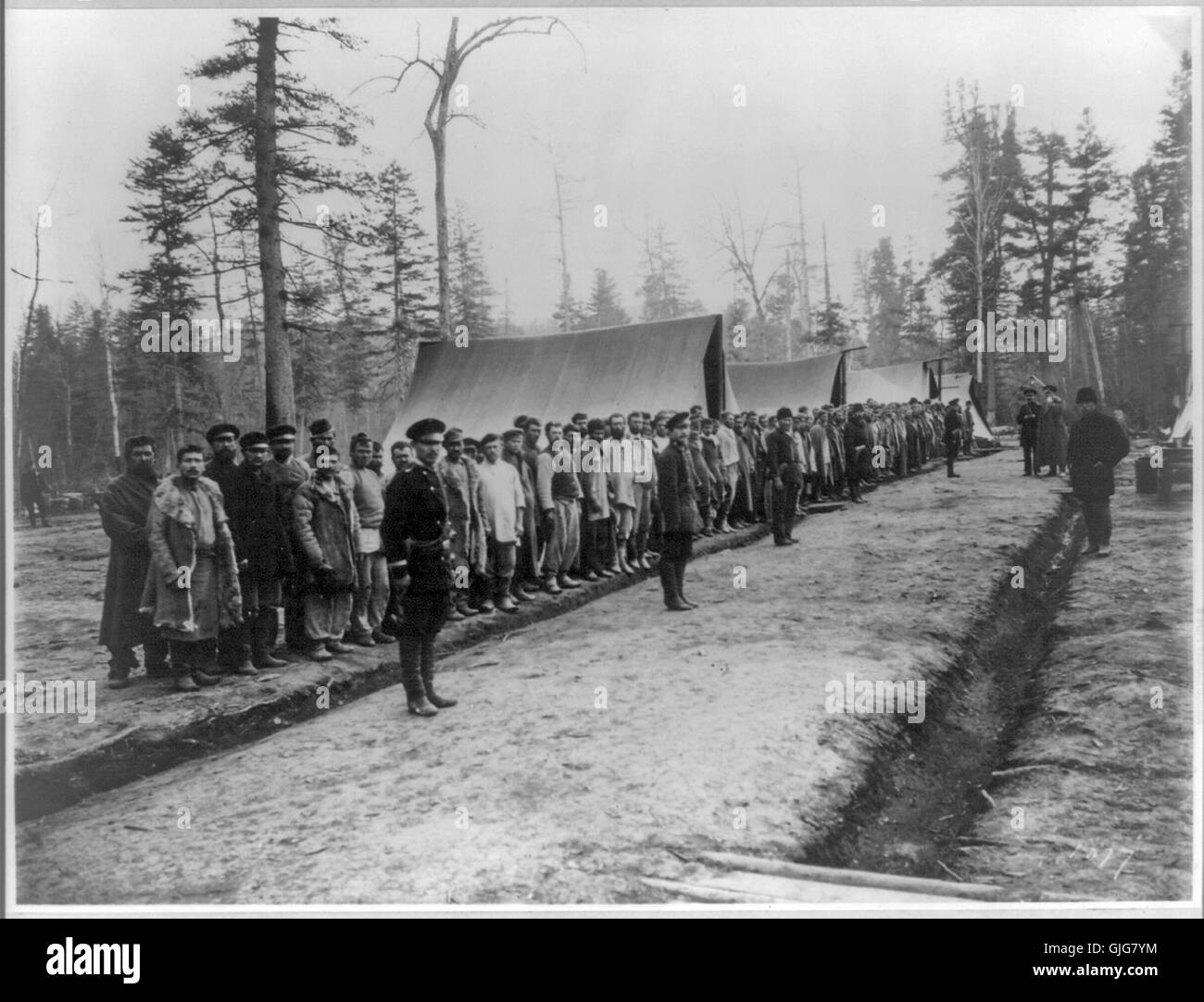 Convict railroad workers, Ussuri region, Siberia Stock Photohttps://www.alamy.com/image-license-details/?v=1https://www.alamy.com/stock-photo-convict-railroad-workers-ussuri-region-siberia-114683512.html
Convict railroad workers, Ussuri region, Siberia Stock Photohttps://www.alamy.com/image-license-details/?v=1https://www.alamy.com/stock-photo-convict-railroad-workers-ussuri-region-siberia-114683512.htmlRMGJG7YM–Convict railroad workers, Ussuri region, Siberia
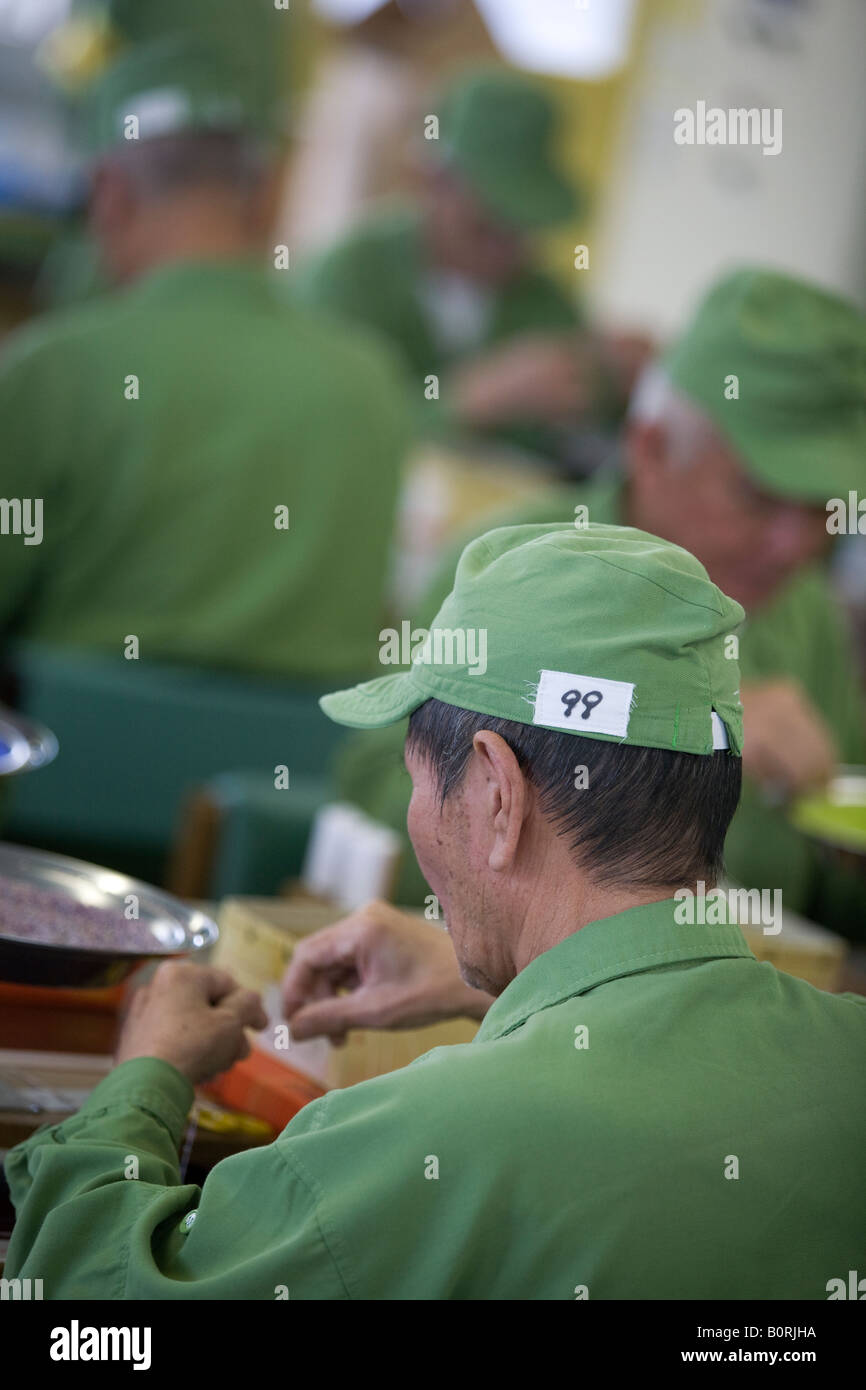 Elderly pensioner prisoners in workroom, Onomichi prison, Japan May 19th 2008 Stock Photohttps://www.alamy.com/image-license-details/?v=1https://www.alamy.com/stock-photo-elderly-pensioner-prisoners-in-workroom-onomichi-prison-japan-may-17729862.html
Elderly pensioner prisoners in workroom, Onomichi prison, Japan May 19th 2008 Stock Photohttps://www.alamy.com/image-license-details/?v=1https://www.alamy.com/stock-photo-elderly-pensioner-prisoners-in-workroom-onomichi-prison-japan-may-17729862.htmlRMB0RJHA–Elderly pensioner prisoners in workroom, Onomichi prison, Japan May 19th 2008
 South America. Brazil. Tuinamba people. Execution of prisoners of war. Engraving, 19th century. Stock Photohttps://www.alamy.com/image-license-details/?v=1https://www.alamy.com/south-america-brazil-tuinamba-people-execution-of-prisoners-of-war-engraving-19th-century-image523661065.html
South America. Brazil. Tuinamba people. Execution of prisoners of war. Engraving, 19th century. Stock Photohttps://www.alamy.com/image-license-details/?v=1https://www.alamy.com/south-america-brazil-tuinamba-people-execution-of-prisoners-of-war-engraving-19th-century-image523661065.htmlRM2NBXR0W–South America. Brazil. Tuinamba people. Execution of prisoners of war. Engraving, 19th century.
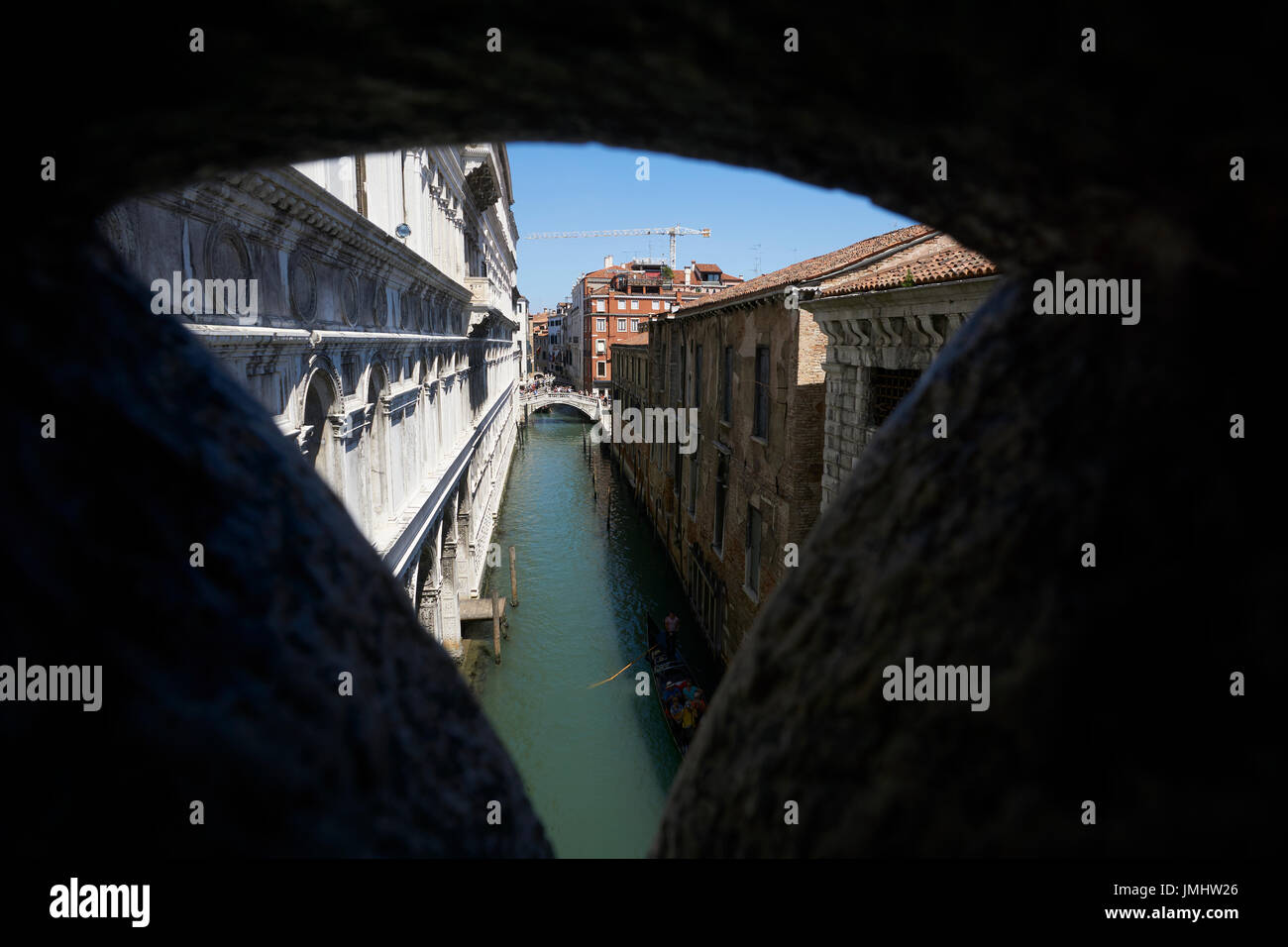 A prisoners view from the Bridge of Sighs. Stock Photohttps://www.alamy.com/image-license-details/?v=1https://www.alamy.com/a-prisoners-view-from-the-bridge-of-sighs-image150368910.html
A prisoners view from the Bridge of Sighs. Stock Photohttps://www.alamy.com/image-license-details/?v=1https://www.alamy.com/a-prisoners-view-from-the-bridge-of-sighs-image150368910.htmlRMJMHW26–A prisoners view from the Bridge of Sighs.
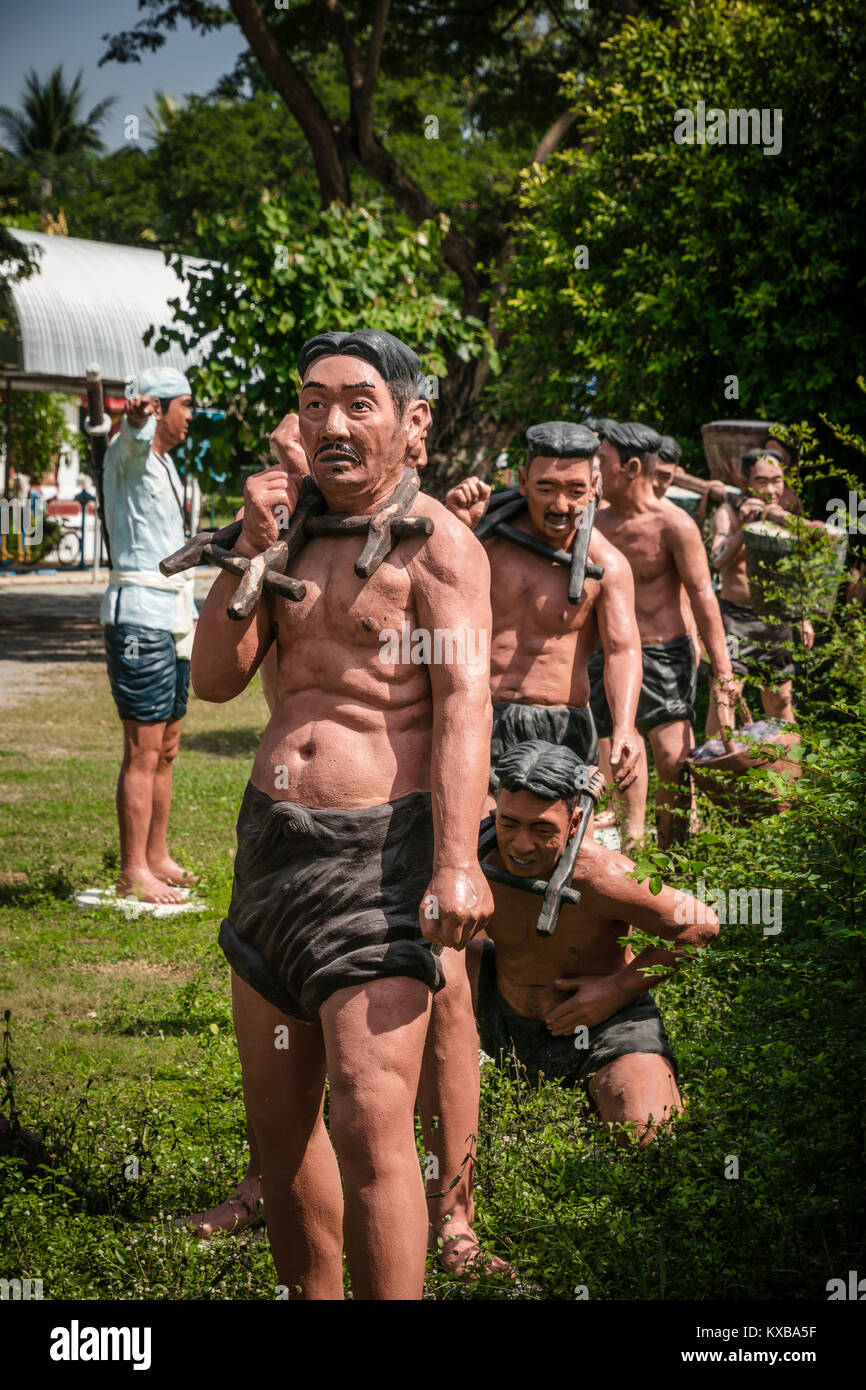 Life size statues of prisoners undergoing punishment, Bang Kung Camp, Samut Songkhram, Thailand. Stock Photohttps://www.alamy.com/image-license-details/?v=1https://www.alamy.com/stock-photo-life-size-statues-of-prisoners-undergoing-punishment-bang-kung-camp-171123835.html
Life size statues of prisoners undergoing punishment, Bang Kung Camp, Samut Songkhram, Thailand. Stock Photohttps://www.alamy.com/image-license-details/?v=1https://www.alamy.com/stock-photo-life-size-statues-of-prisoners-undergoing-punishment-bang-kung-camp-171123835.htmlRFKXBA5F–Life size statues of prisoners undergoing punishment, Bang Kung Camp, Samut Songkhram, Thailand.
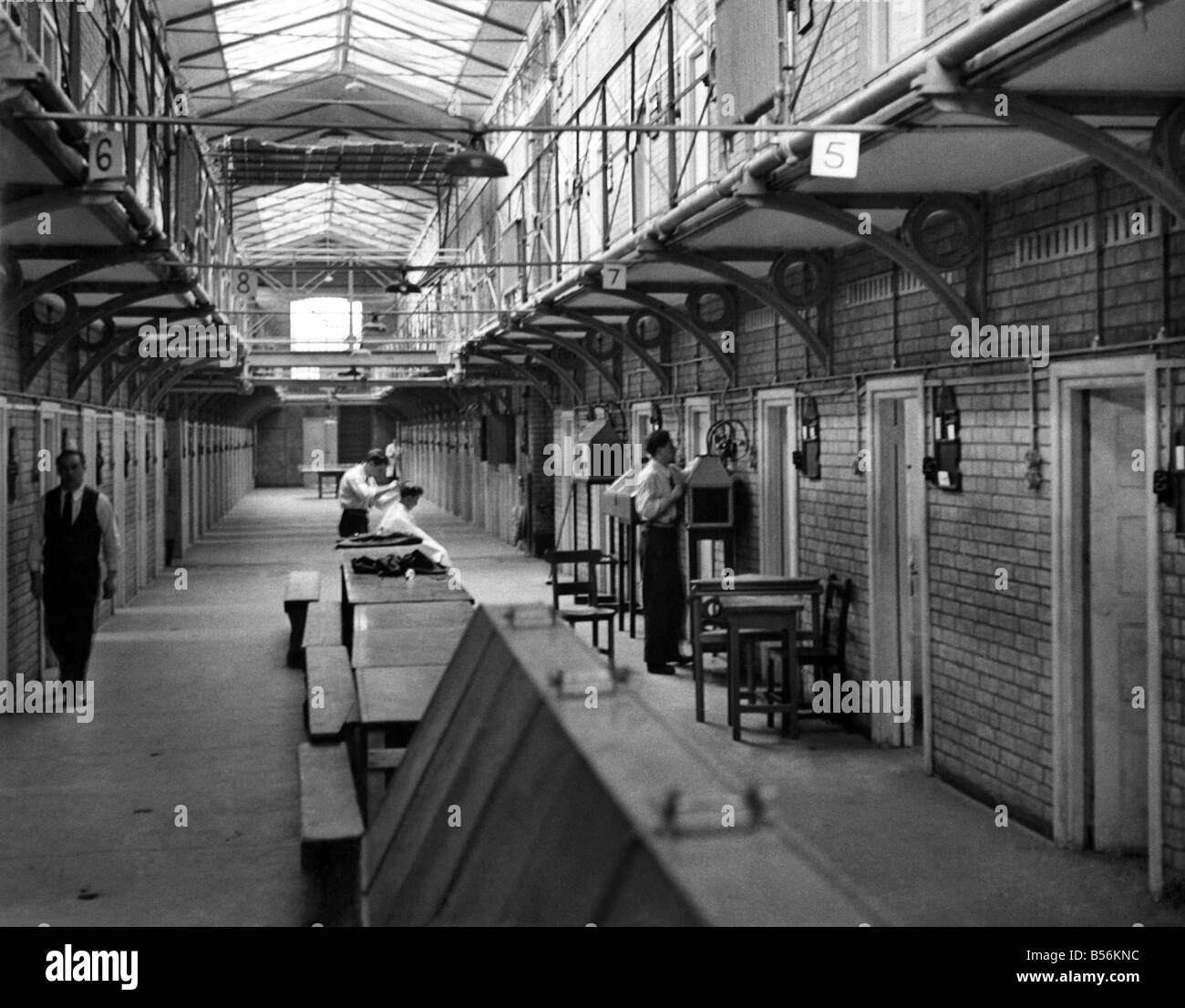 Interior of one of the wings of Strangeways prison in Manchester, showing the many cells. ;March 1956 ;P009705 Stock Photohttps://www.alamy.com/image-license-details/?v=1https://www.alamy.com/stock-photo-interior-of-one-of-the-wings-of-strangeways-prison-in-manchester-showing-20430856.html
Interior of one of the wings of Strangeways prison in Manchester, showing the many cells. ;March 1956 ;P009705 Stock Photohttps://www.alamy.com/image-license-details/?v=1https://www.alamy.com/stock-photo-interior-of-one-of-the-wings-of-strangeways-prison-in-manchester-showing-20430856.htmlRMB56KNC–Interior of one of the wings of Strangeways prison in Manchester, showing the many cells. ;March 1956 ;P009705
 Harper's Weekly: ' The papers are full of accounts of the fiendish cruelties practiced by the Neapolitan jailers upon political prisoners: we now engrave a scene of torture which will make the blood of many a reader run cold. The engraving represents the application of the tourniquet to a prisoner who is suspected of sympathy with Garibaldi. The tourniquet is a cord passed round the head, and tightened by means of a stick inserted in it till the skin cracks and the eyes start from their sockets. Stock Photohttps://www.alamy.com/image-license-details/?v=1https://www.alamy.com/harpers-weekly-the-papers-are-full-of-accounts-of-the-fiendish-cruelties-practiced-by-the-neapolitan-jailers-upon-political-prisoners-we-now-engrave-a-scene-of-torture-which-will-make-the-blood-of-many-a-reader-run-cold-the-engraving-represents-the-application-of-the-tourniquet-to-a-prisoner-who-is-suspected-of-sympathy-with-garibaldi-the-tourniquet-is-a-cord-passed-round-the-head-and-tightened-by-means-of-a-stick-inserted-in-it-till-the-skin-cracks-and-the-eyes-start-from-their-sockets-image246590078.html
Harper's Weekly: ' The papers are full of accounts of the fiendish cruelties practiced by the Neapolitan jailers upon political prisoners: we now engrave a scene of torture which will make the blood of many a reader run cold. The engraving represents the application of the tourniquet to a prisoner who is suspected of sympathy with Garibaldi. The tourniquet is a cord passed round the head, and tightened by means of a stick inserted in it till the skin cracks and the eyes start from their sockets. Stock Photohttps://www.alamy.com/image-license-details/?v=1https://www.alamy.com/harpers-weekly-the-papers-are-full-of-accounts-of-the-fiendish-cruelties-practiced-by-the-neapolitan-jailers-upon-political-prisoners-we-now-engrave-a-scene-of-torture-which-will-make-the-blood-of-many-a-reader-run-cold-the-engraving-represents-the-application-of-the-tourniquet-to-a-prisoner-who-is-suspected-of-sympathy-with-garibaldi-the-tourniquet-is-a-cord-passed-round-the-head-and-tightened-by-means-of-a-stick-inserted-in-it-till-the-skin-cracks-and-the-eyes-start-from-their-sockets-image246590078.htmlRMT9544E–Harper's Weekly: ' The papers are full of accounts of the fiendish cruelties practiced by the Neapolitan jailers upon political prisoners: we now engrave a scene of torture which will make the blood of many a reader run cold. The engraving represents the application of the tourniquet to a prisoner who is suspected of sympathy with Garibaldi. The tourniquet is a cord passed round the head, and tightened by means of a stick inserted in it till the skin cracks and the eyes start from their sockets.
 Condemned to the Pillory, Shanghai, 1864, by William Saunders - Stock Photohttps://www.alamy.com/image-license-details/?v=1https://www.alamy.com/stock-photo-condemned-to-the-pillory-shanghai-1864-by-william-saunders-49170694.html
Condemned to the Pillory, Shanghai, 1864, by William Saunders - Stock Photohttps://www.alamy.com/image-license-details/?v=1https://www.alamy.com/stock-photo-condemned-to-the-pillory-shanghai-1864-by-william-saunders-49170694.htmlRMCRYWM6–Condemned to the Pillory, Shanghai, 1864, by William Saunders -
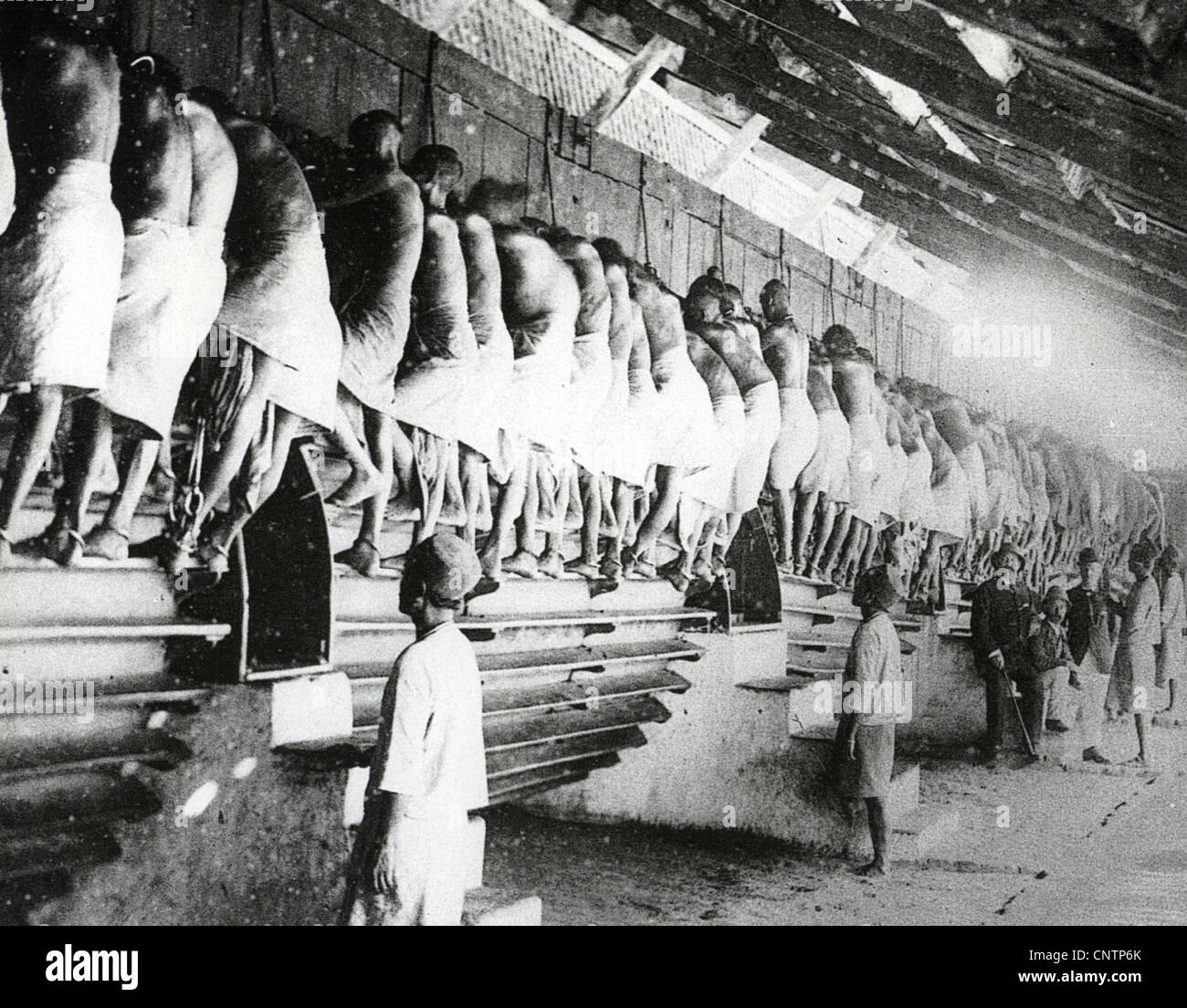 BURMESE PRISONERS on a treadmill about 1890 when Burma was a British colony Stock Photohttps://www.alamy.com/image-license-details/?v=1https://www.alamy.com/stock-photo-burmese-prisoners-on-a-treadmill-about-1890-when-burma-was-a-british-47872795.html
BURMESE PRISONERS on a treadmill about 1890 when Burma was a British colony Stock Photohttps://www.alamy.com/image-license-details/?v=1https://www.alamy.com/stock-photo-burmese-prisoners-on-a-treadmill-about-1890-when-burma-was-a-british-47872795.htmlRMCNTP6K–BURMESE PRISONERS on a treadmill about 1890 when Burma was a British colony
 Rwandan prisoners accused of genocide working in plantations, Africa Stock Photohttps://www.alamy.com/image-license-details/?v=1https://www.alamy.com/stock-photo-rwandan-prisoners-accused-of-genocide-working-in-plantations-africa-11253595.html
Rwandan prisoners accused of genocide working in plantations, Africa Stock Photohttps://www.alamy.com/image-license-details/?v=1https://www.alamy.com/stock-photo-rwandan-prisoners-accused-of-genocide-working-in-plantations-africa-11253595.htmlRMA5AREM–Rwandan prisoners accused of genocide working in plantations, Africa
 Prison concept with dark messy cell blocks with people inside against white background. 3D Illustration Stock Photohttps://www.alamy.com/image-license-details/?v=1https://www.alamy.com/prison-concept-with-dark-messy-cell-blocks-with-people-inside-against-white-background-3d-illustration-image455363226.html
Prison concept with dark messy cell blocks with people inside against white background. 3D Illustration Stock Photohttps://www.alamy.com/image-license-details/?v=1https://www.alamy.com/prison-concept-with-dark-messy-cell-blocks-with-people-inside-against-white-background-3d-illustration-image455363226.htmlRF2HCRGCA–Prison concept with dark messy cell blocks with people inside against white background. 3D Illustration
 Sketches in Siberia Courtyard of the Prison for Criminals at Krasnoiarsk: Prisoners on Their Arrival at Krasnoiarsk Unloading Sledges Stock Photohttps://www.alamy.com/image-license-details/?v=1https://www.alamy.com/sketches-in-siberia-courtyard-of-the-prison-for-criminals-at-krasnoiarsk-prisoners-on-their-arrival-at-krasnoiarsk-unloading-sledges-image240554773.html
Sketches in Siberia Courtyard of the Prison for Criminals at Krasnoiarsk: Prisoners on Their Arrival at Krasnoiarsk Unloading Sledges Stock Photohttps://www.alamy.com/image-license-details/?v=1https://www.alamy.com/sketches-in-siberia-courtyard-of-the-prison-for-criminals-at-krasnoiarsk-prisoners-on-their-arrival-at-krasnoiarsk-unloading-sledges-image240554773.htmlRMRYA61W–Sketches in Siberia Courtyard of the Prison for Criminals at Krasnoiarsk: Prisoners on Their Arrival at Krasnoiarsk Unloading Sledges
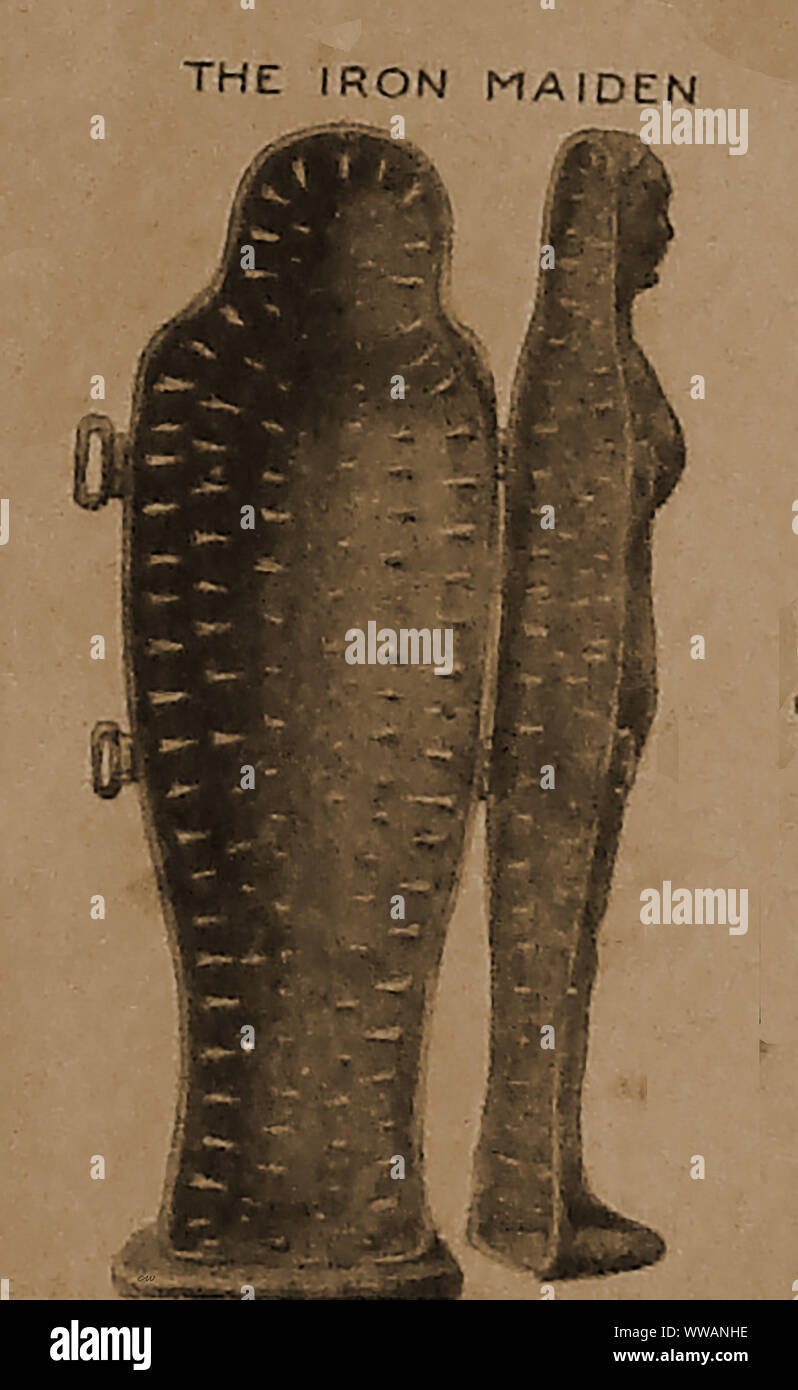 PUNISHMENTS & INSTRUMENTS OF TORTURE FROM THE PAST - The Iron Maiden, An often spike filled, hinged, body shaped metal coffin for torture or execution. Also known as the Chokey or Choky, The Virgin (a reference to the Virgin Mary), and the Jungfer (German for spinster) Some scholars dispute it was ever in common usage. Stock Photohttps://www.alamy.com/image-license-details/?v=1https://www.alamy.com/punishments-instruments-of-torture-from-the-past-the-iron-maiden-an-often-spike-filled-hinged-body-shaped-metal-coffin-for-torture-or-execution-also-known-as-the-chokey-or-choky-the-virgin-a-reference-to-the-virgin-mary-and-the-jungfer-german-for-spinster-some-scholars-dispute-it-was-ever-in-common-usage-image273758394.html
PUNISHMENTS & INSTRUMENTS OF TORTURE FROM THE PAST - The Iron Maiden, An often spike filled, hinged, body shaped metal coffin for torture or execution. Also known as the Chokey or Choky, The Virgin (a reference to the Virgin Mary), and the Jungfer (German for spinster) Some scholars dispute it was ever in common usage. Stock Photohttps://www.alamy.com/image-license-details/?v=1https://www.alamy.com/punishments-instruments-of-torture-from-the-past-the-iron-maiden-an-often-spike-filled-hinged-body-shaped-metal-coffin-for-torture-or-execution-also-known-as-the-chokey-or-choky-the-virgin-a-reference-to-the-virgin-mary-and-the-jungfer-german-for-spinster-some-scholars-dispute-it-was-ever-in-common-usage-image273758394.htmlRMWWANHE–PUNISHMENTS & INSTRUMENTS OF TORTURE FROM THE PAST - The Iron Maiden, An often spike filled, hinged, body shaped metal coffin for torture or execution. Also known as the Chokey or Choky, The Virgin (a reference to the Virgin Mary), and the Jungfer (German for spinster) Some scholars dispute it was ever in common usage.
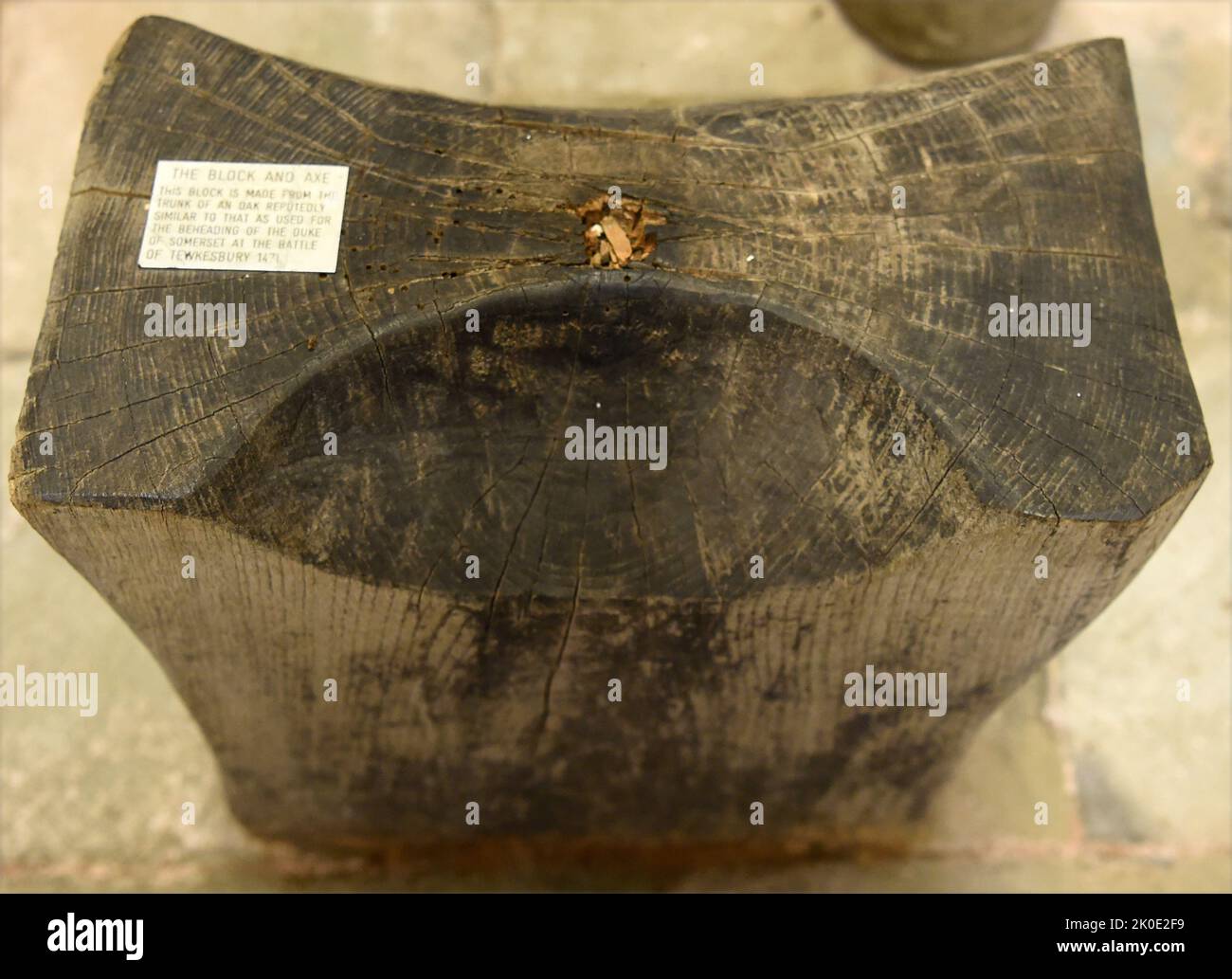 A 15th century English public execution block used to decapitate condemned prisoners. This was a form of capital punishment which members of the general public may voluntarily attend. Stock Photohttps://www.alamy.com/image-license-details/?v=1https://www.alamy.com/a-15th-century-english-public-execution-block-used-to-decapitate-condemned-prisoners-this-was-a-form-of-capital-punishment-which-members-of-the-general-public-may-voluntarily-attend-image482199629.html
A 15th century English public execution block used to decapitate condemned prisoners. This was a form of capital punishment which members of the general public may voluntarily attend. Stock Photohttps://www.alamy.com/image-license-details/?v=1https://www.alamy.com/a-15th-century-english-public-execution-block-used-to-decapitate-condemned-prisoners-this-was-a-form-of-capital-punishment-which-members-of-the-general-public-may-voluntarily-attend-image482199629.htmlRM2K0E2F9–A 15th century English public execution block used to decapitate condemned prisoners. This was a form of capital punishment which members of the general public may voluntarily attend.
 Prisoners wearing the Cangue, China Stock Photohttps://www.alamy.com/image-license-details/?v=1https://www.alamy.com/prisoners-wearing-the-cangue-china-image66166409.html
Prisoners wearing the Cangue, China Stock Photohttps://www.alamy.com/image-license-details/?v=1https://www.alamy.com/prisoners-wearing-the-cangue-china-image66166409.htmlRMDRJ3X1–Prisoners wearing the Cangue, China
 History of Spain. Madrid. The official inauguration of the 'Cárcel Modelo' on 20 December 1883 led to the transfer of all the inmates of the The Saladero Prison (Cárcel del Saladero, also known as Cárcel de Villa). The former 'Saladero' (from its original use for bacon salting), used as a correctional prison in unhealthy conditions, was converted into a men's prison by virtue of a decree issued in mid-1831 by King Ferdinand VII. Transfer of the prisoners from the Saladero Prison to the new Cárcel Modelo: first group, in the early hours of 9 May 1884. It was carried out in groups of 30, tied wi Stock Photohttps://www.alamy.com/image-license-details/?v=1https://www.alamy.com/history-of-spain-madrid-the-official-inauguration-of-the-crcel-modelo-on-20-december-1883-led-to-the-transfer-of-all-the-inmates-of-the-the-saladero-prison-crcel-del-saladero-also-known-as-crcel-de-villa-the-former-saladero-from-its-original-use-for-bacon-salting-used-as-a-correctional-prison-in-unhealthy-conditions-was-converted-into-a-mens-prison-by-virtue-of-a-decree-issued-in-mid-1831-by-king-ferdinand-vii-transfer-of-the-prisoners-from-the-saladero-prison-to-the-new-crcel-modelo-first-group-in-the-early-hours-of-9-may-1884-it-was-carried-out-in-groups-of-30-tied-wi-image624011552.html
History of Spain. Madrid. The official inauguration of the 'Cárcel Modelo' on 20 December 1883 led to the transfer of all the inmates of the The Saladero Prison (Cárcel del Saladero, also known as Cárcel de Villa). The former 'Saladero' (from its original use for bacon salting), used as a correctional prison in unhealthy conditions, was converted into a men's prison by virtue of a decree issued in mid-1831 by King Ferdinand VII. Transfer of the prisoners from the Saladero Prison to the new Cárcel Modelo: first group, in the early hours of 9 May 1884. It was carried out in groups of 30, tied wi Stock Photohttps://www.alamy.com/image-license-details/?v=1https://www.alamy.com/history-of-spain-madrid-the-official-inauguration-of-the-crcel-modelo-on-20-december-1883-led-to-the-transfer-of-all-the-inmates-of-the-the-saladero-prison-crcel-del-saladero-also-known-as-crcel-de-villa-the-former-saladero-from-its-original-use-for-bacon-salting-used-as-a-correctional-prison-in-unhealthy-conditions-was-converted-into-a-mens-prison-by-virtue-of-a-decree-issued-in-mid-1831-by-king-ferdinand-vii-transfer-of-the-prisoners-from-the-saladero-prison-to-the-new-crcel-modelo-first-group-in-the-early-hours-of-9-may-1884-it-was-carried-out-in-groups-of-30-tied-wi-image624011552.htmlRM2Y7652T–History of Spain. Madrid. The official inauguration of the 'Cárcel Modelo' on 20 December 1883 led to the transfer of all the inmates of the The Saladero Prison (Cárcel del Saladero, also known as Cárcel de Villa). The former 'Saladero' (from its original use for bacon salting), used as a correctional prison in unhealthy conditions, was converted into a men's prison by virtue of a decree issued in mid-1831 by King Ferdinand VII. Transfer of the prisoners from the Saladero Prison to the new Cárcel Modelo: first group, in the early hours of 9 May 1884. It was carried out in groups of 30, tied wi